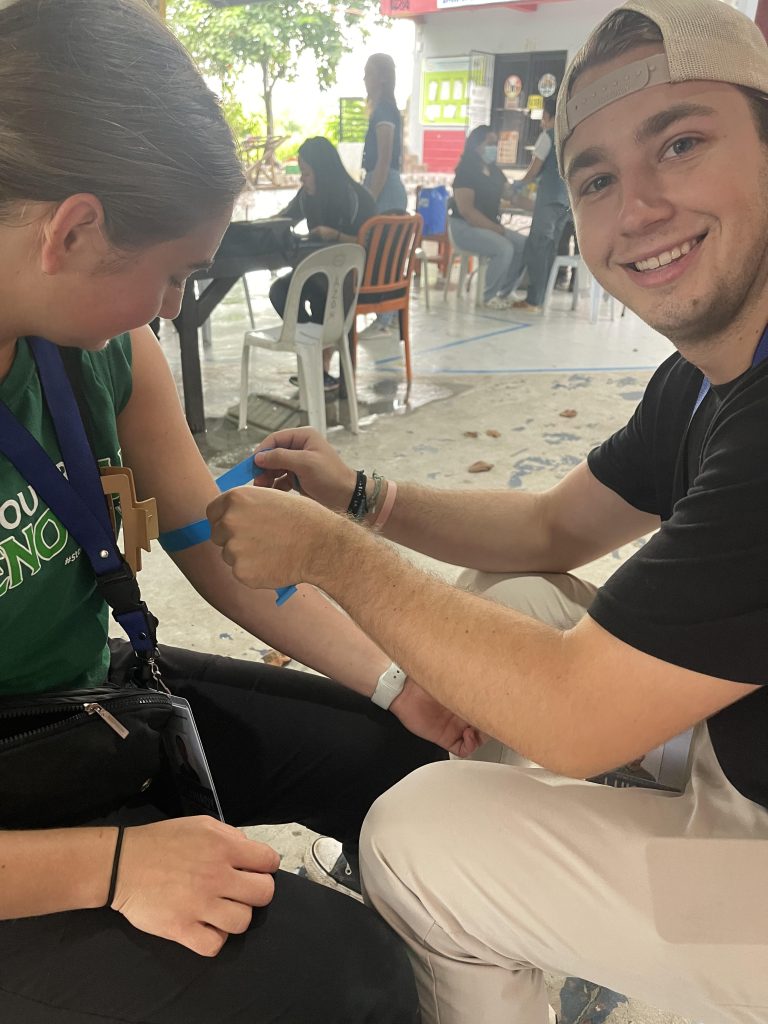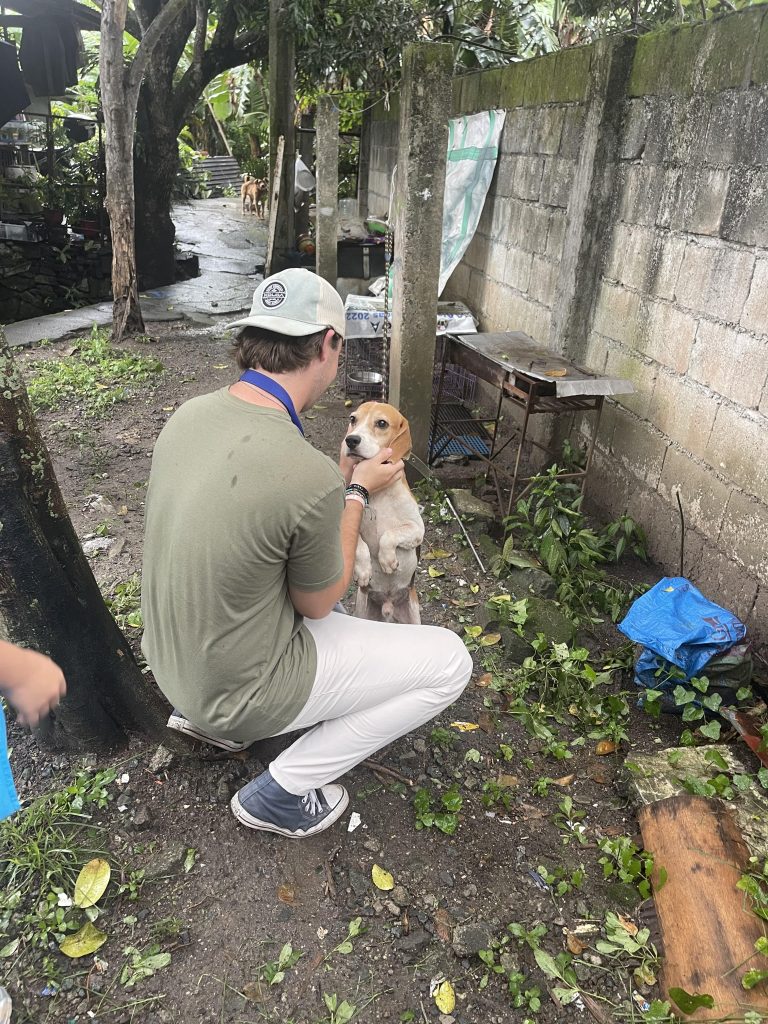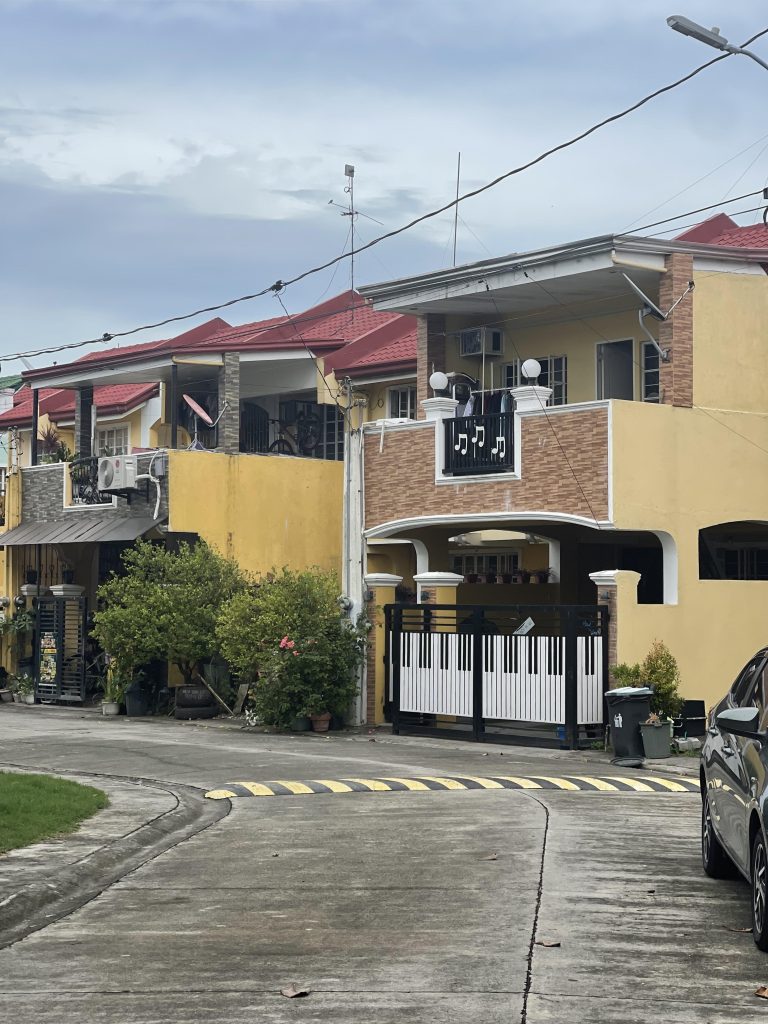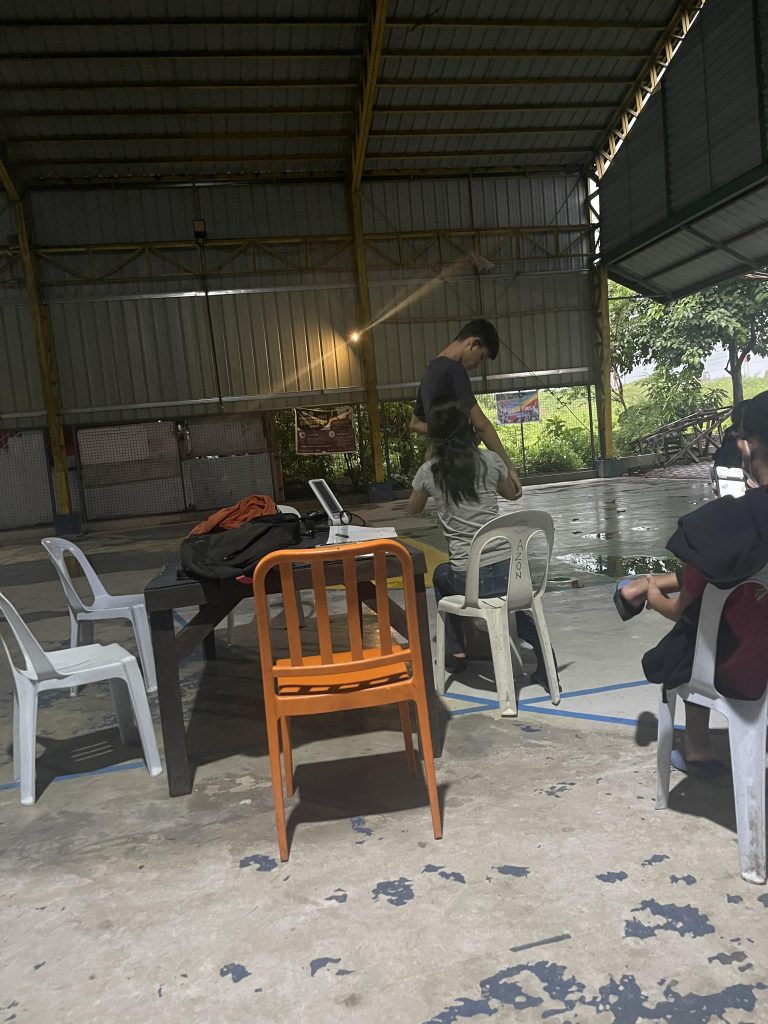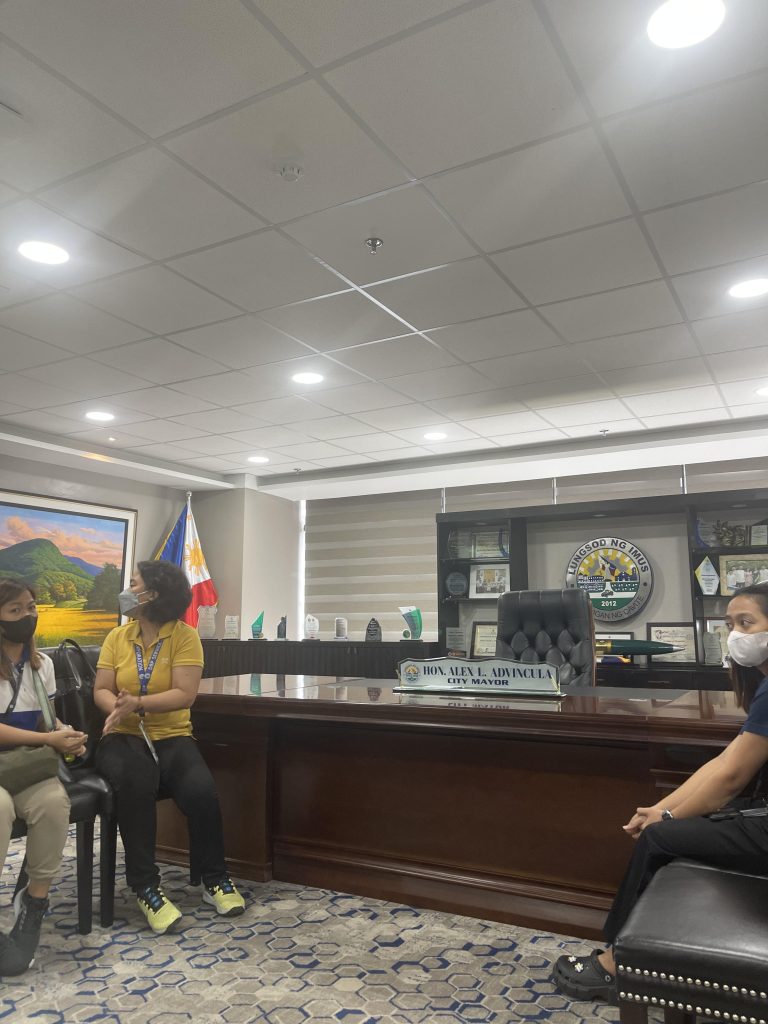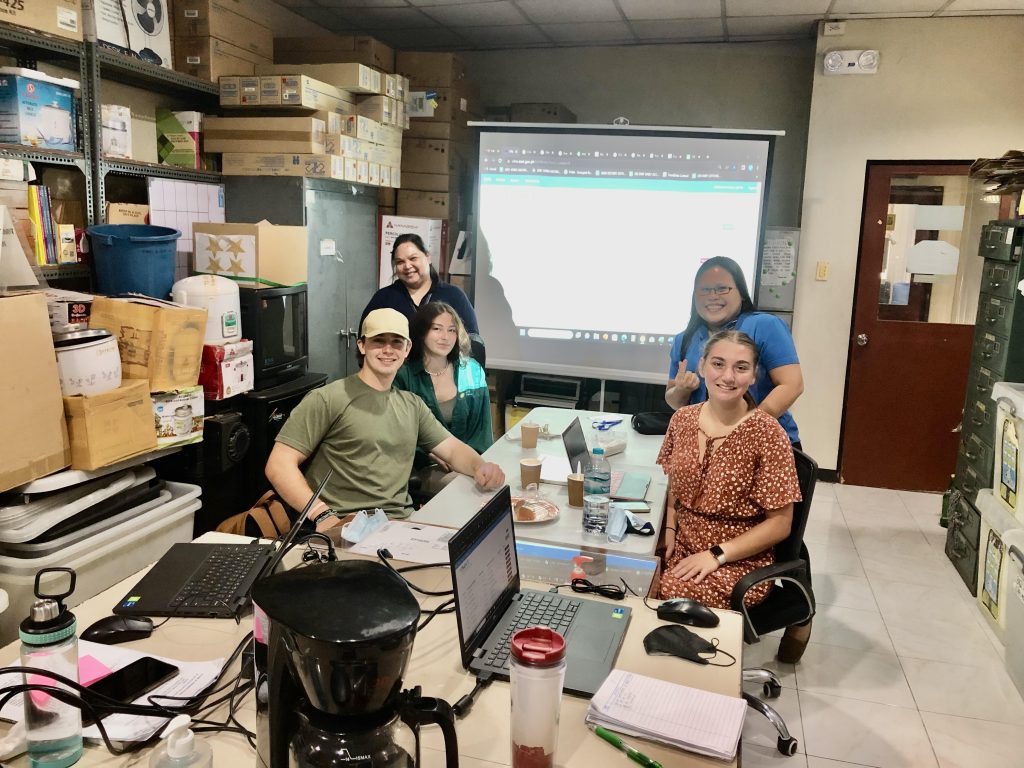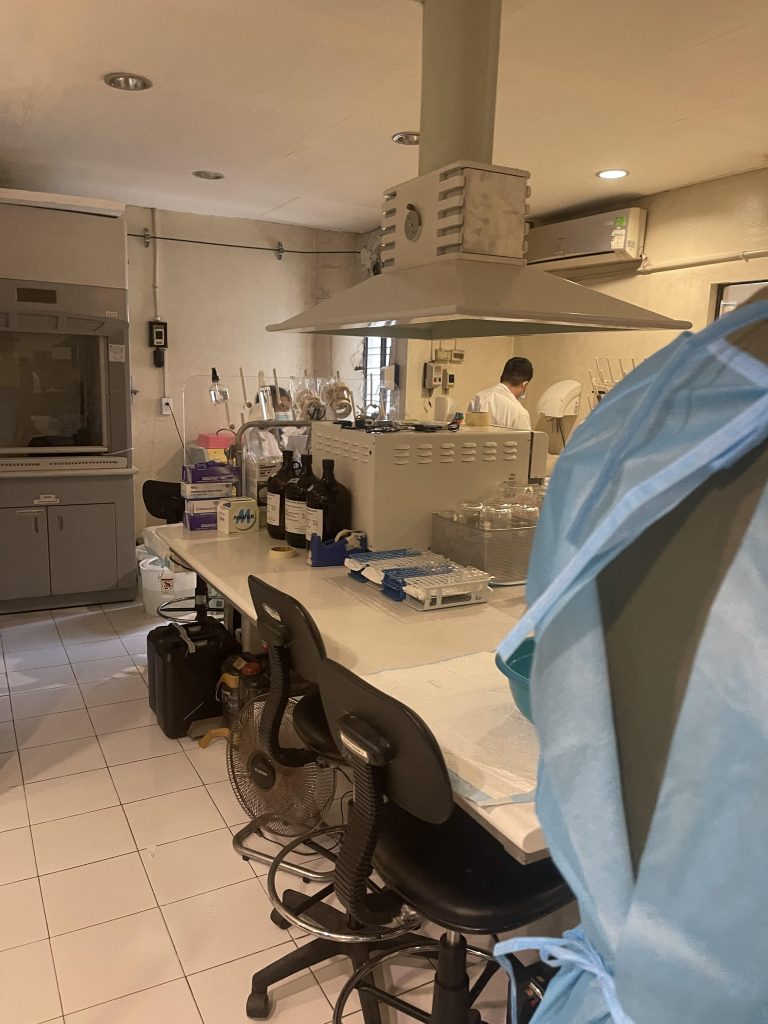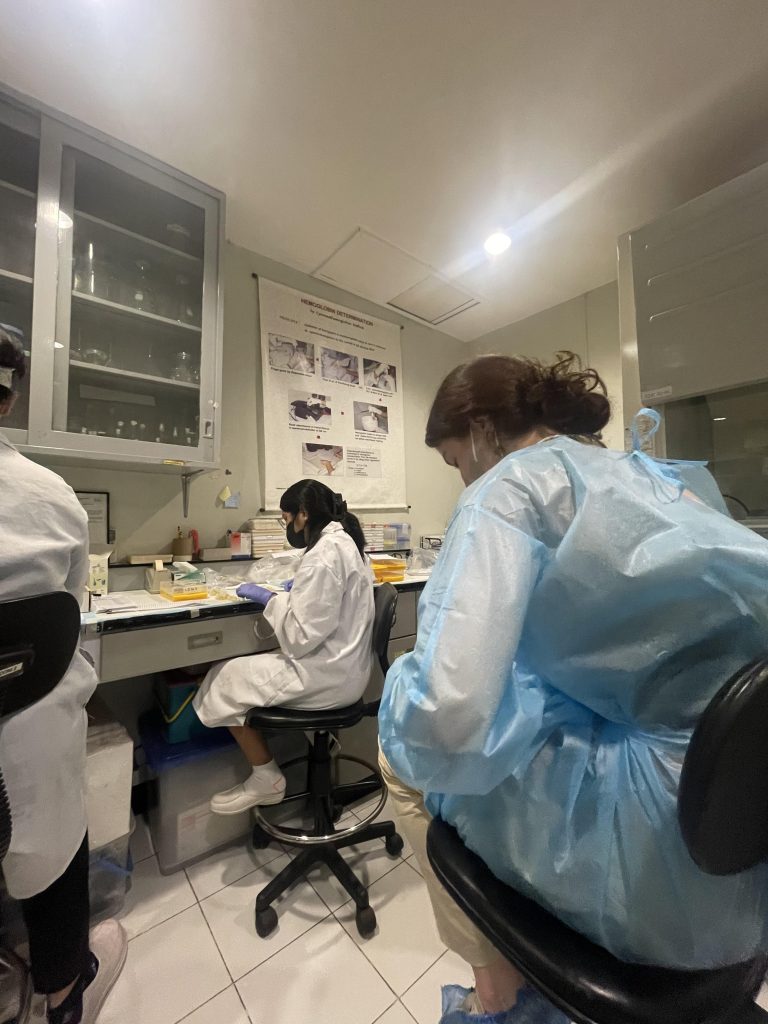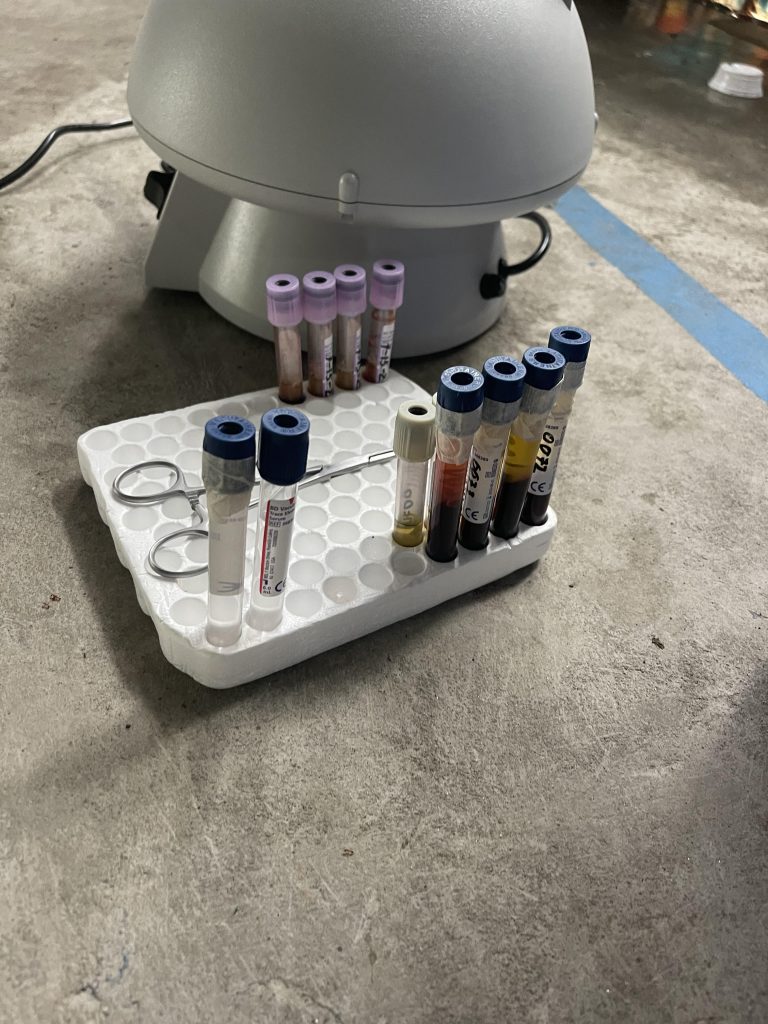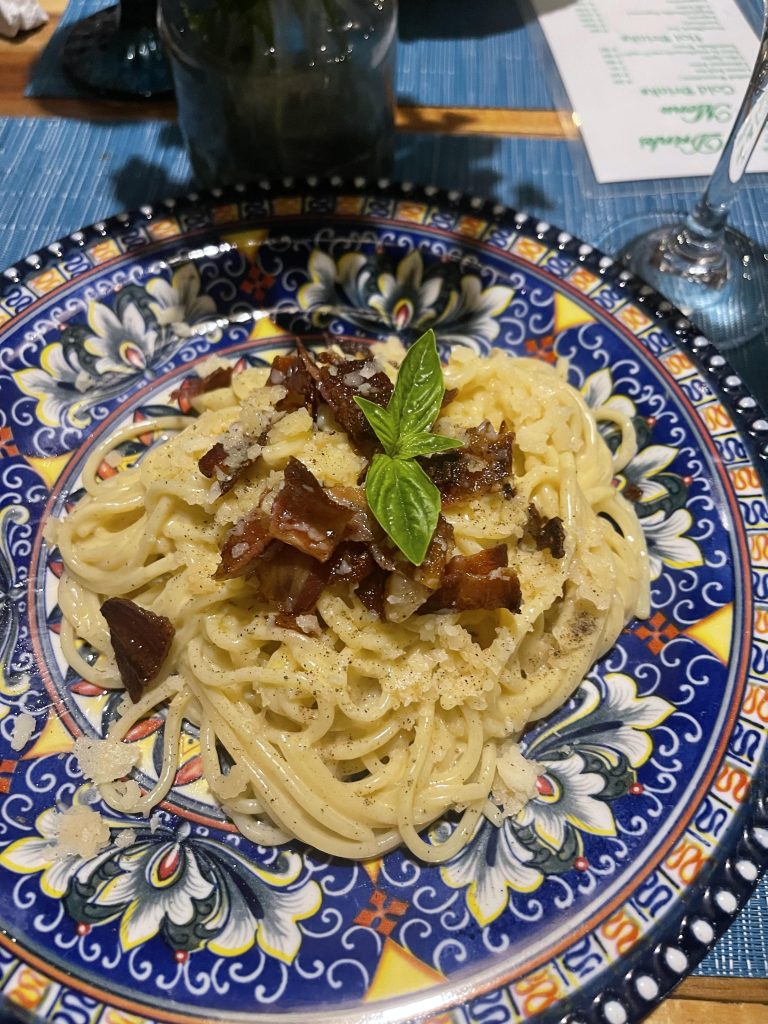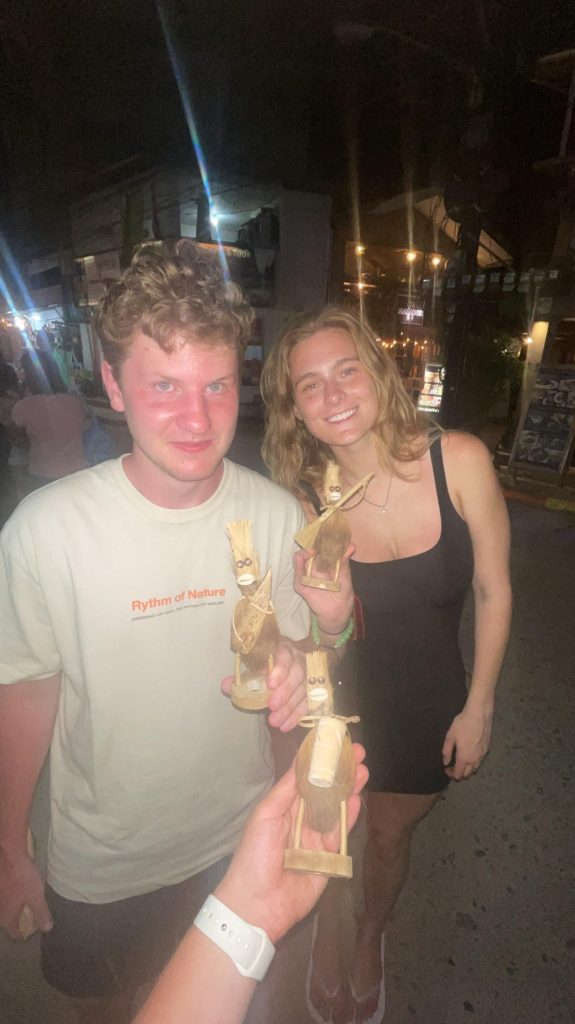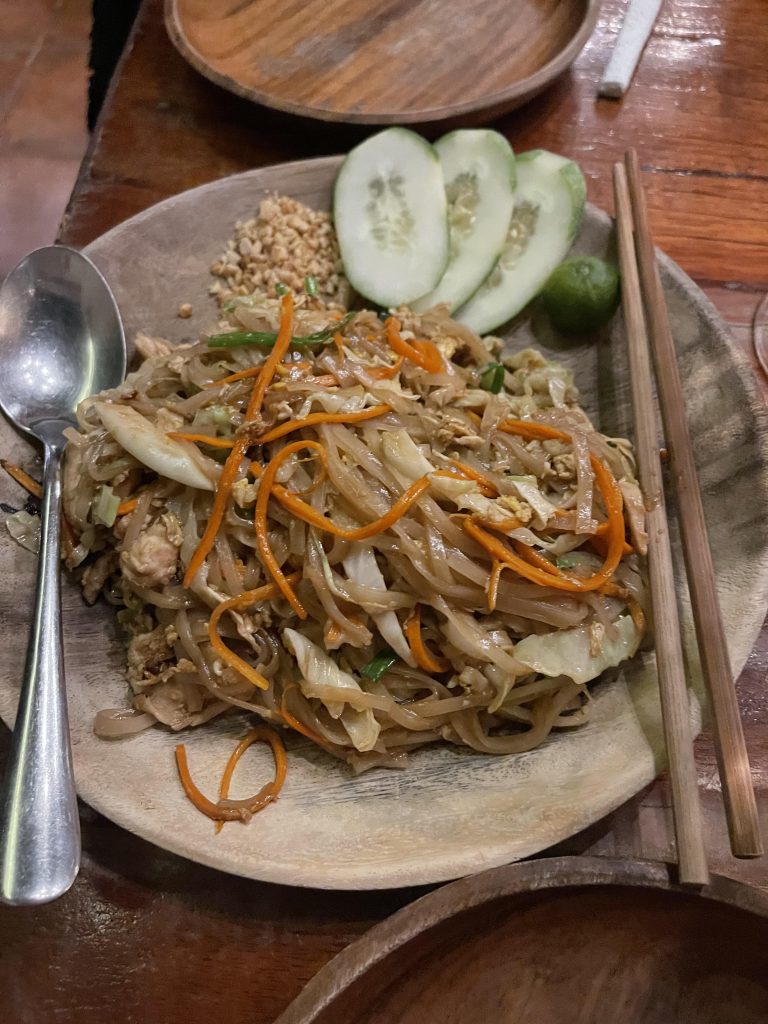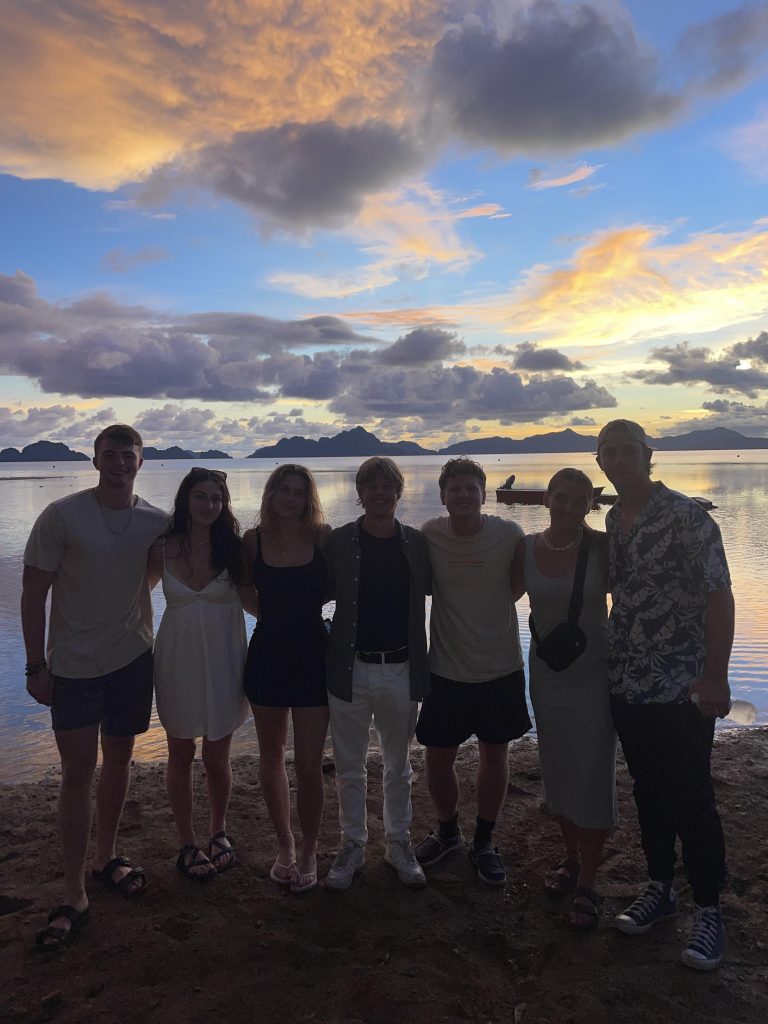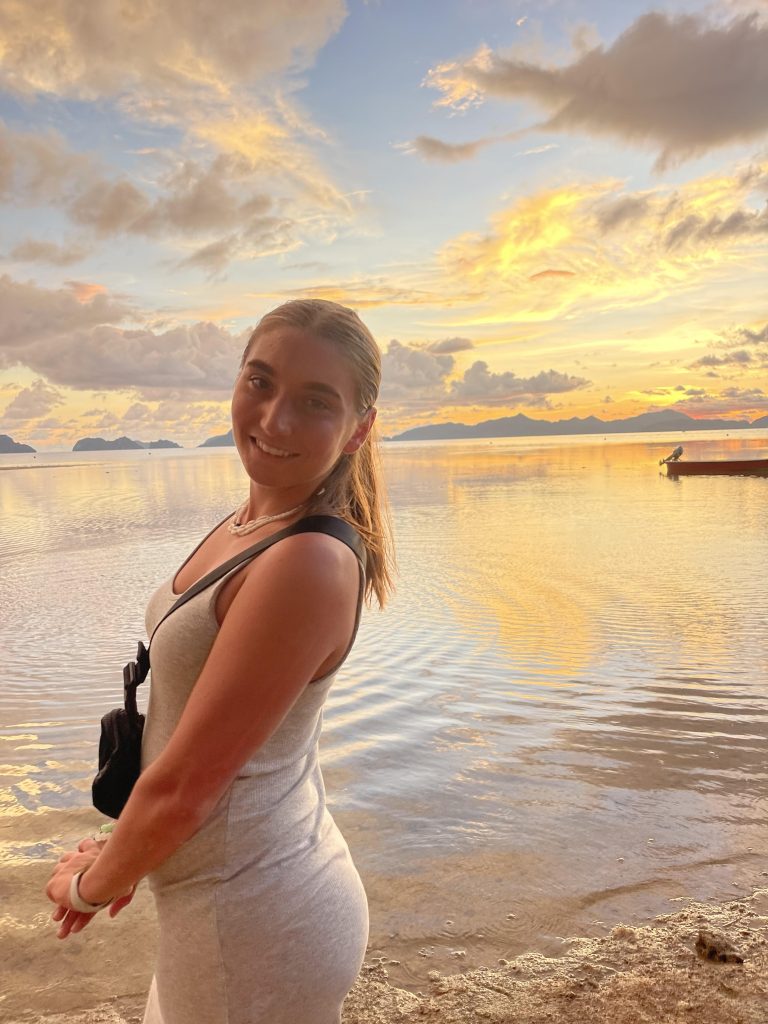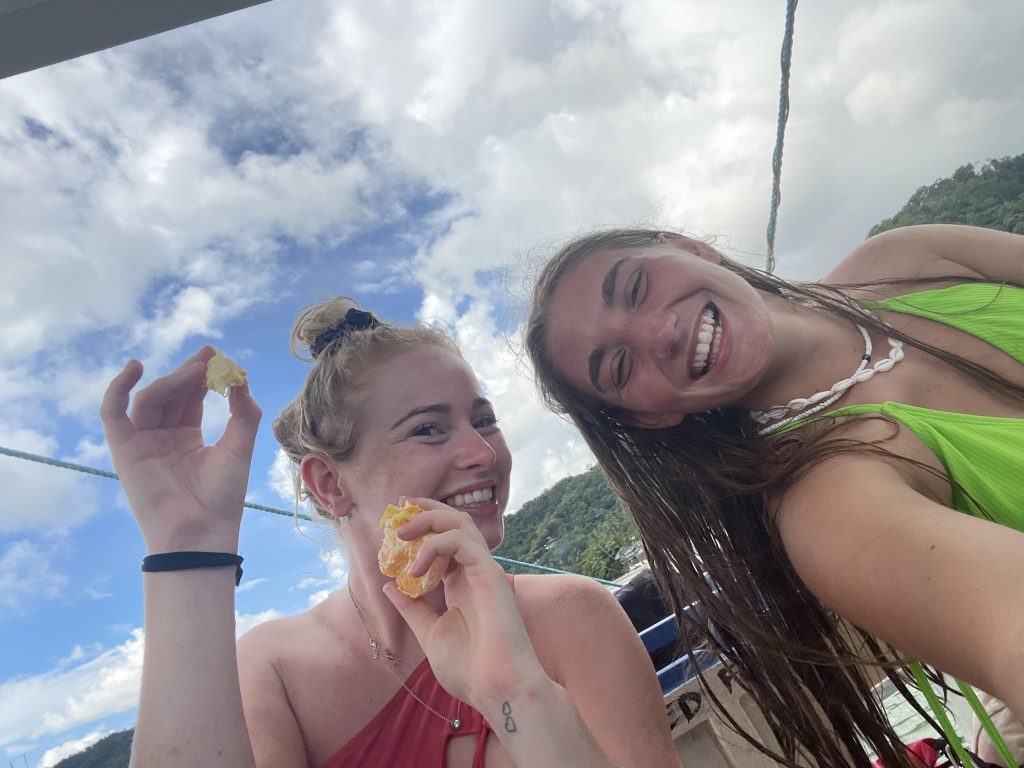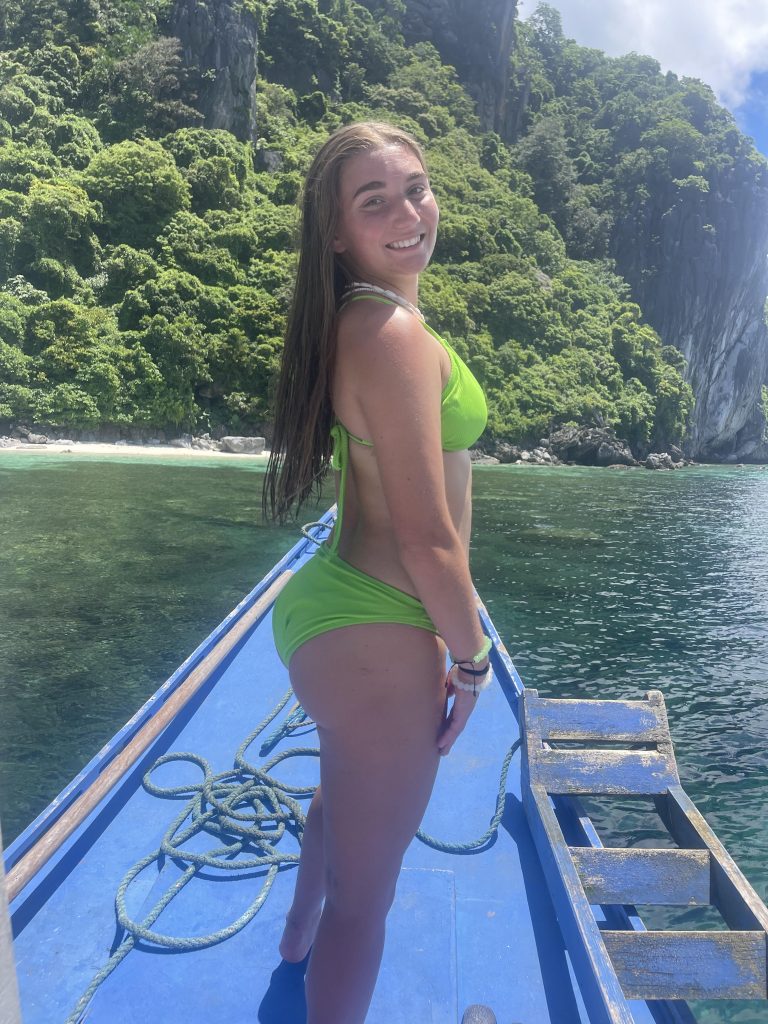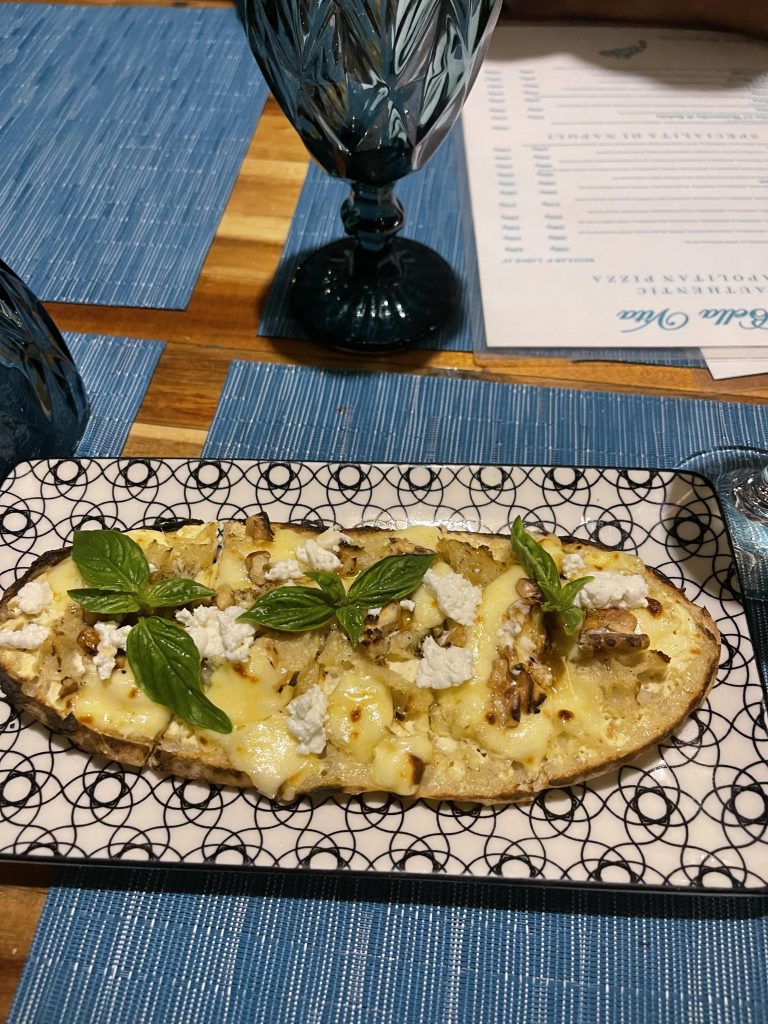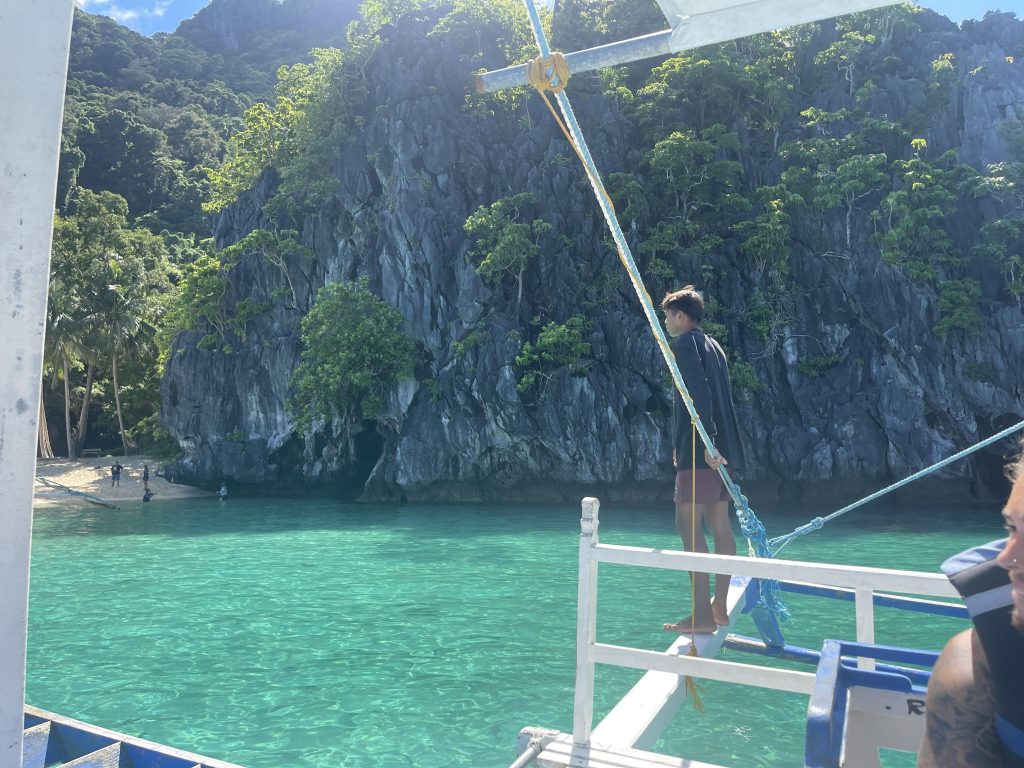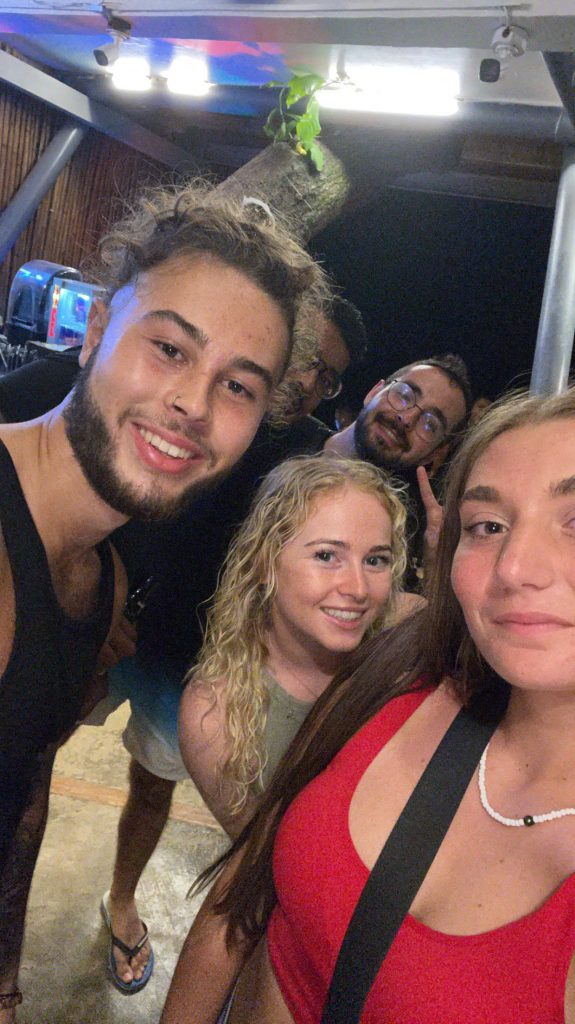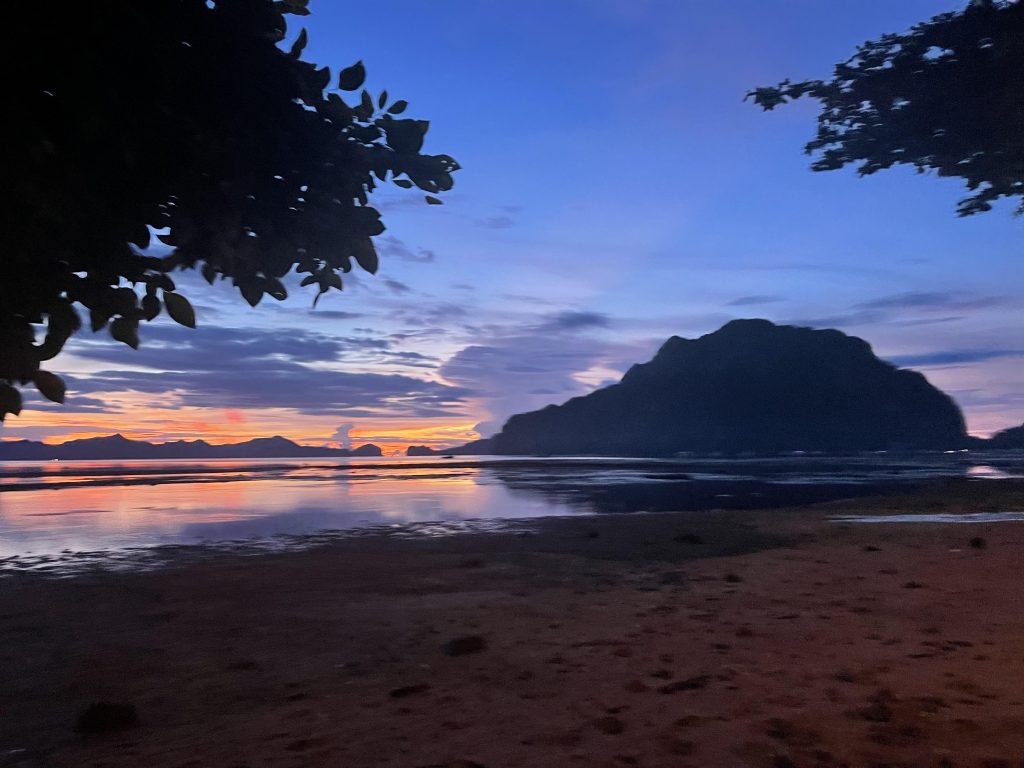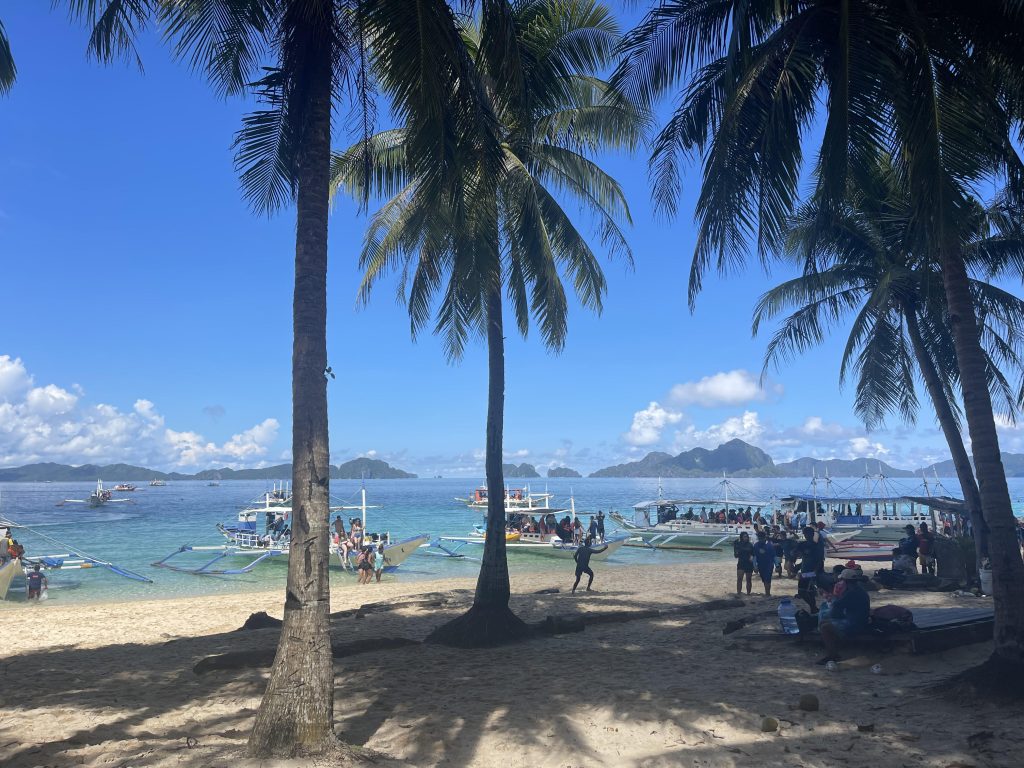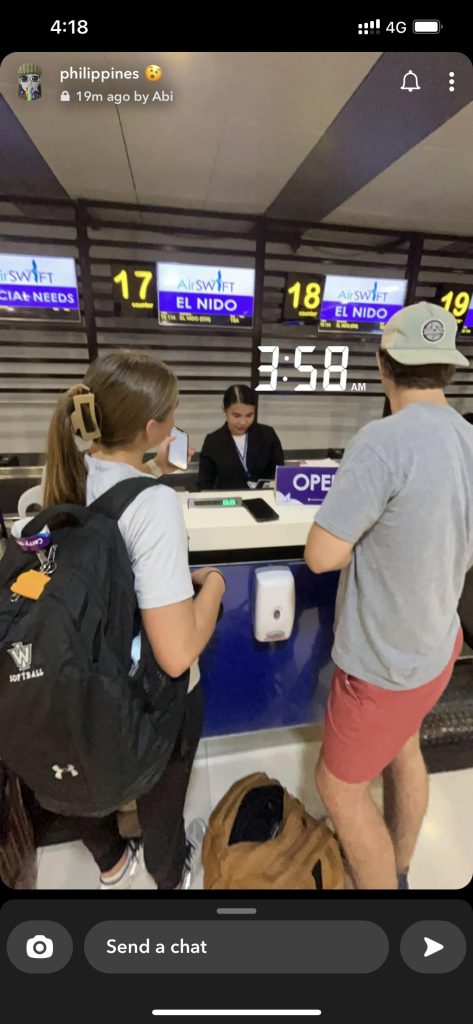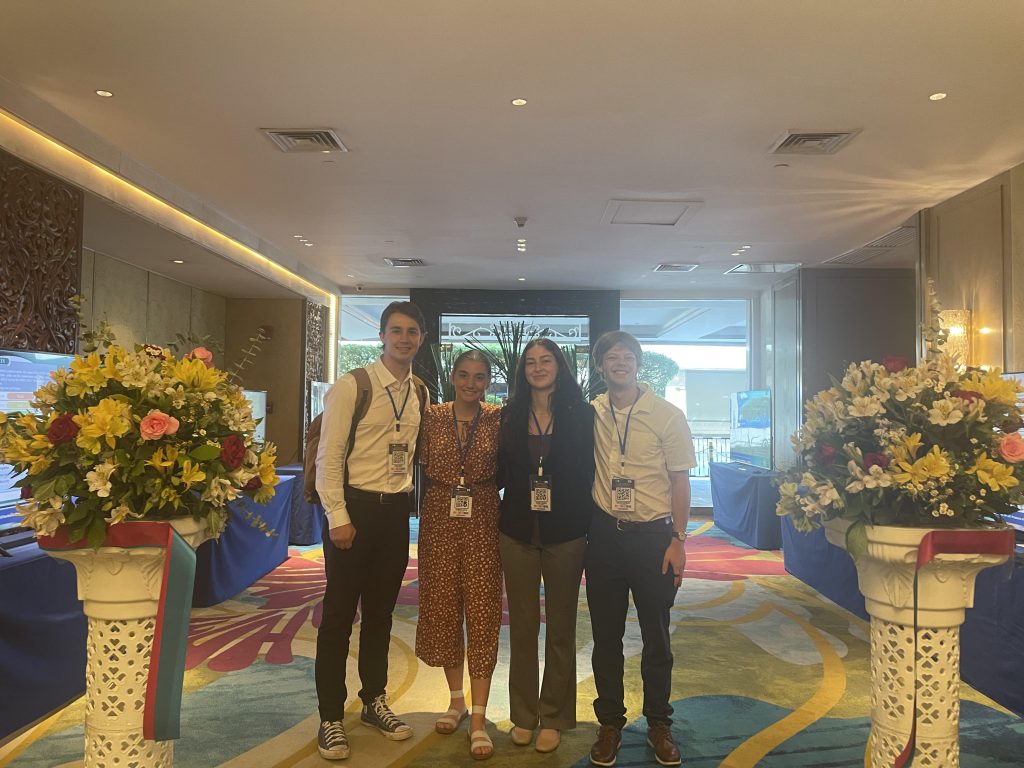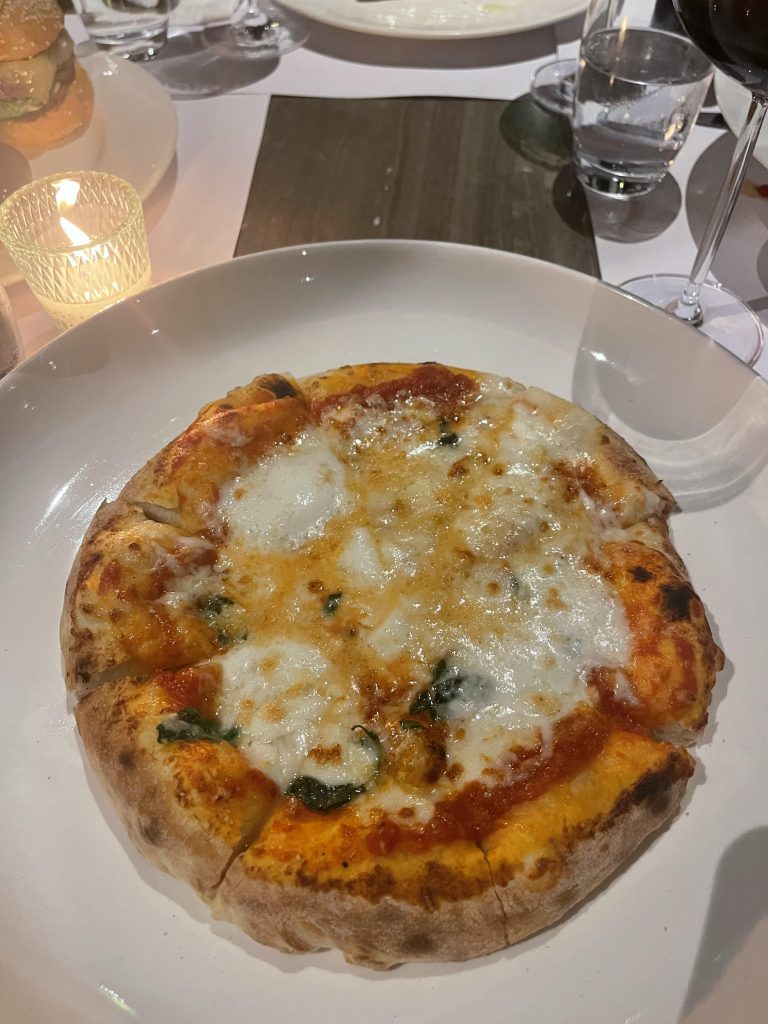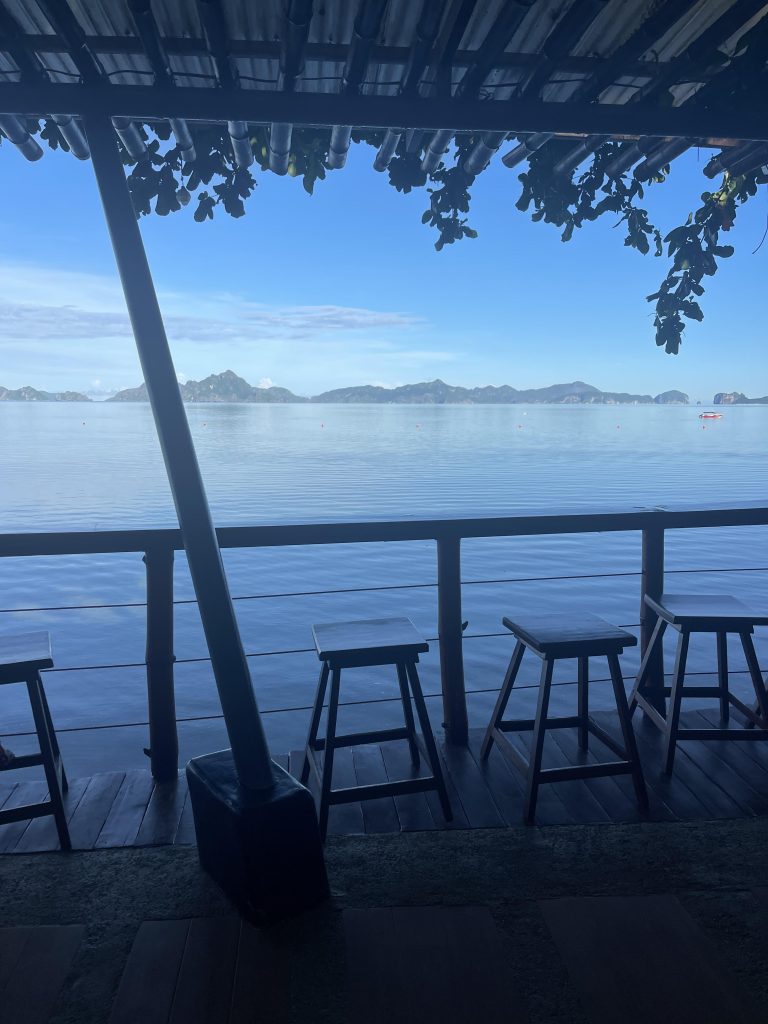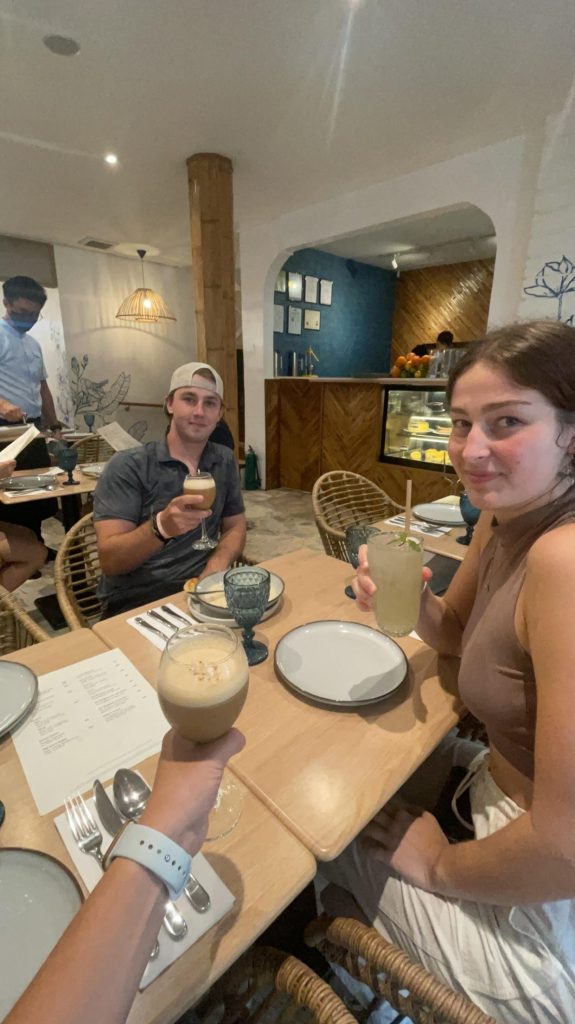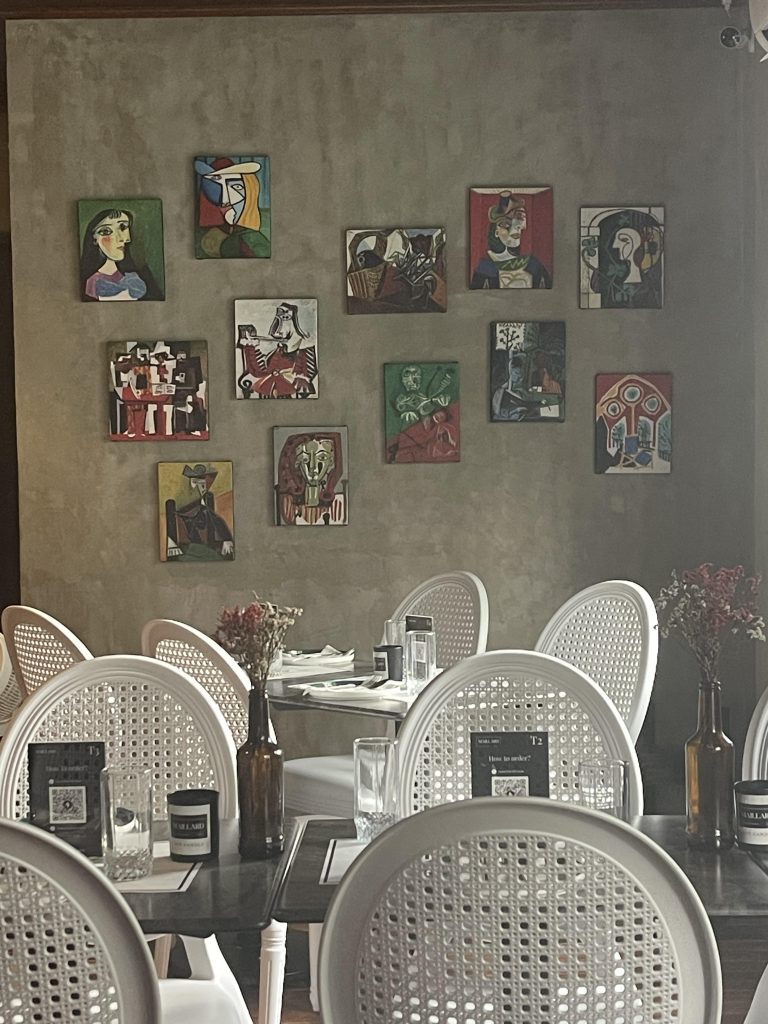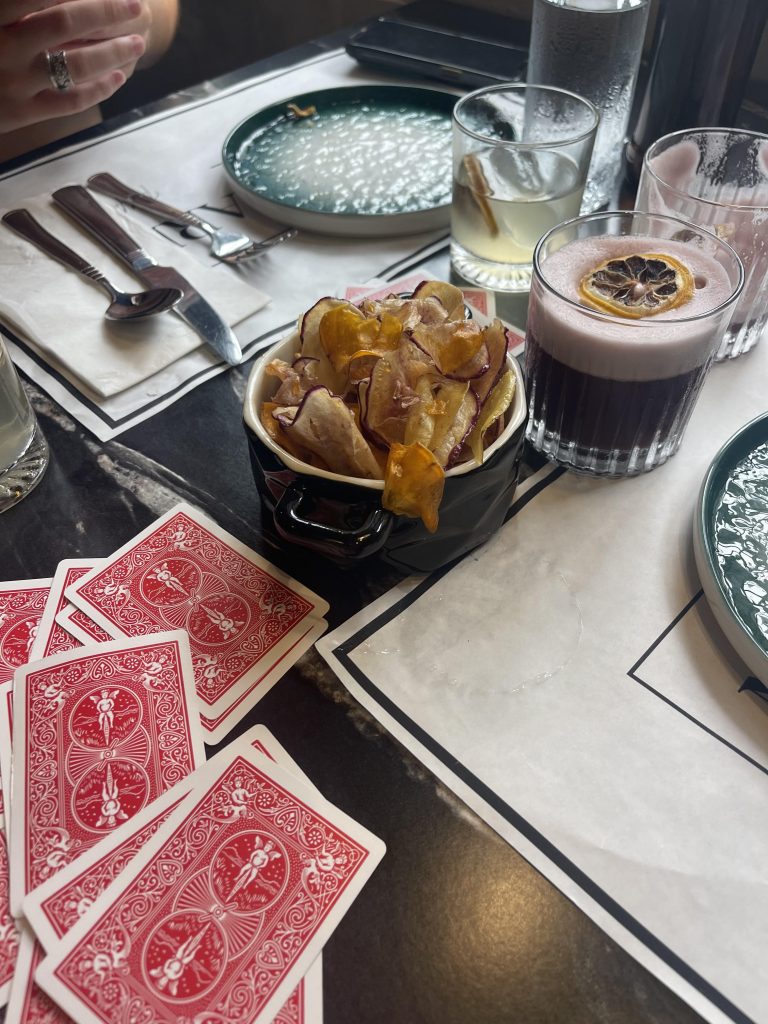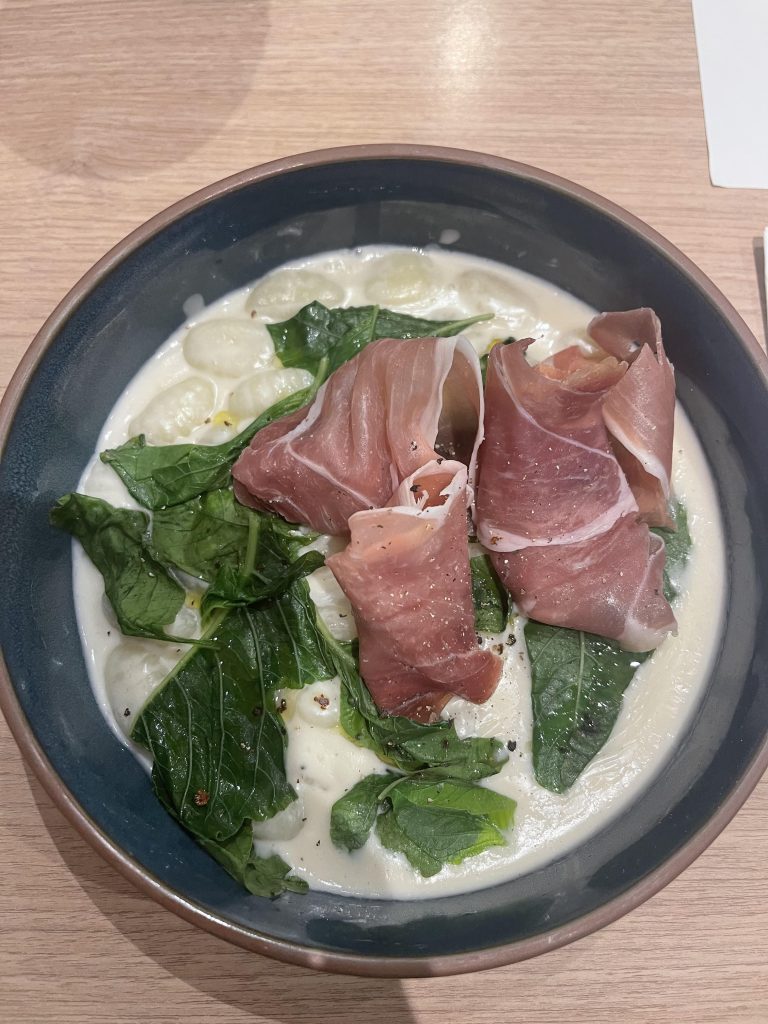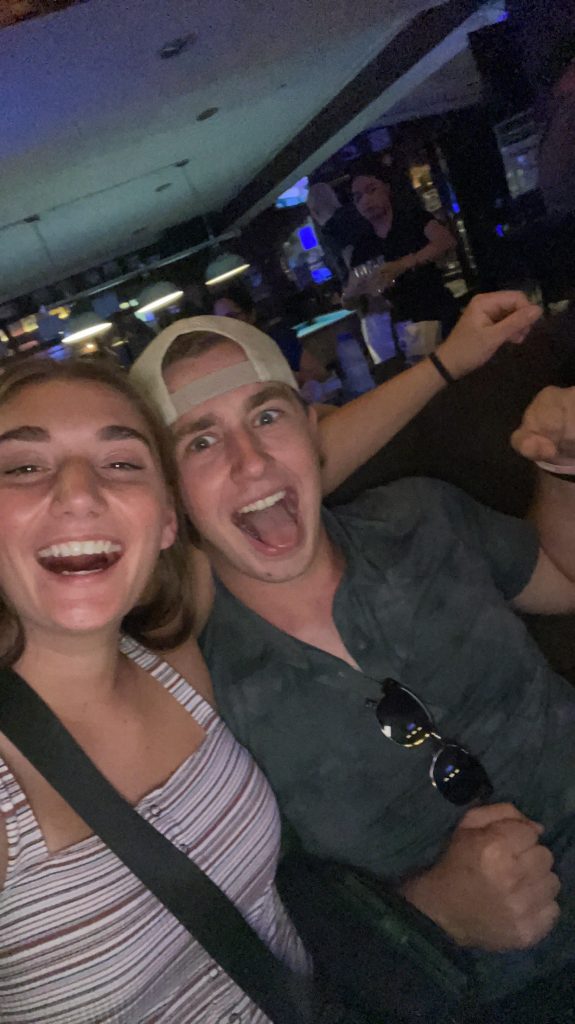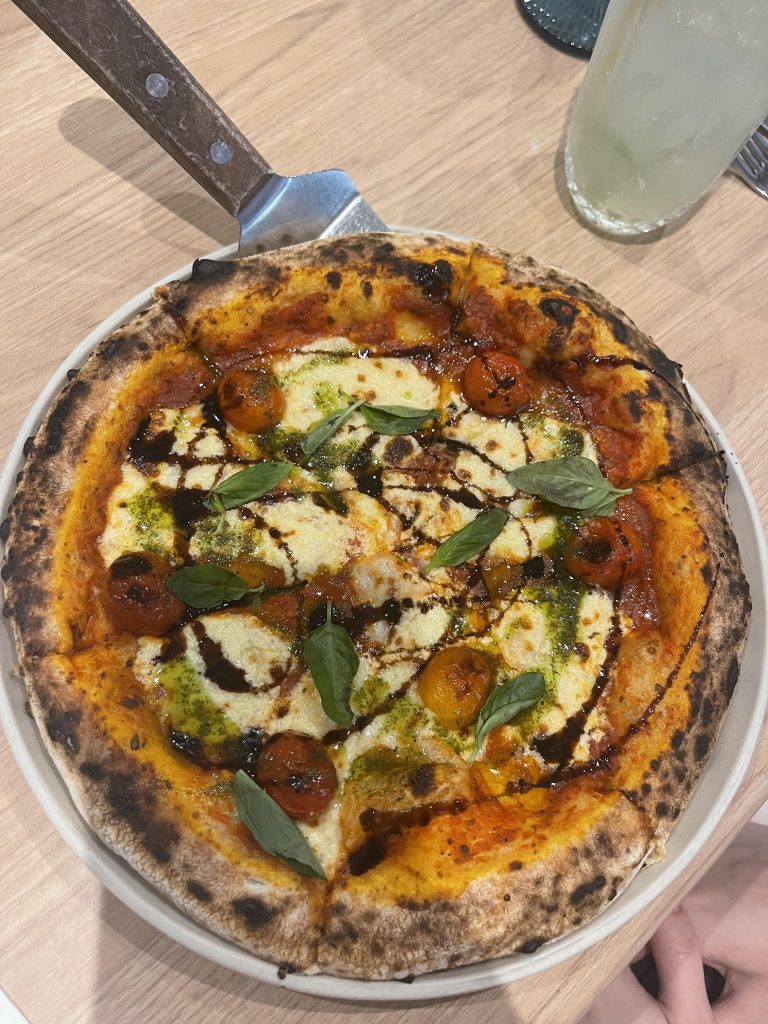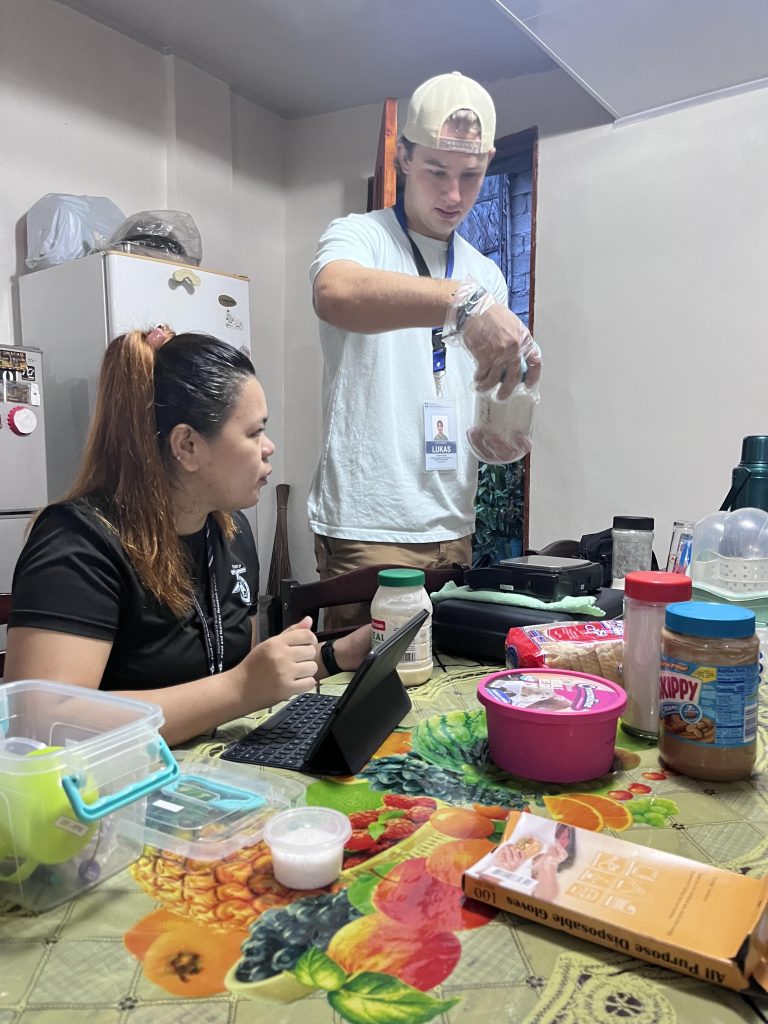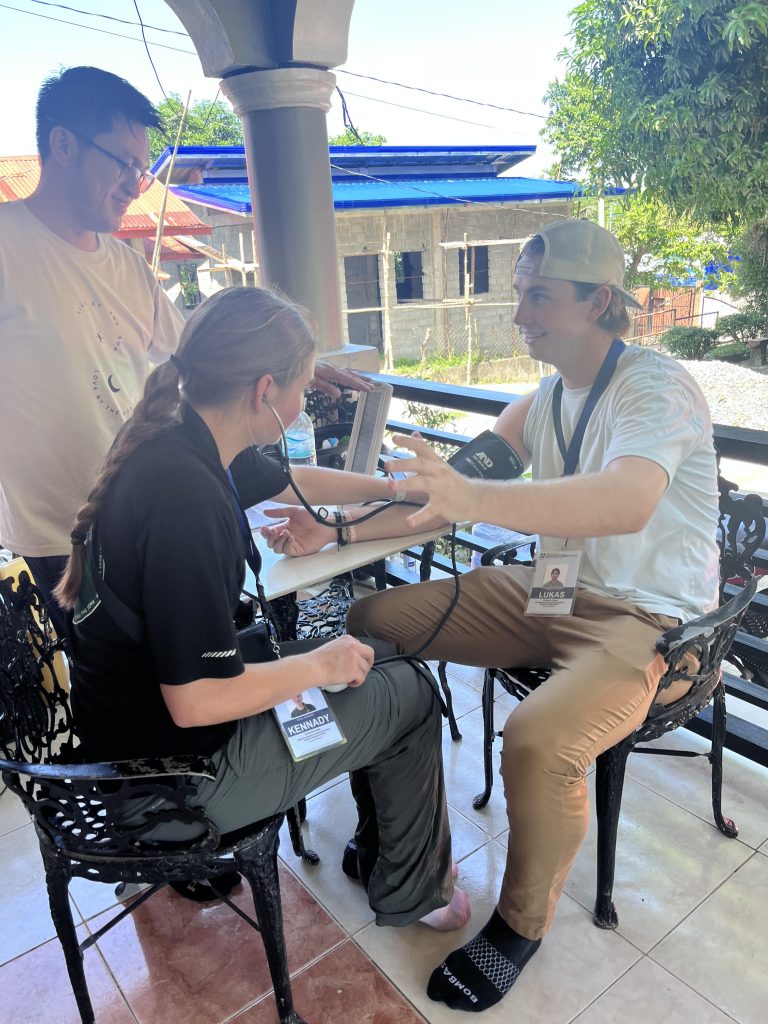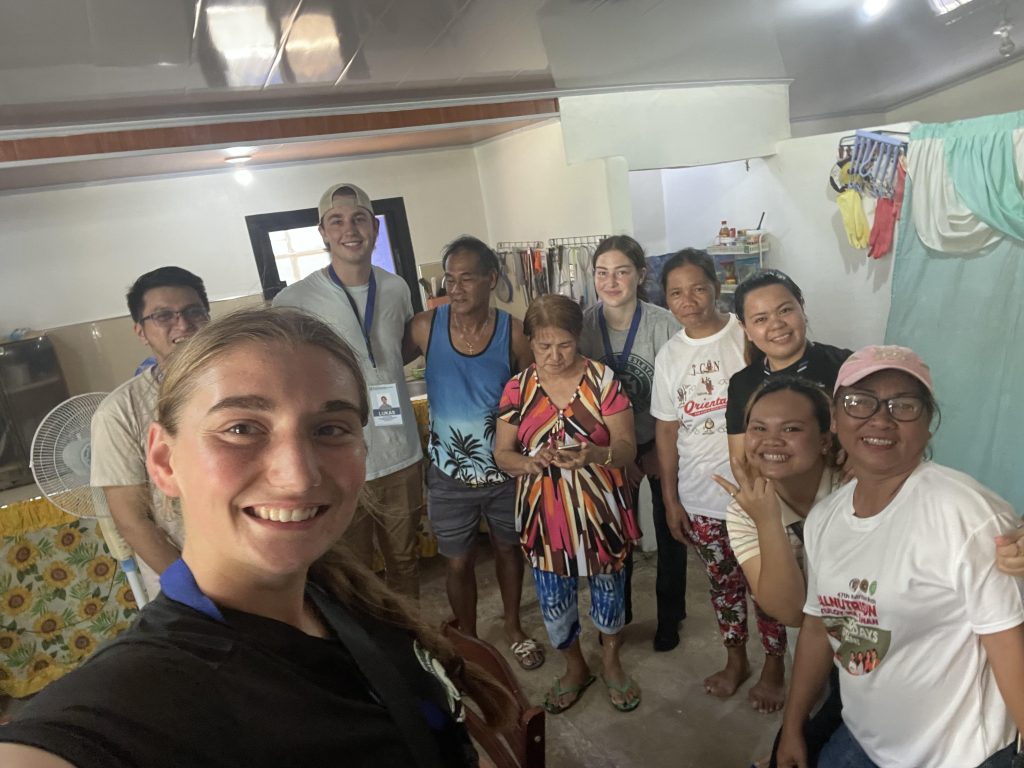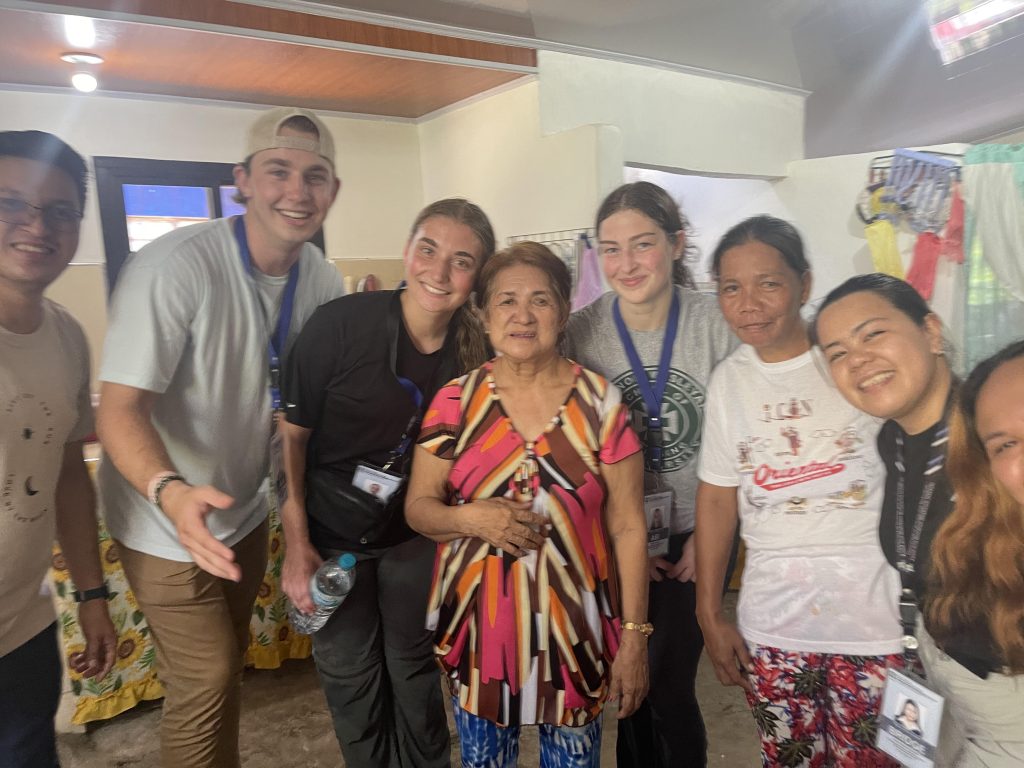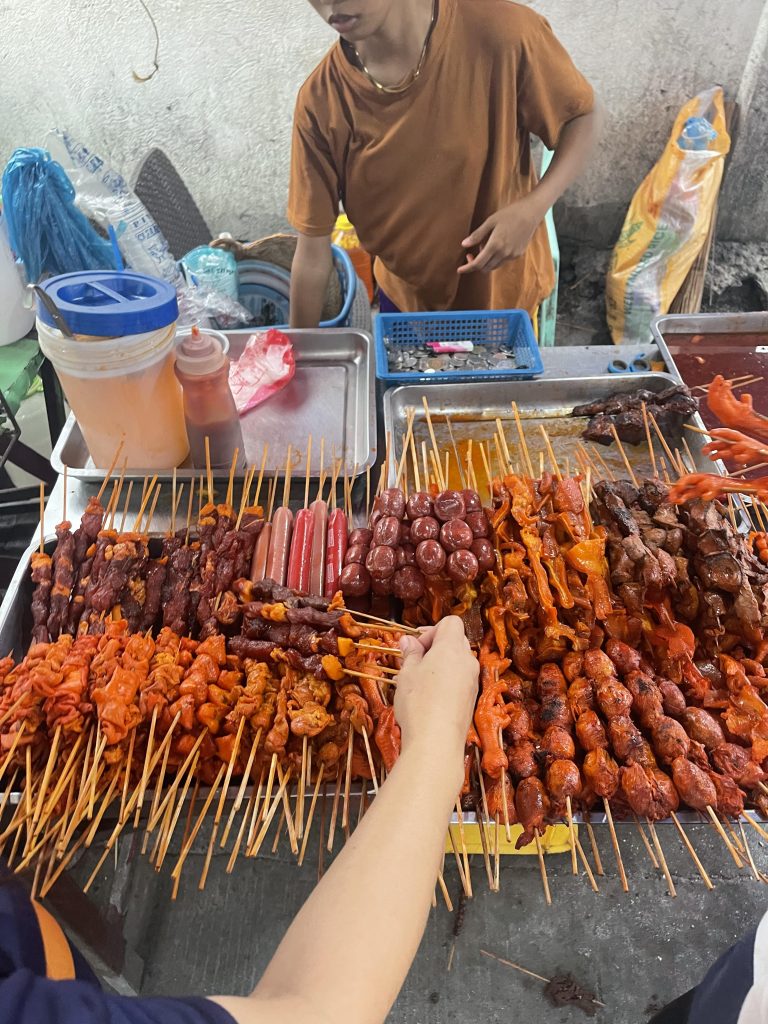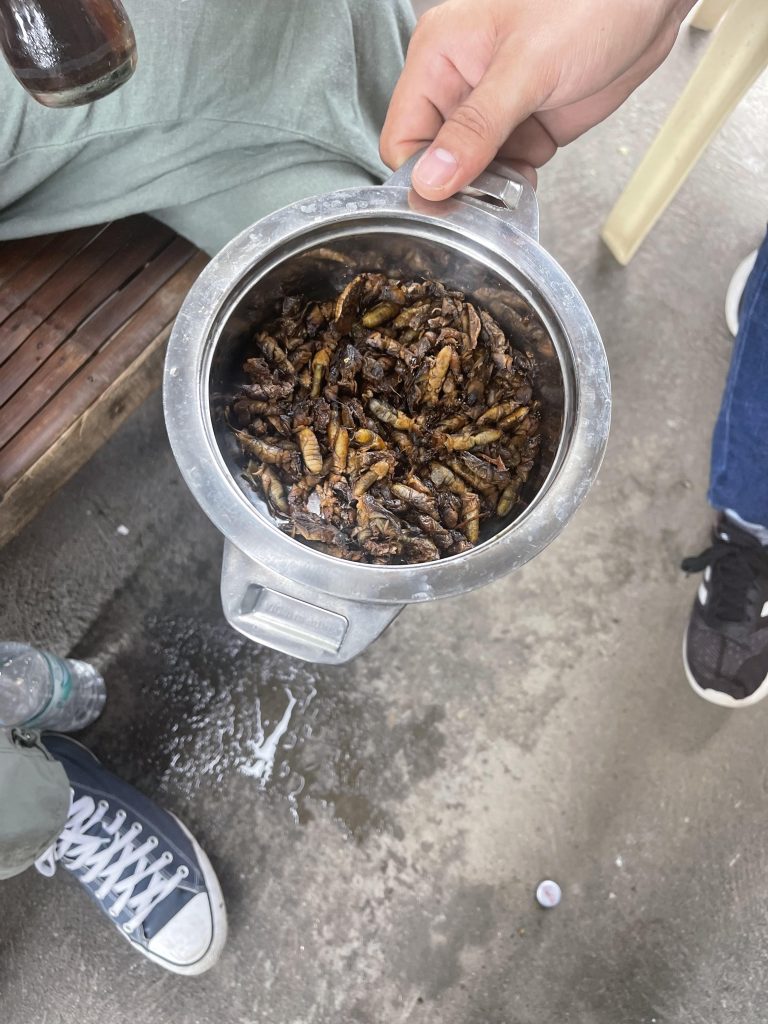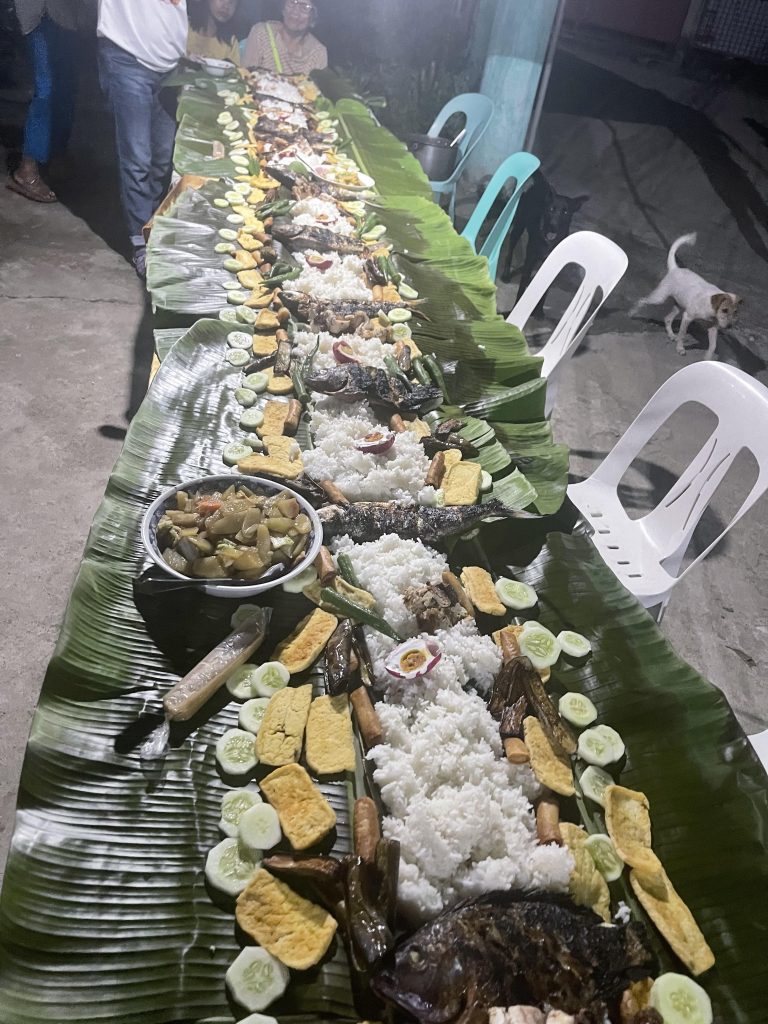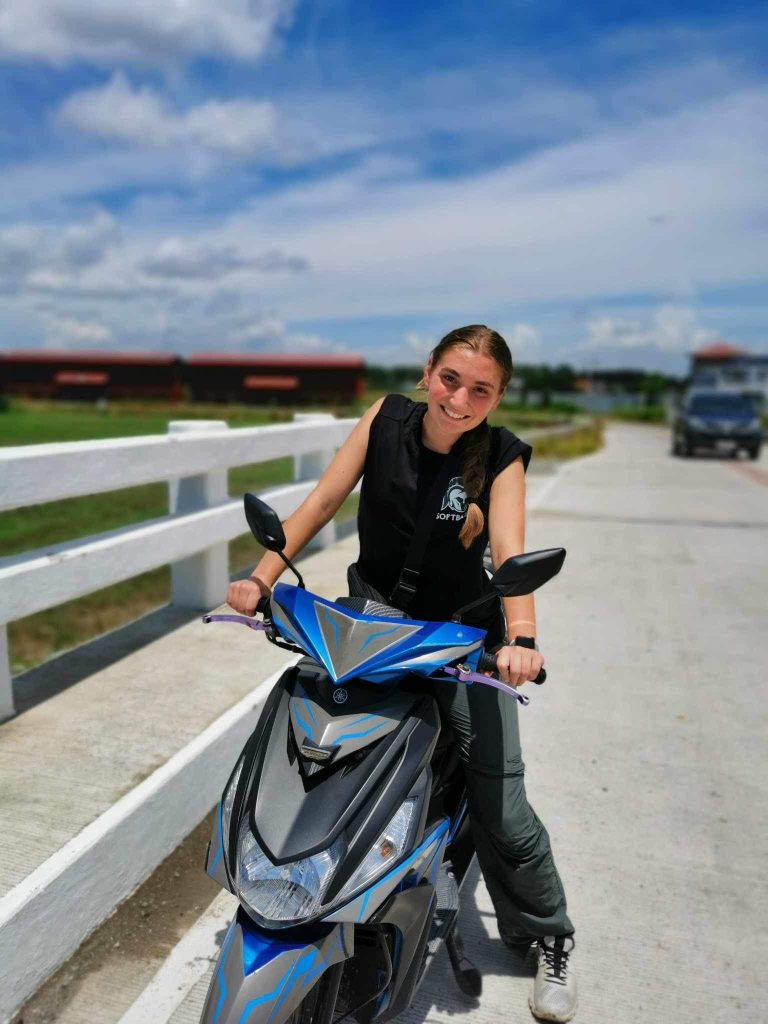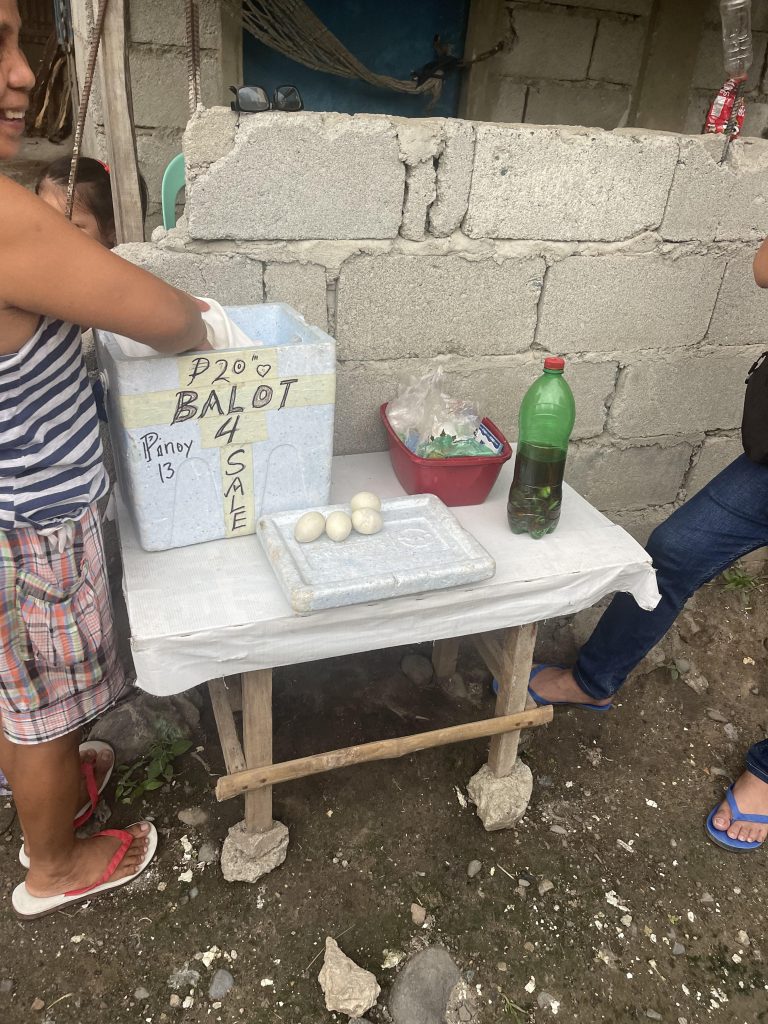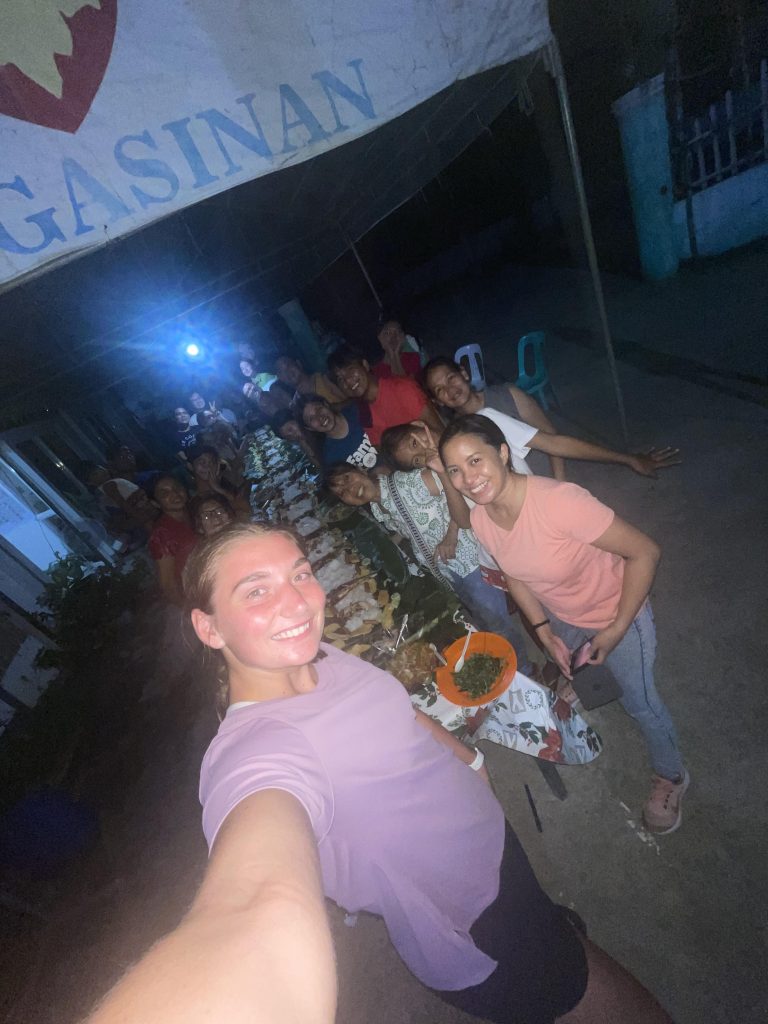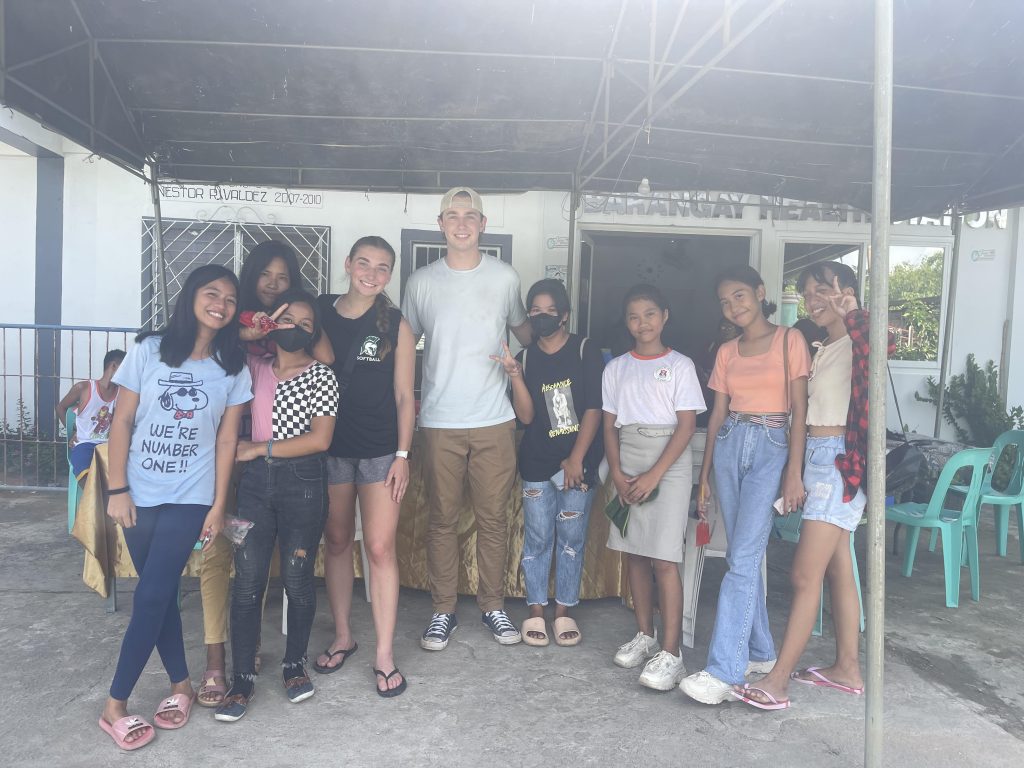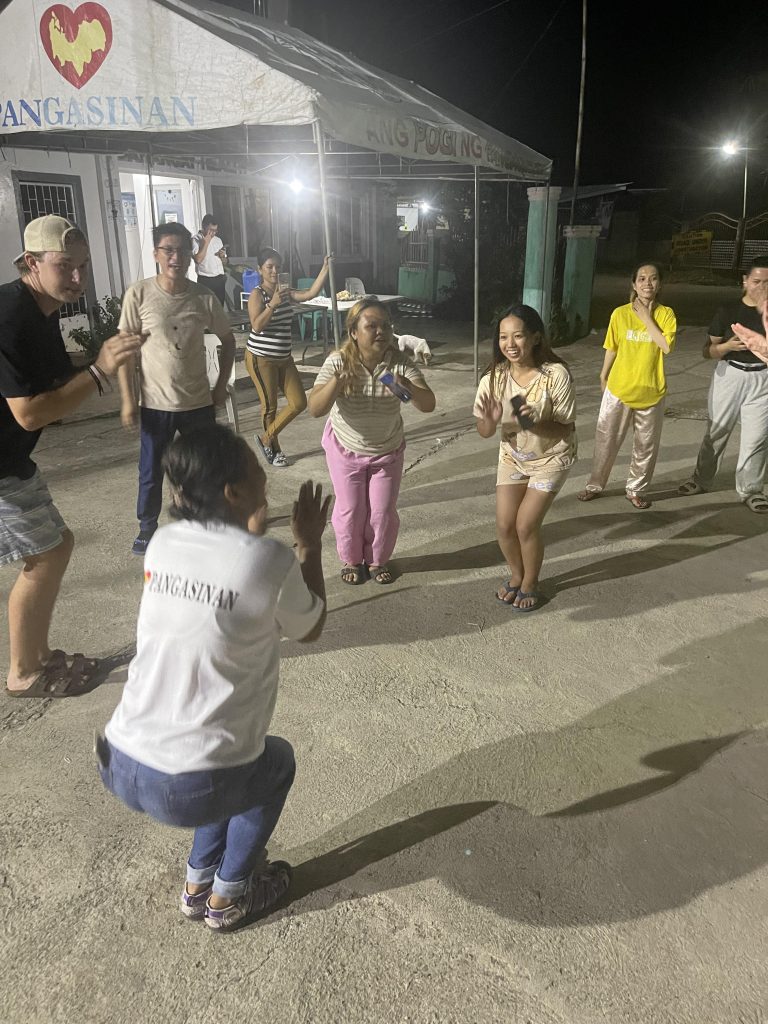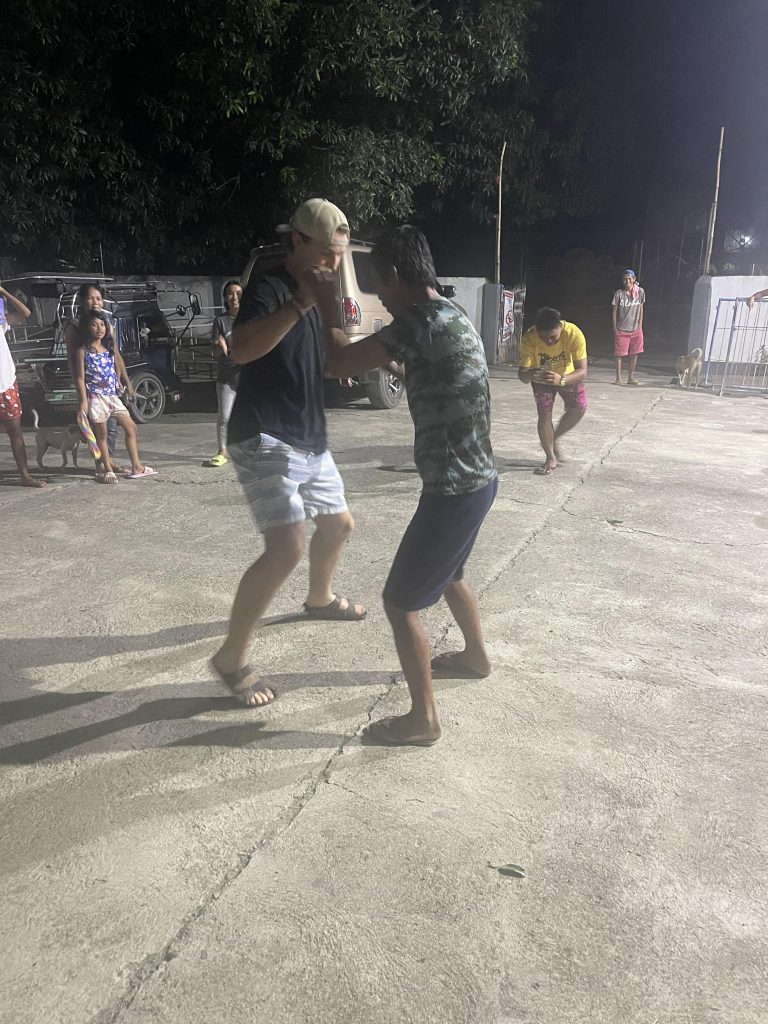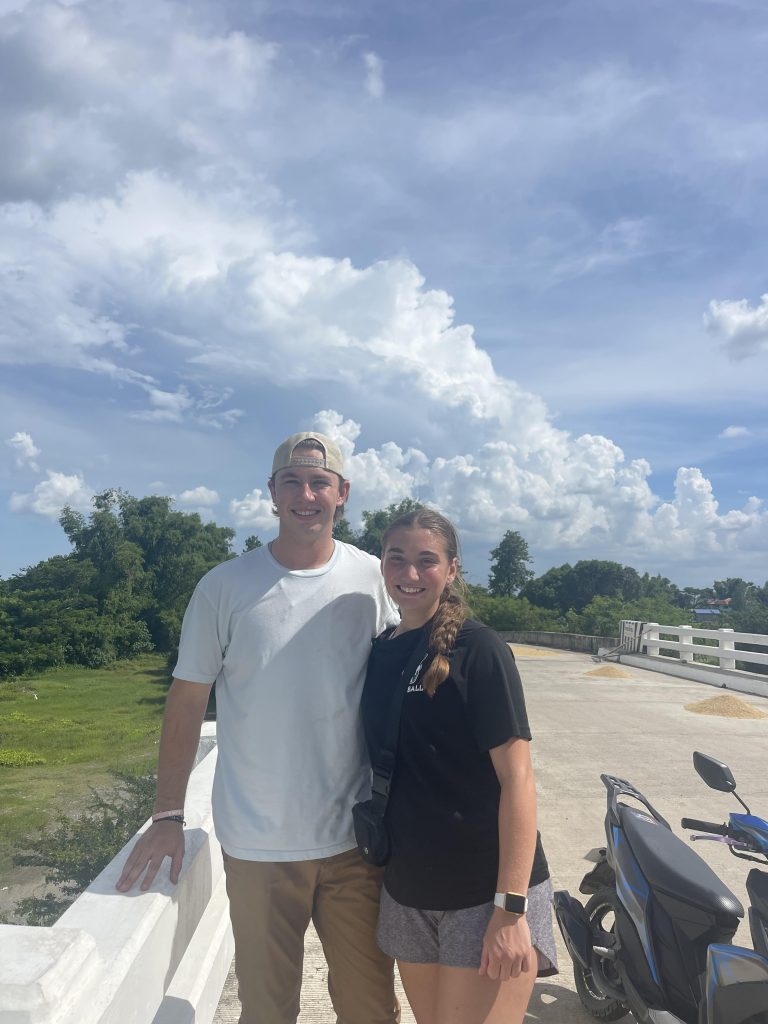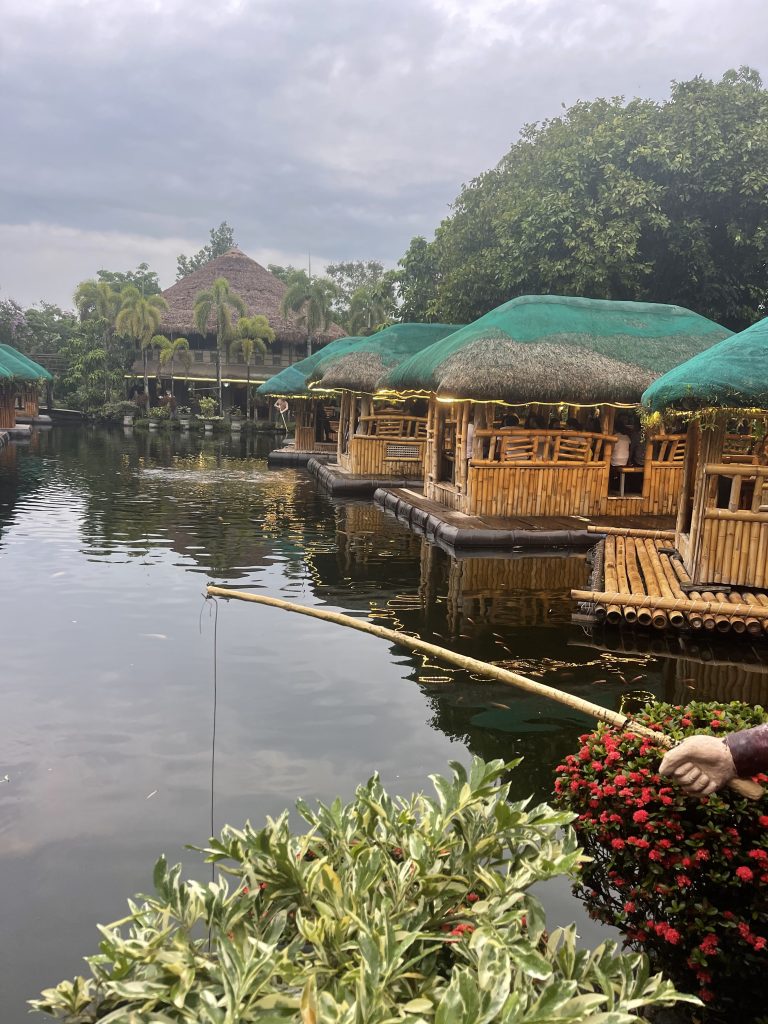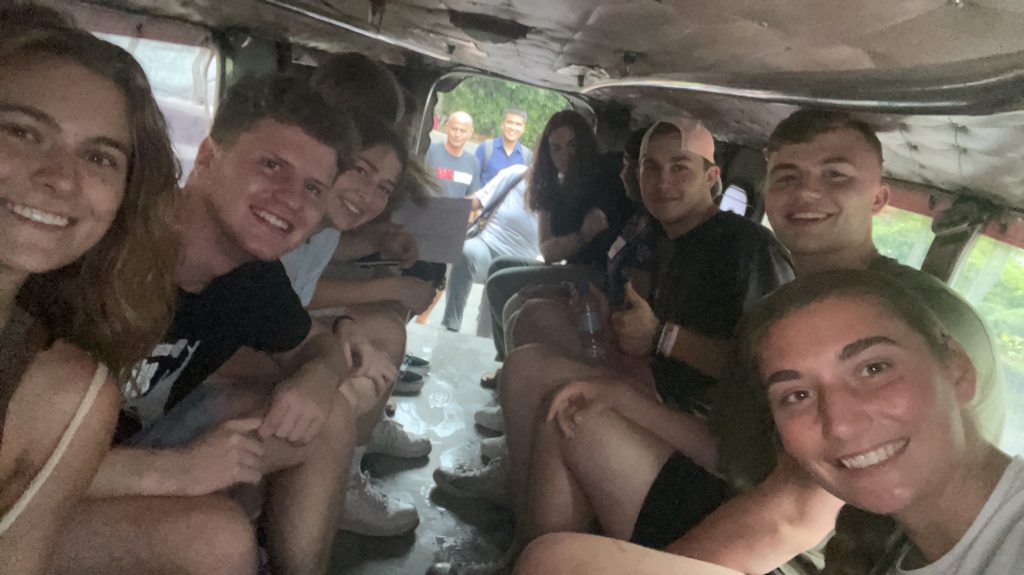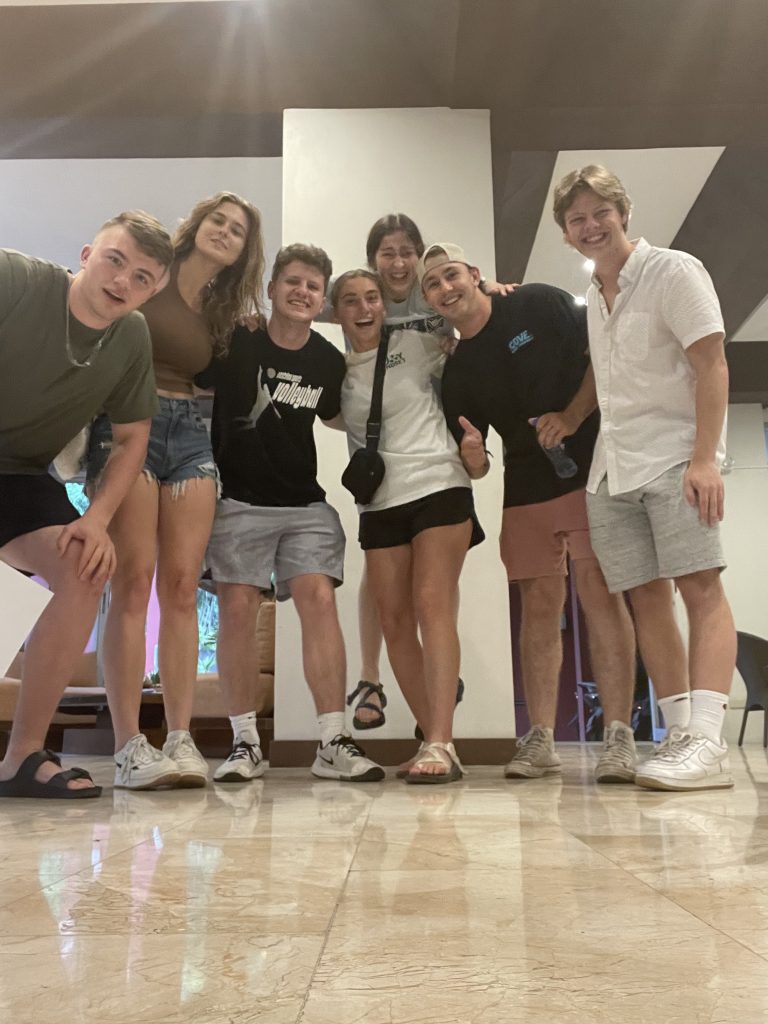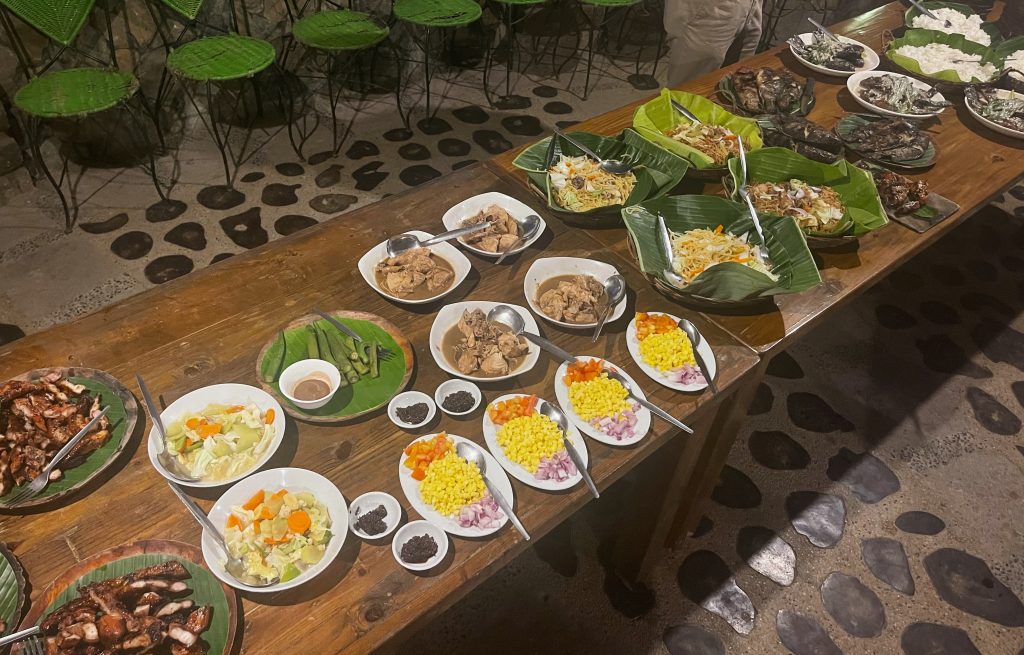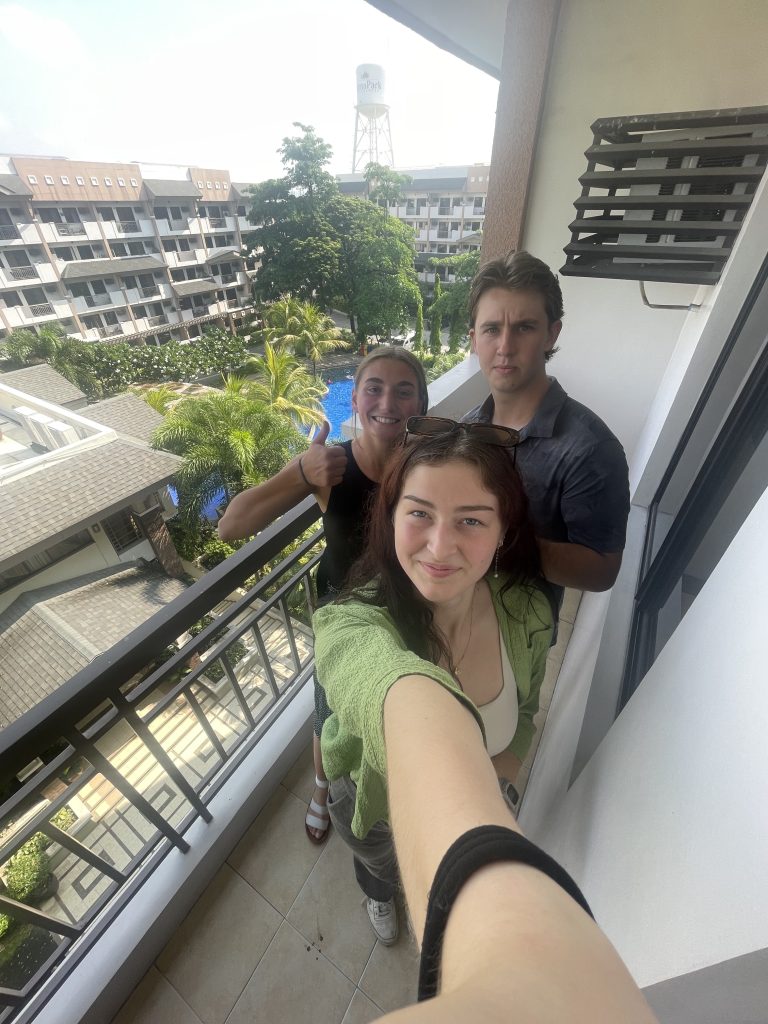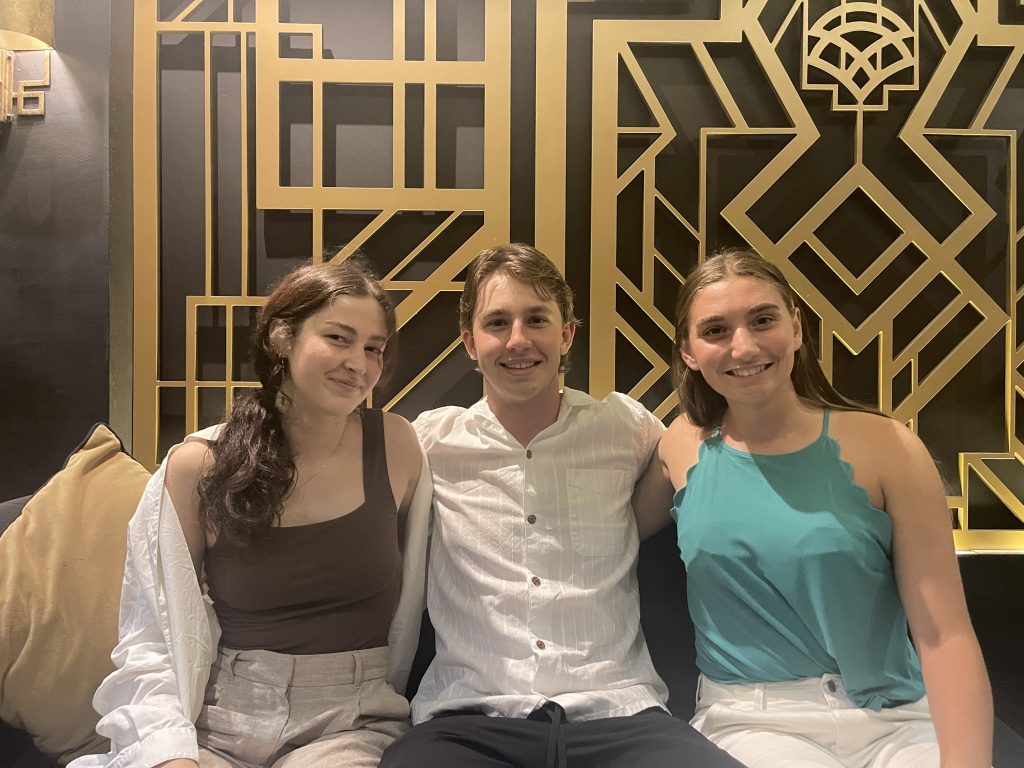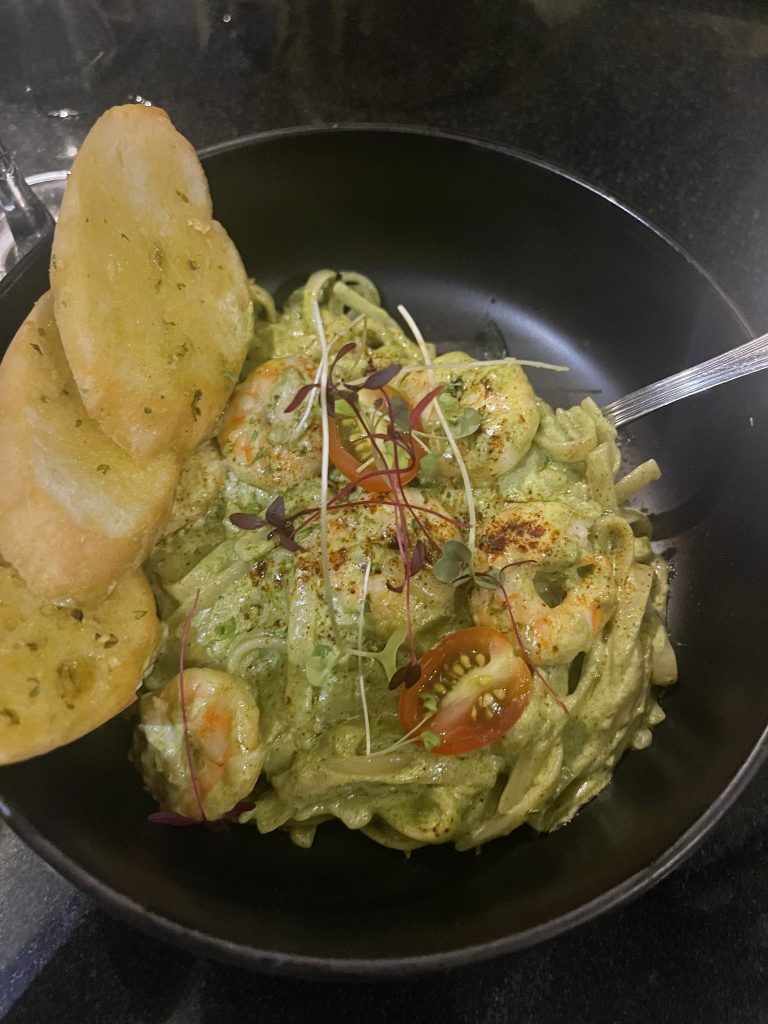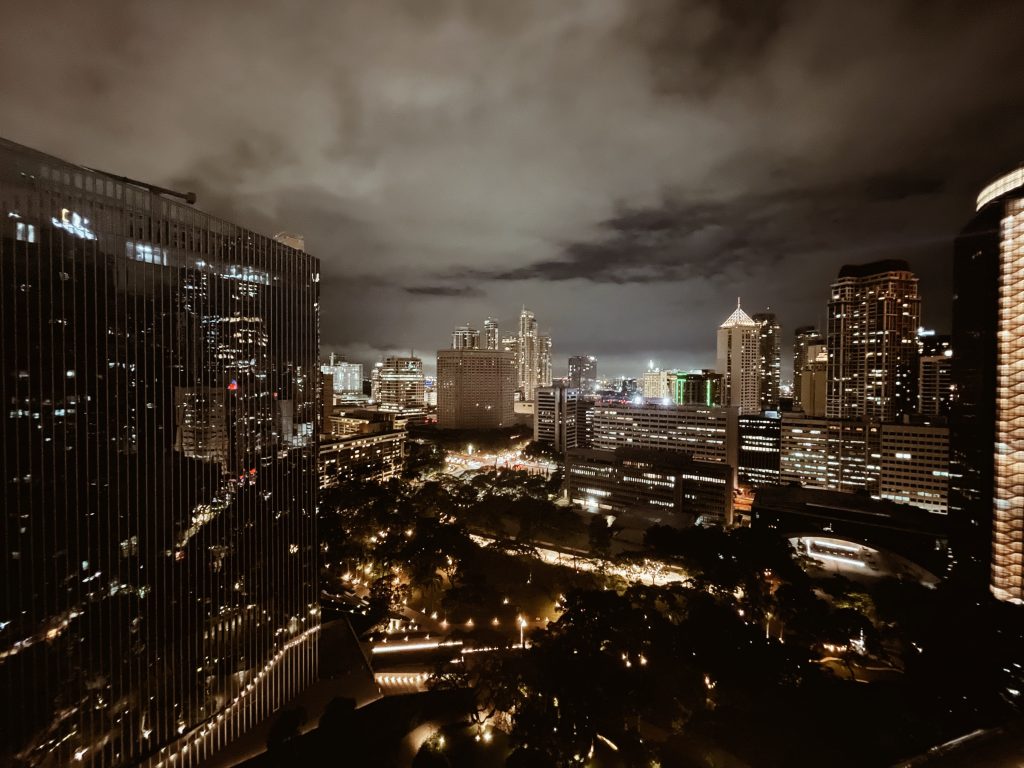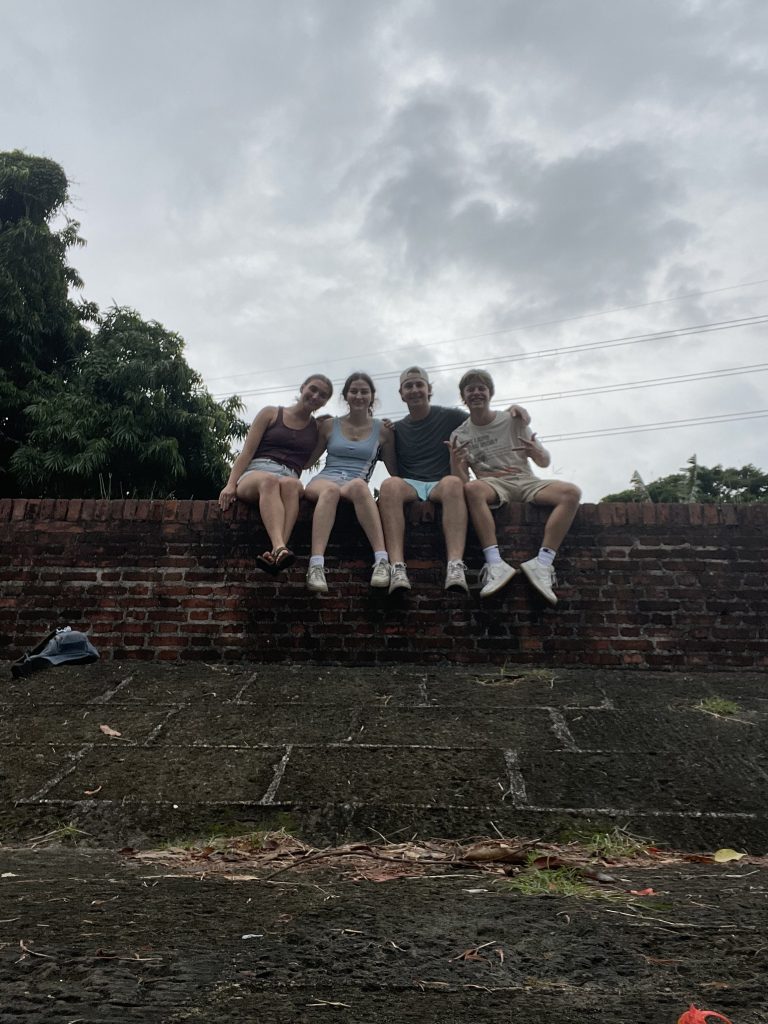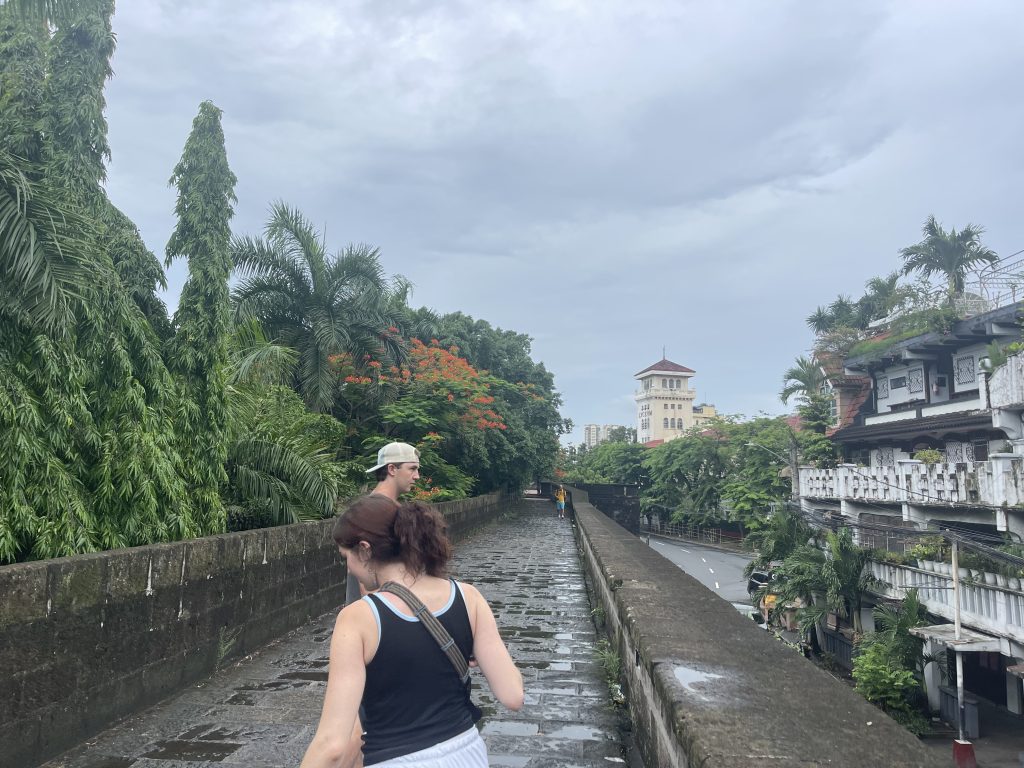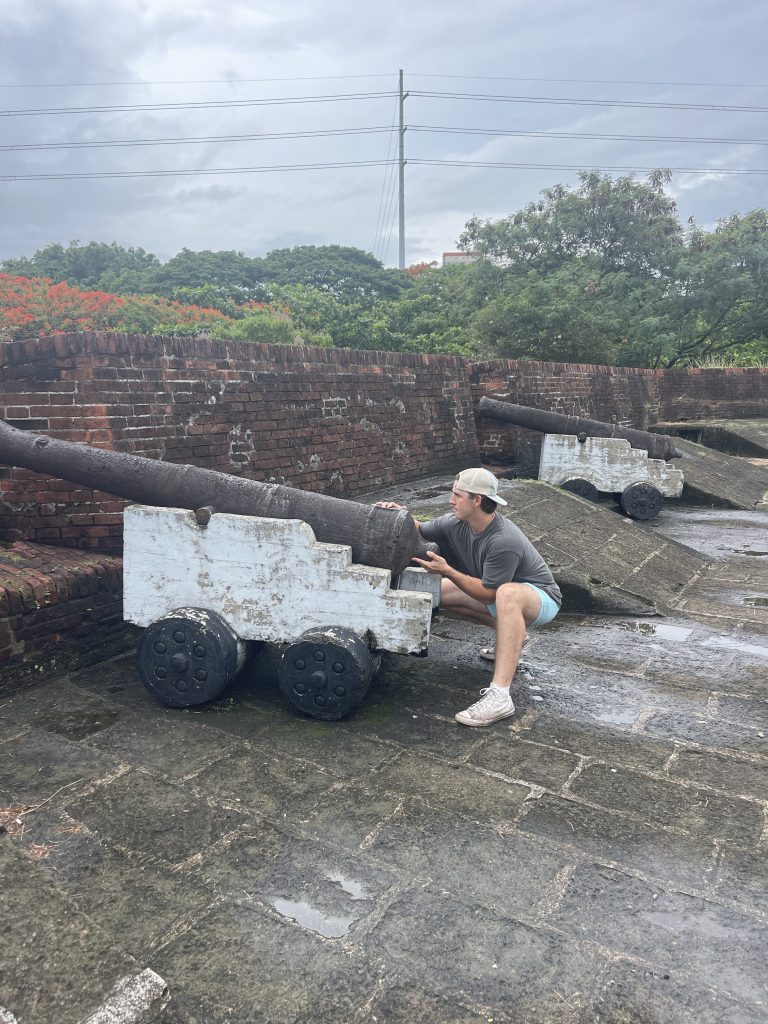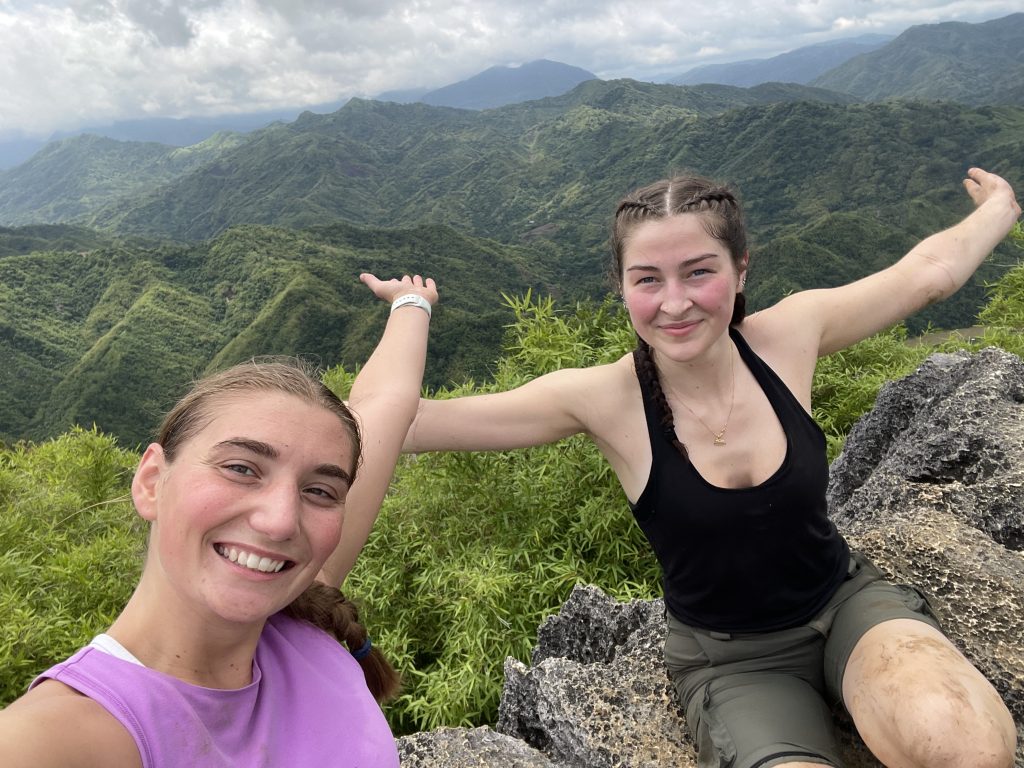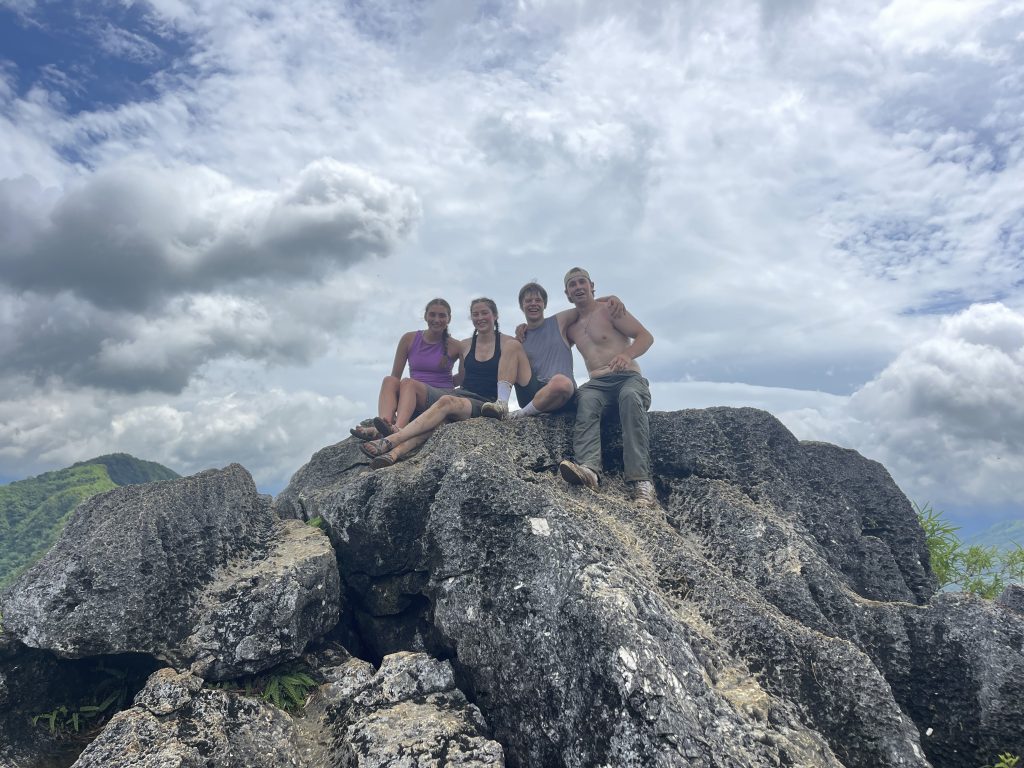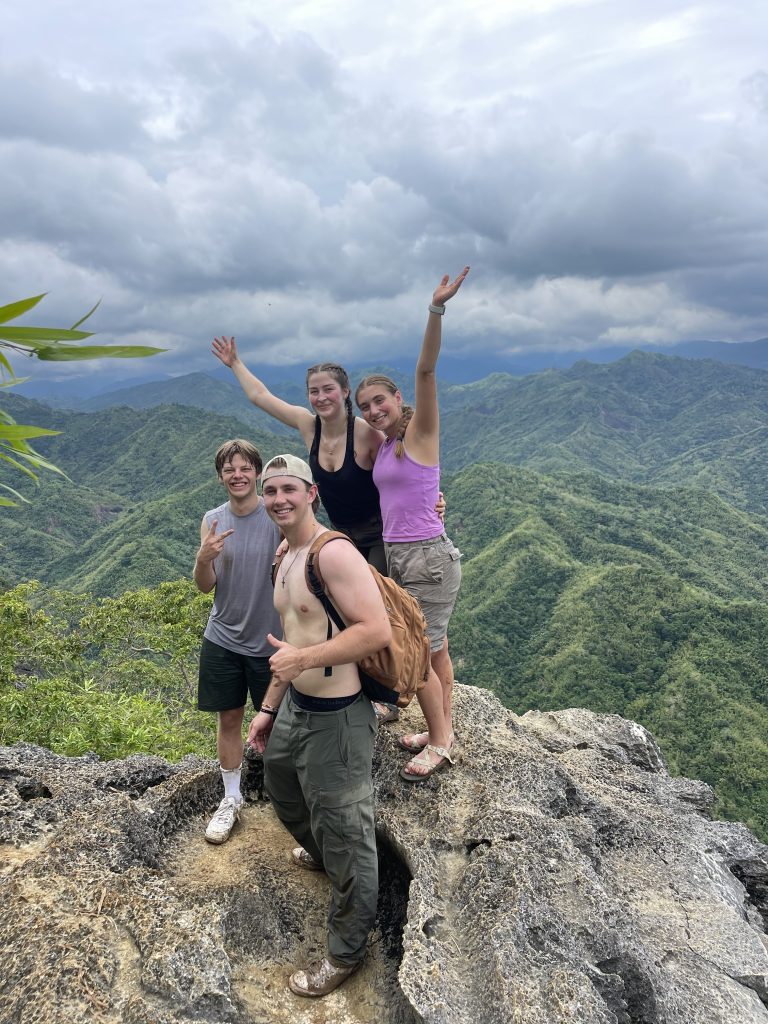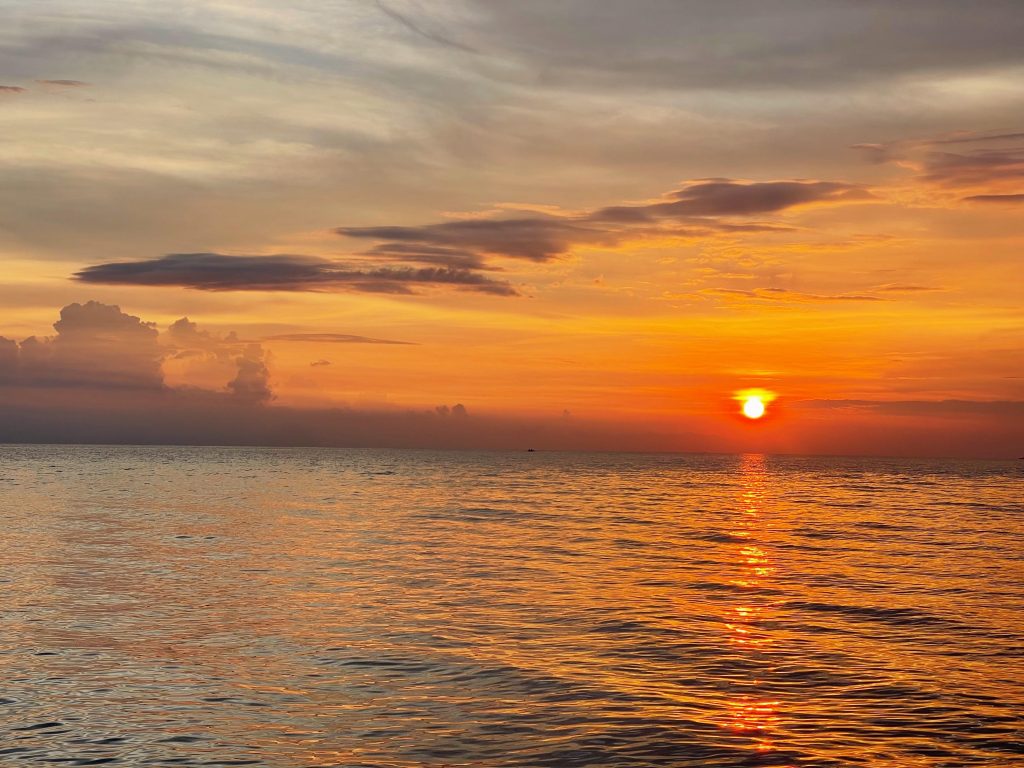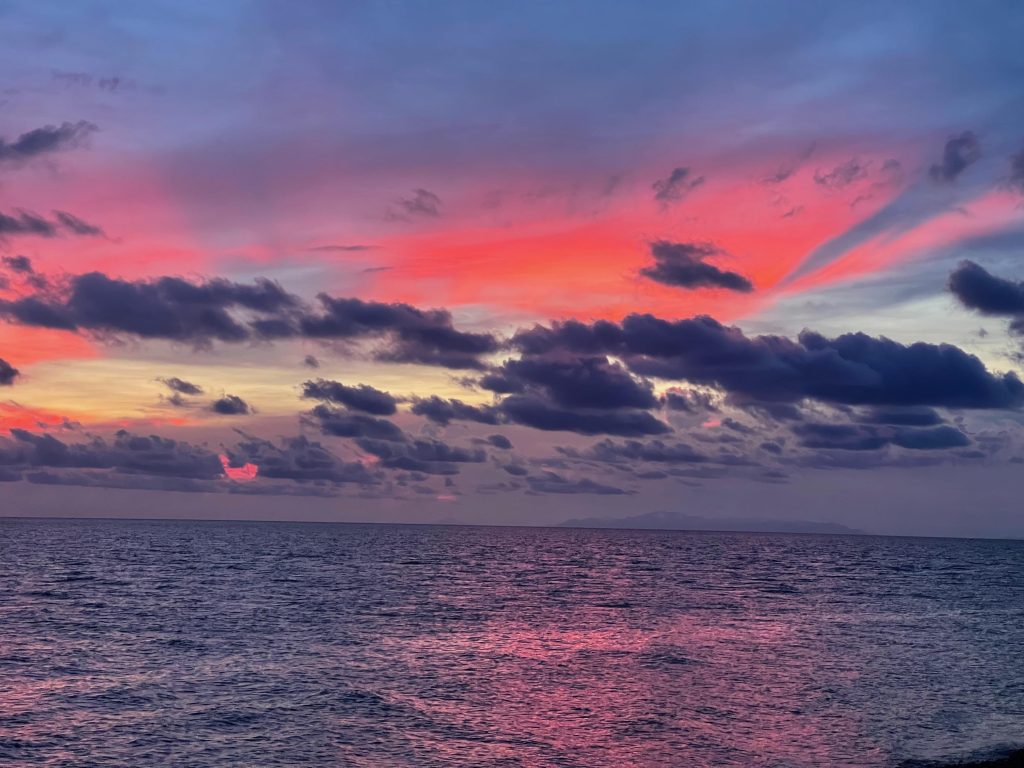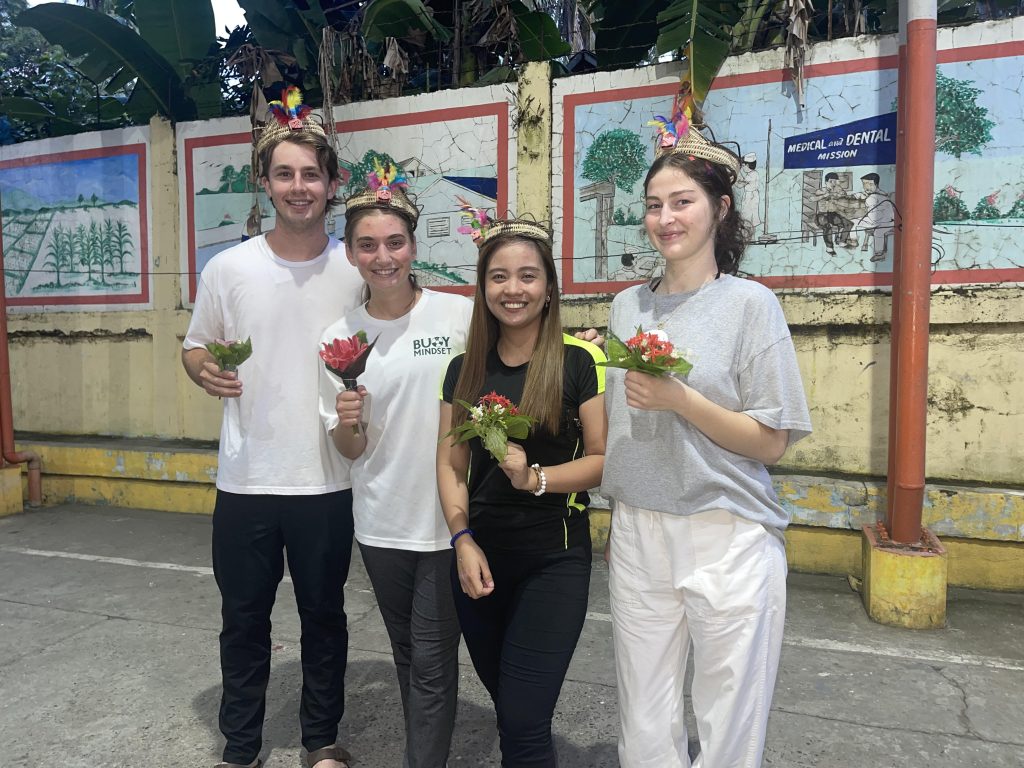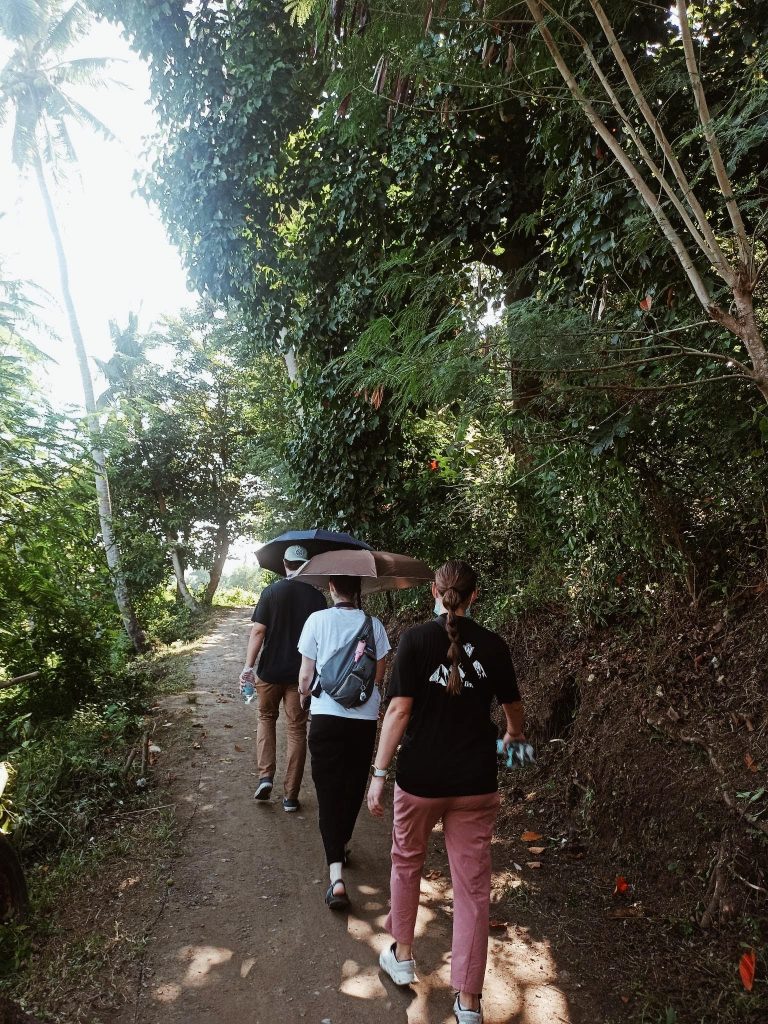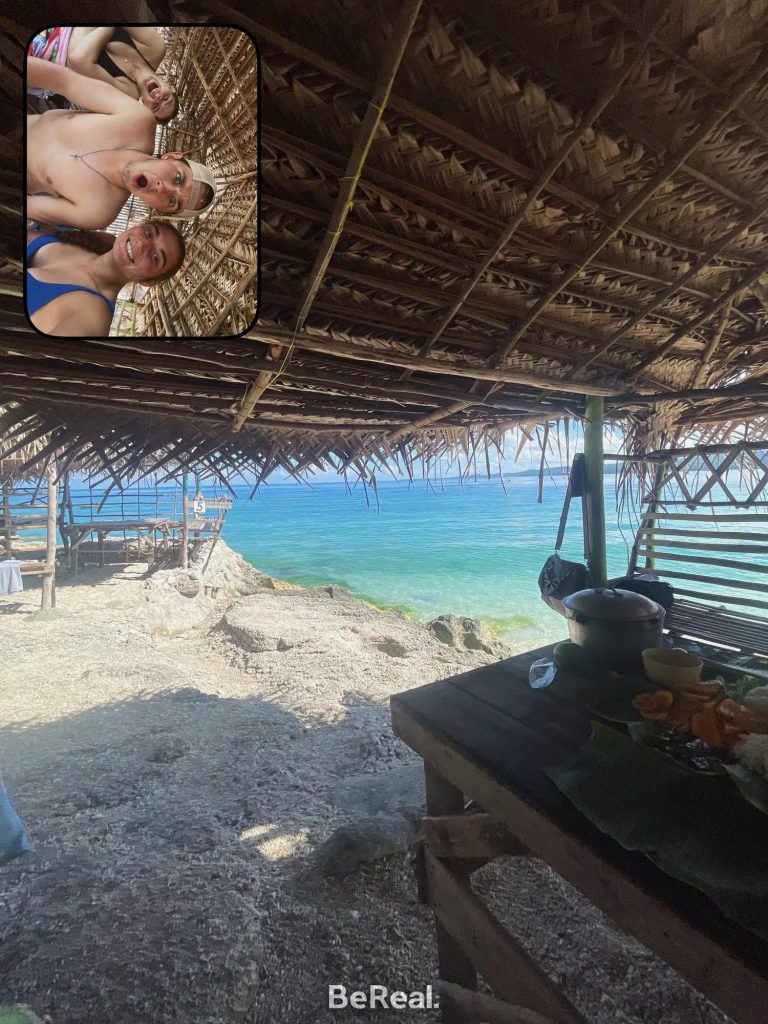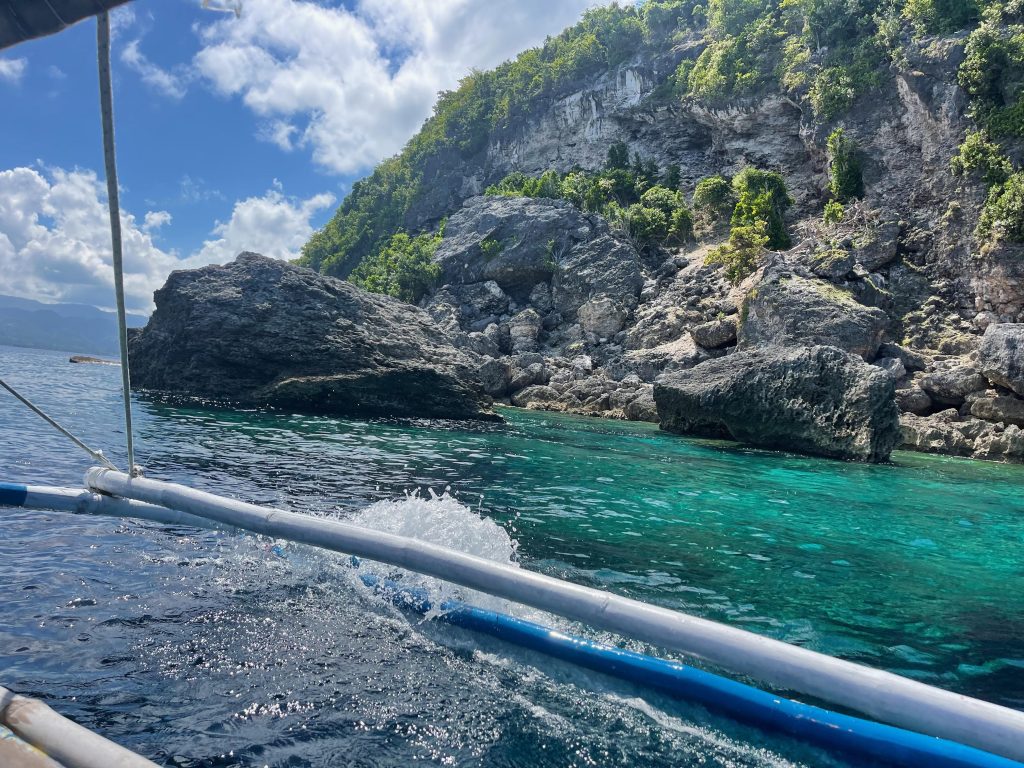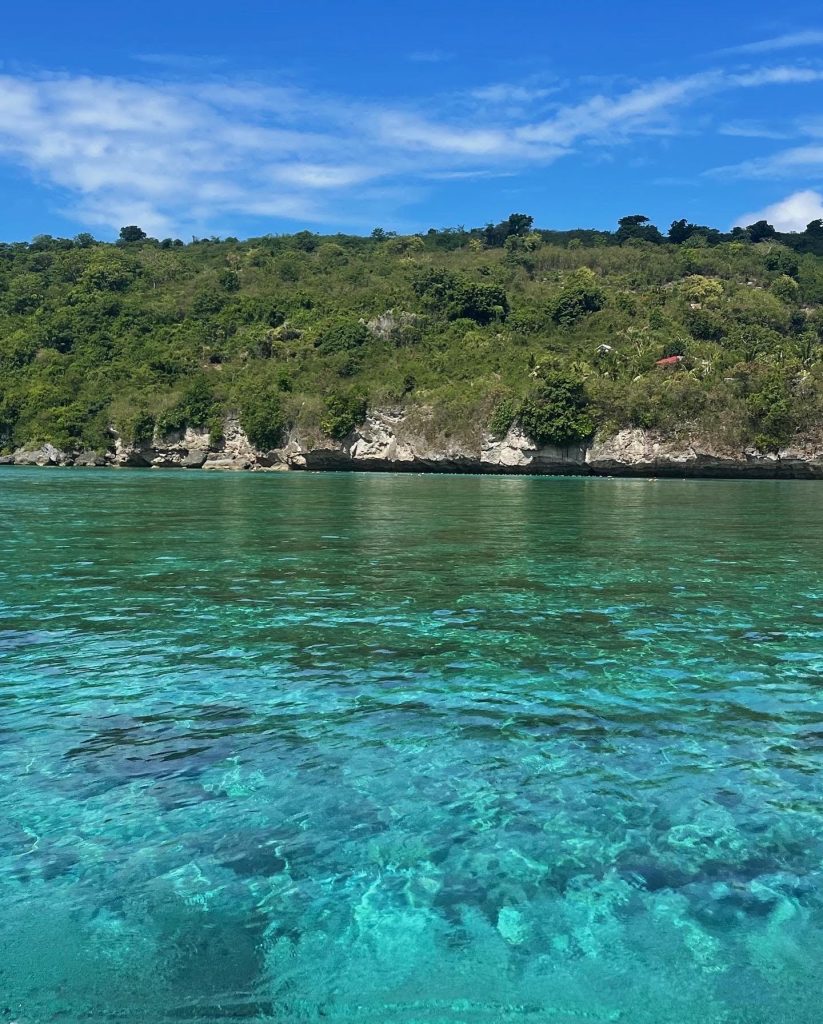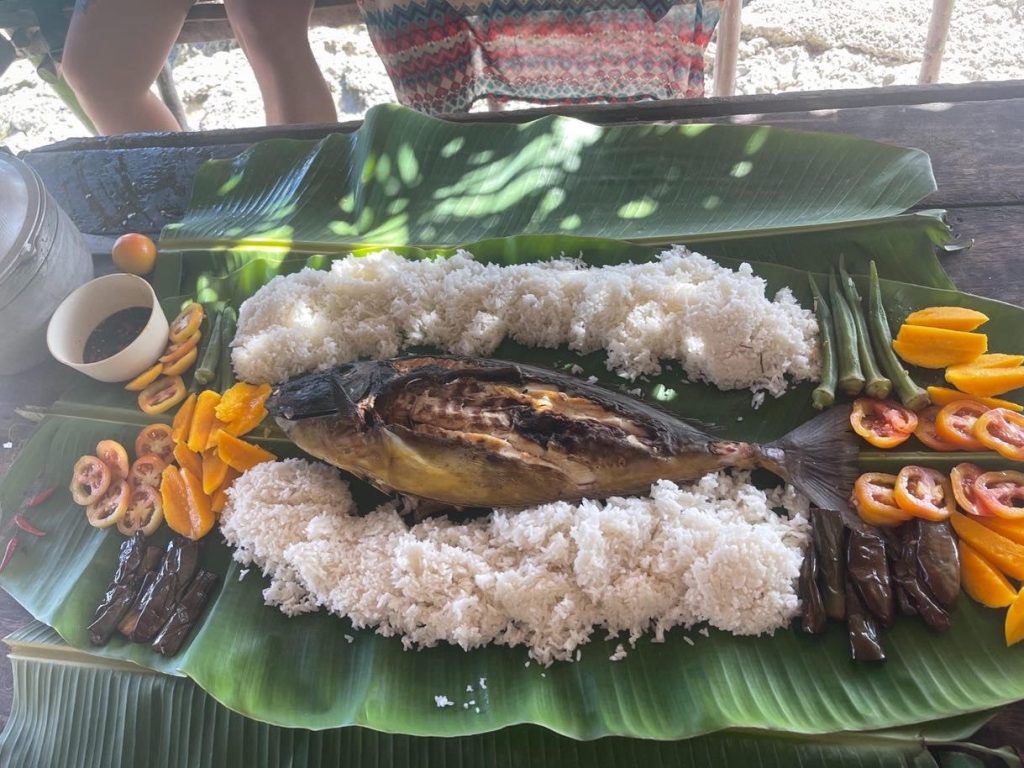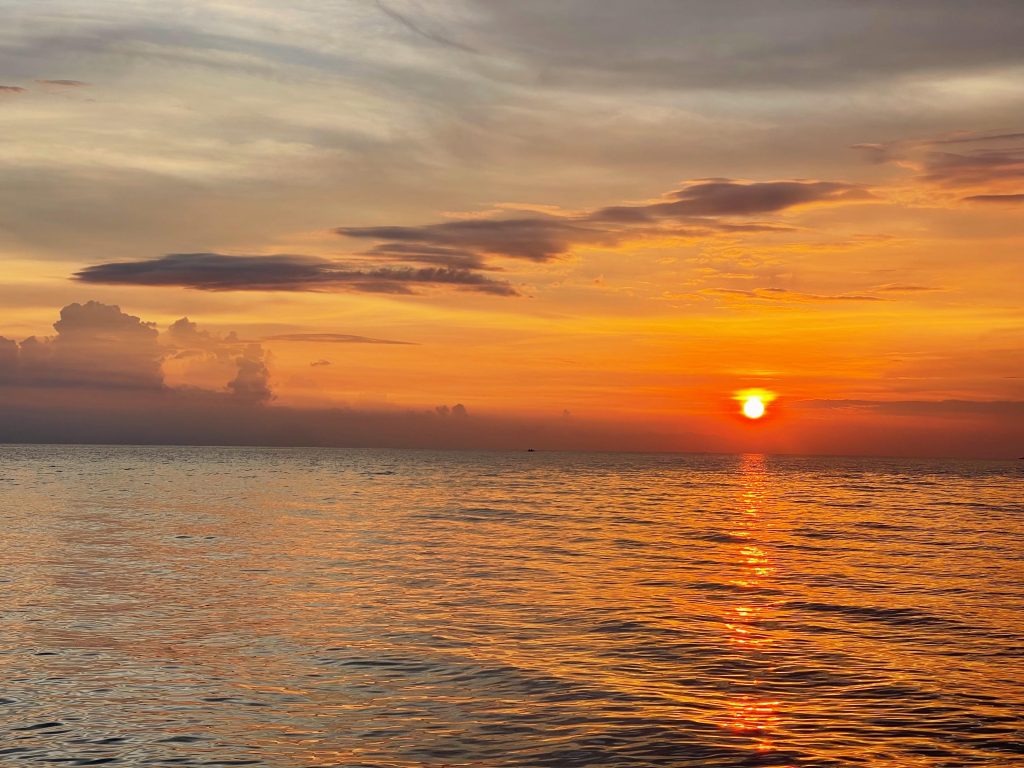On Monday, we transferred to Ate Hannah’s subteam. Their Barangay was rather small, so everyone was sleeping very close to each other. This wasn’t an issue at all as everyone got along very well and we spent more time sitting outside together since there wasn’t much space inside. We had the opportunity to go grocery shopping with them and pick out items for the meals that they were planning to make for the week. At this specific Barangay, there were so many kids playing basketball at the Barangay hall the entire time we were there. This was by far the most densely populated Barangay that we visited. We were immediately bombarded by at least 20 kids/ teenagers. The kids wanted to give us high fives and fist bumps. It was so rewarding to see their faces light up after talking to us getting a high five. Lukas and I also had the opportunity to play badminton with some of the children which was a really cool experience. There were also some teenage boys that came up to Abi and I and called us beautiful and tried to give us hugs. This was kind of an uncomfortable experience, but we knew that they were just surprised to see foreigners, so we understood. Tuesday was scheduled to be their data editing day, However, Ate Hannah and her team took us to Tagaytay for the morning since they were caught up on their editing. We saw Taal volcano, rode horses, ate a traditional Filipino lunch, made TikToks, and looked at the souvenir shops. This was a very fun experience and I am so glad that they took the time to take us to Tagaytay! Personally, I value the sightseeing experiences so much because it helps me to gain a deeper understanding of Filipino culture!
On Wednesday, we transferred to Ate Rose’s subteam. This time, we were able to stay in the house of a family who was out of town. We were so grateful to have unlimited running water and a bed to sleep in! Once we arrived there, we met Sir Chance, one of the dietary researchers on her team. He was very outgoing and had many insightful and eye opening things to say about healthcare. First, he asked us if healthcare is affordable and accessible to all in the US, and we explained to him that it is not. Healthcare is so expensive that you either need to have quality insurance coverage through your employer, enough money to pay out of pocket for healthcare (only the rich can do this), or pay a lot of money for an insurance policy if you are not able to get one through your employer. As one may assume, many people are not able to afford insurance or have insurance provided to them. Additionally, insurance policies do not cover all expenses, so many people are stuck paying out of pocket which is too expensive for some households. We then explained that although we do not have universal healthcare, we are very blessed to have great technologies that save so many lives. Sir Chance then told us that Filipinos are starting to invest in insurance policies, but the majority do not have insurance coverage yet. He also explained that nutrition and holistic approaches must be used to prevent non communicable diseases. He tells his respondents that their answers to the surveys can greatly influence policies and technologies that can prevent diseases such as cancer and heart disease. He specifically said that one must change their lifestyle to improve their overall health and well being. He also said that although Filipino medical technologies are not nearly as advanced as they are in the US, that most working class and poor Filipinos are unable to afford them. This makes me incredibly sad to hear. However, I am so happy that there are institutions like FNRI that work tirelessly to implement programs and policies that will benefit the health of all Filipinos. Although this conversation was not directly a part of the NNS, I am so grateful for our conversation with him because it was very eye opening. On Thursday morning, we accompanied researchers in the field again. Lukas, Abi, and I were each able to take the blood pressure of a respondent. I felt so much more confident hearing the sounds and recording the systolic blood pressure over the diastolic blood pressure. I also had an easier time finding the MIL- this is where you stop feeling a pulse then add 30 to that number. When taking blood pressure, we learned that it is more accurate early in the morning. We also learned that we must have them put their feet flat on the ground, ask if they are taking any medications, and ask if they have eaten or had coffee prior to the measurement. We went to a few households and observed the interviews being conducted as well. We then went back to where we were staying to eat lunch and pack our things. Ate Rose then explained to us that her team is going to the southernmost part of the Philippines next. In this part of the Philippines, they speak a completely different dialect, so they do not understand Tagalog well. When this language barrier occurs, they will need to rely on the Barangay health workers to translate for them. Since I don’t know Tagalog, I understand how intimidating the language barrier can be because I have had to have someone translate the questions for me when I interview respondents. Hearing this helps me understand the importance of the Barangay Health workers. Without their full cooperation, the NNS would not be possible.
Overall, we had another amazing field immersion experience and I am so sad that it is over! After sleeping on the ground and taking bucket showers, I have a new appreciation for my bed and unlimited running water in the US! I also now understand that air conditioning is a luxury that so many people do not have access to. I will never take this for granted again! I have a new perspective and appreciation for life that I will forever cherish.
On Friday, Abi, Lukas, Hunter, and I traveled to La Union (the surfing capitol of the Philippines) for the weekend. We stayed in an open air hostel, so the only thing separating our beds from the outside was a mosquito net and curtains. It did get kind of hot at night, but we had a fan, so it wasn’t too bad. On Saturday and Sunday, we took surfing lessons from locals. I was surprised at how quickly I was able to get the hang of it. On Sunday, I started figuring out how to catch a wave on my own. We also found several restaurants on the beach. Sunday afternoon, we went to a local pottery place and made our own pottery! This was a super cool and relaxing experience. We used a manual pottery wheel while shaping our pottery. After this, we had lunch and went to the bus station. All buses were full, so we ended up taking a van back to Manilla and arrived at our apartment around 1 am.
We had another great week and it doesn’t feel real that it is already our last week!
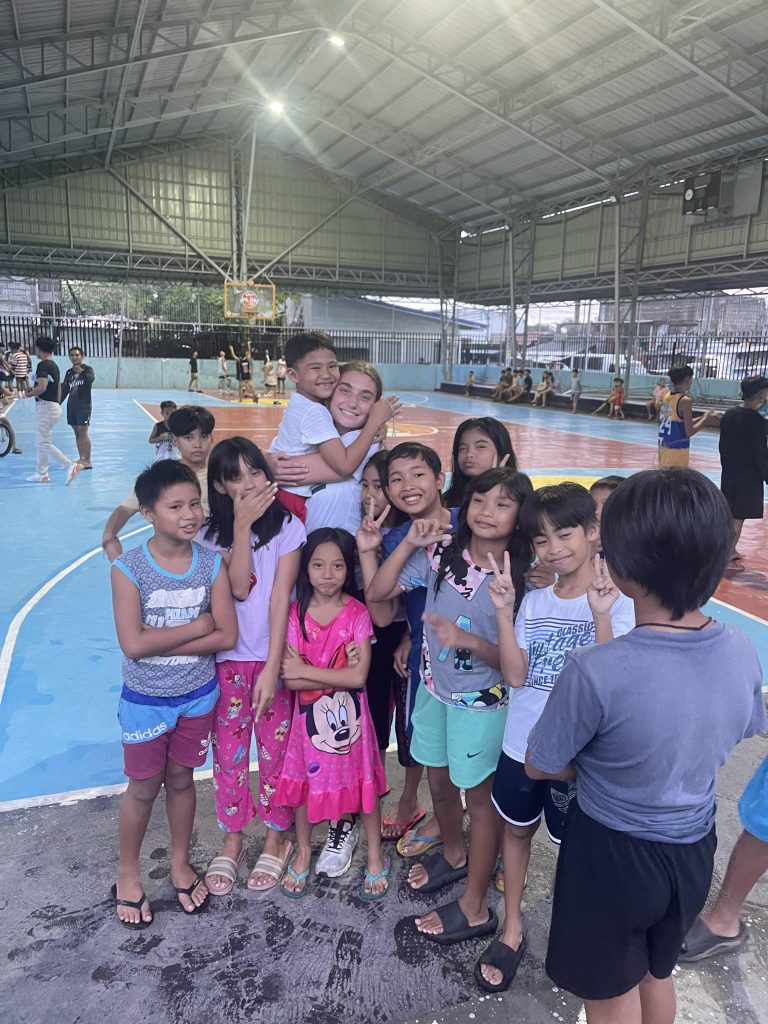
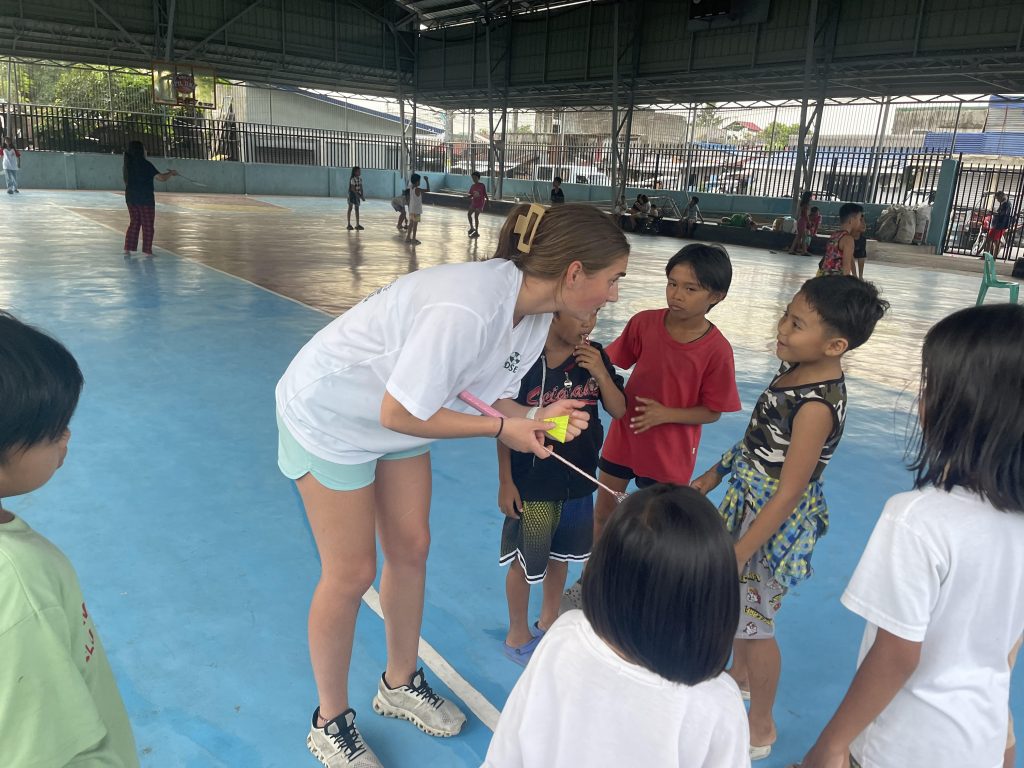
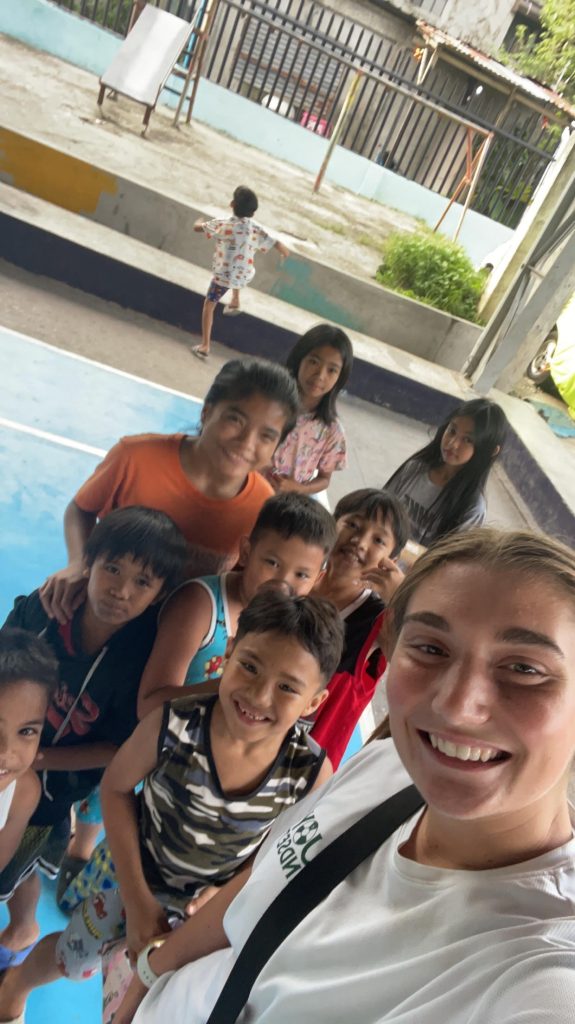
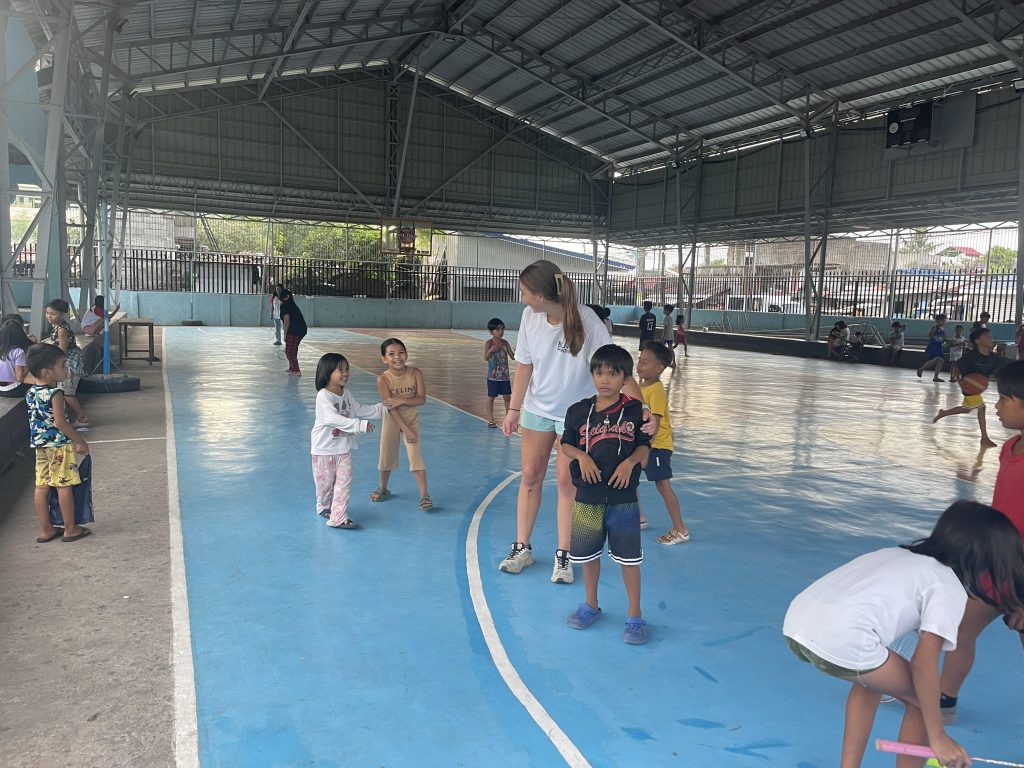
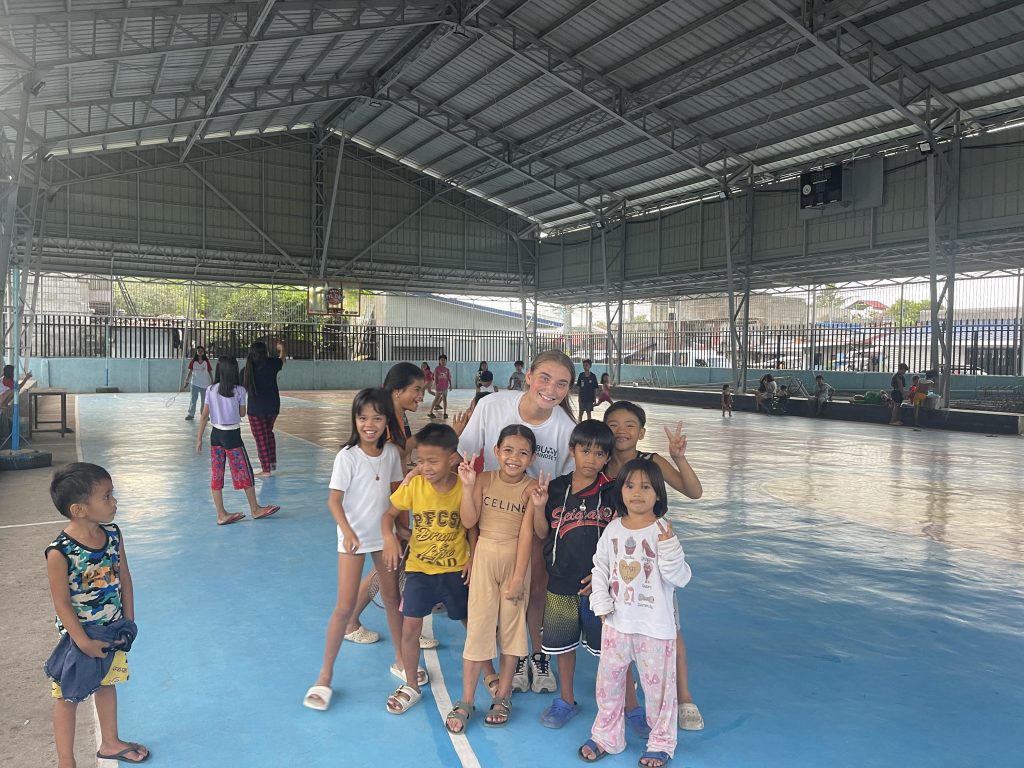
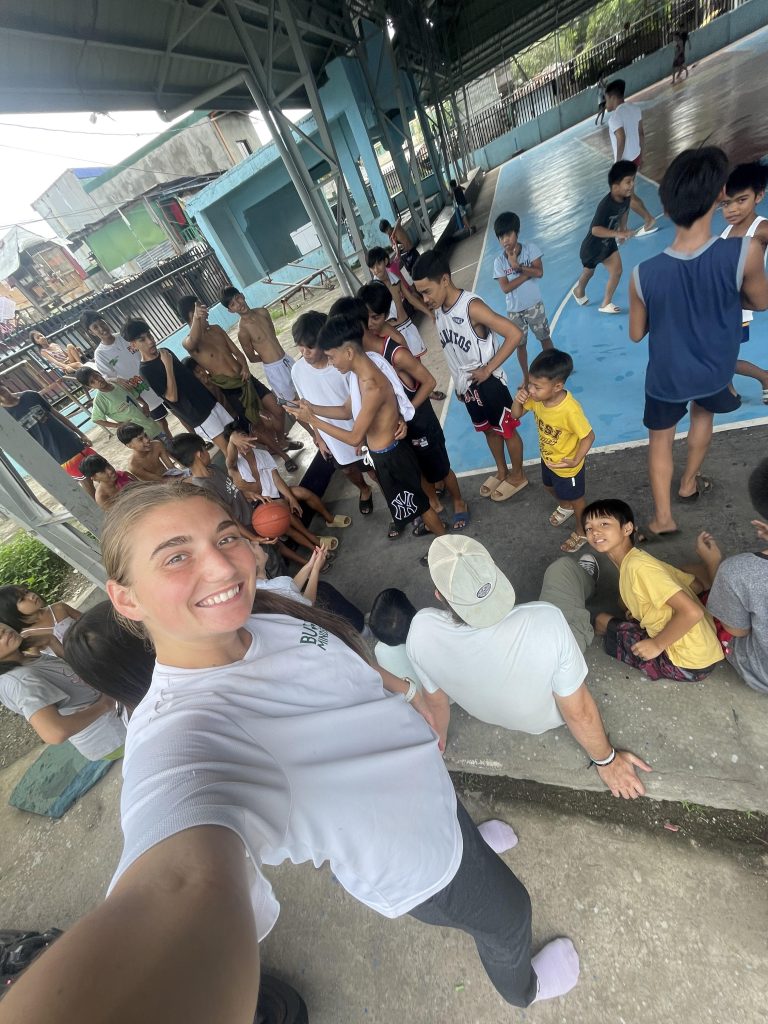
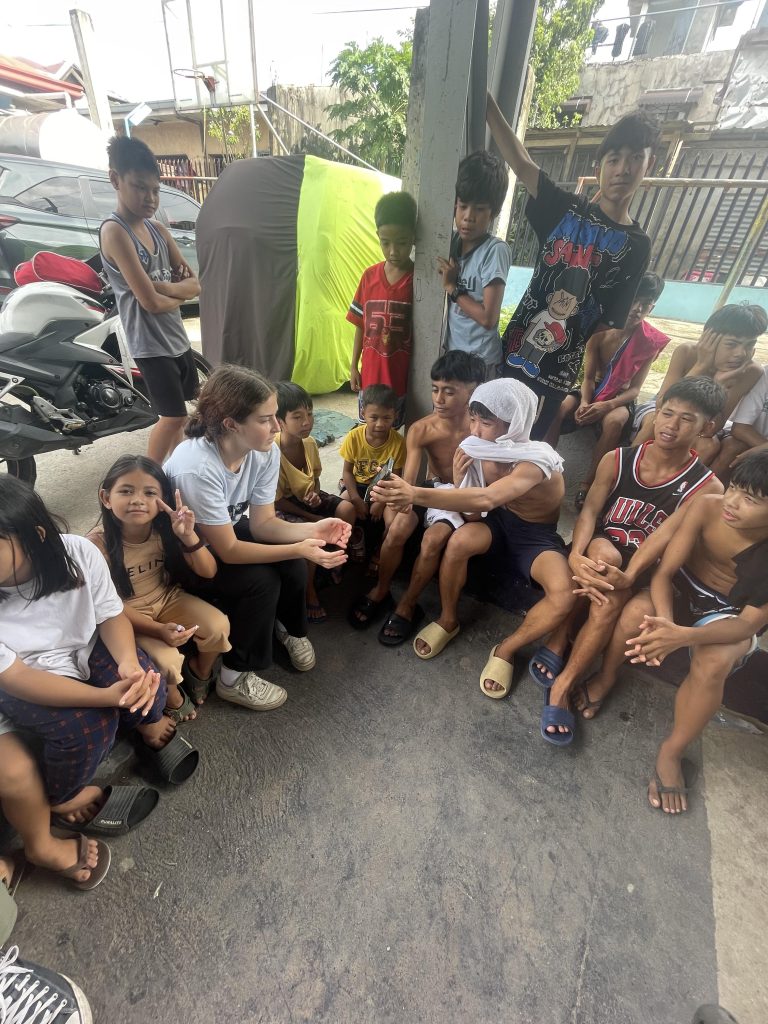
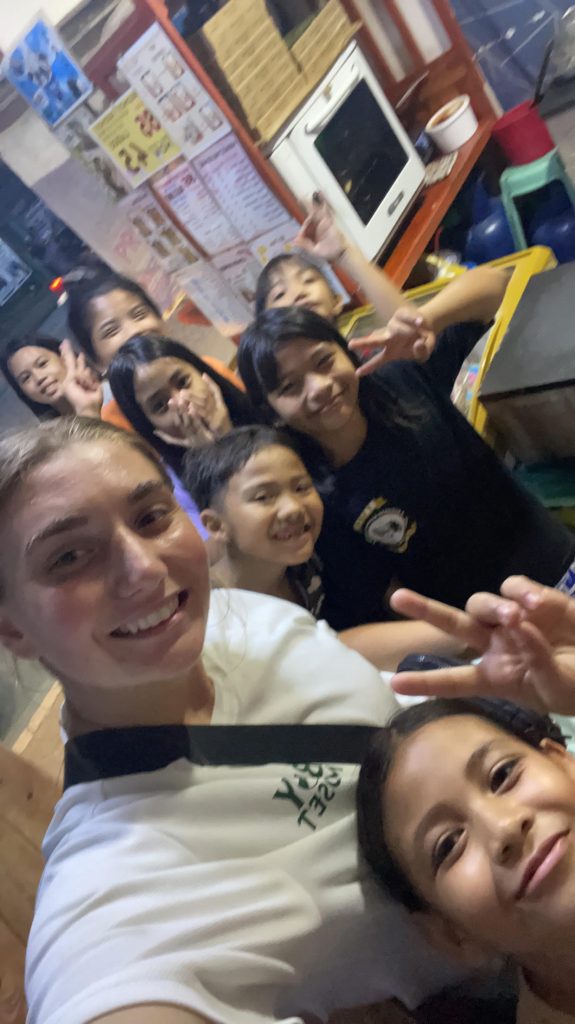
The collage above is with some of the kids we met in Cavite! They were so sweet!

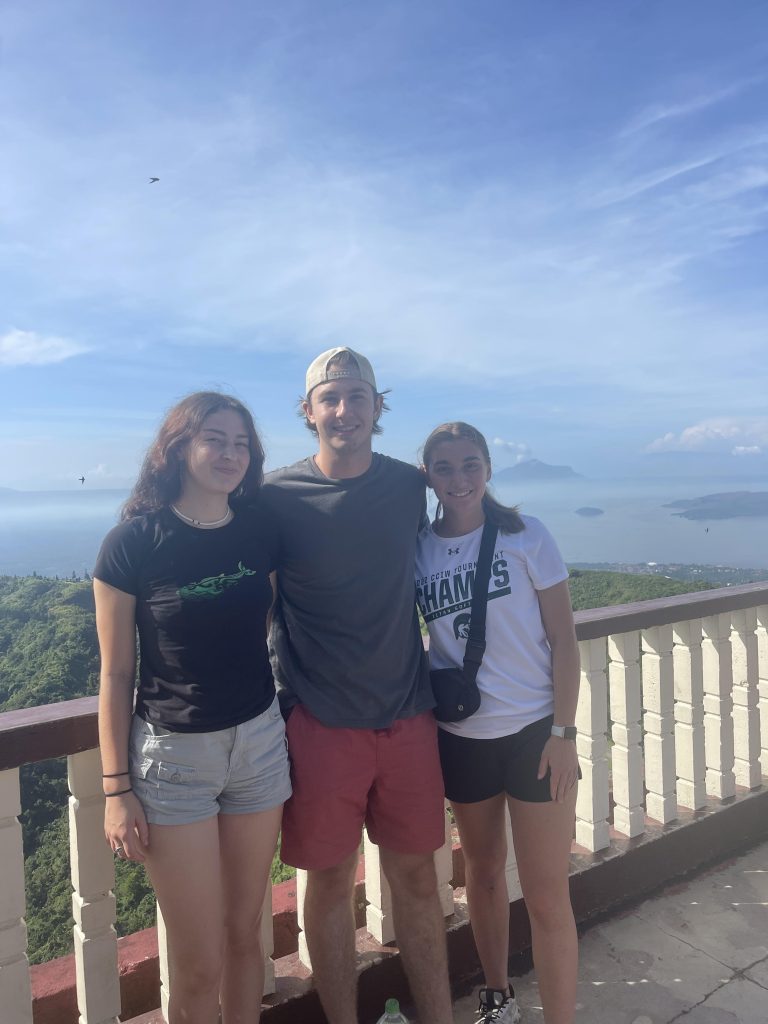
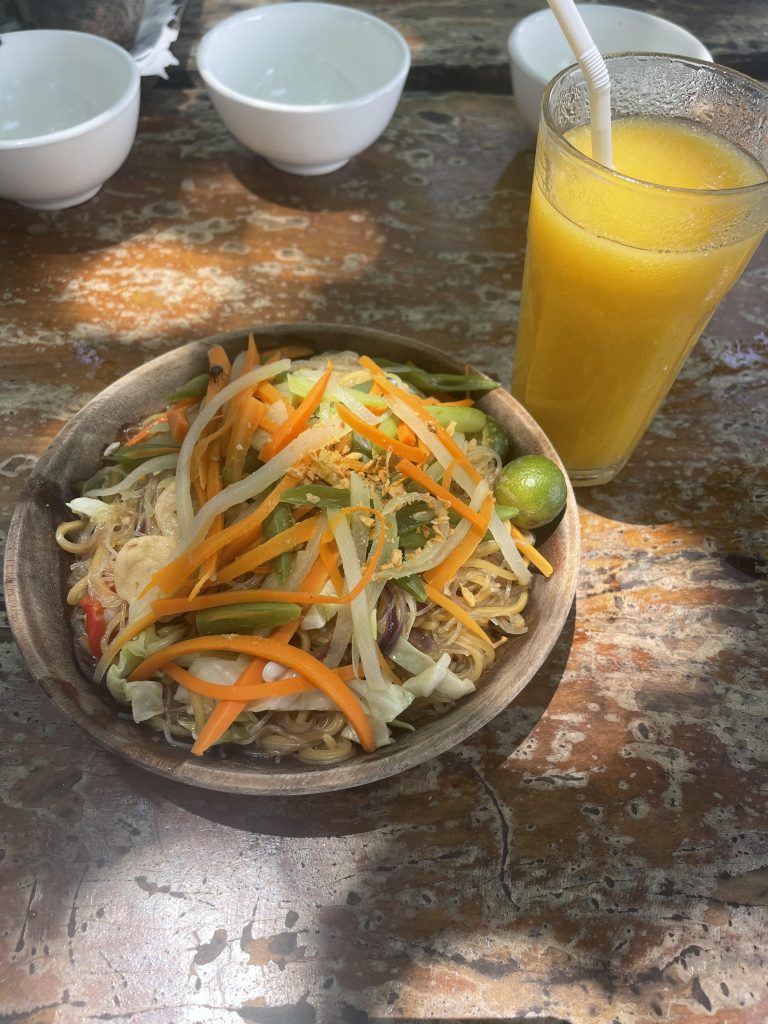
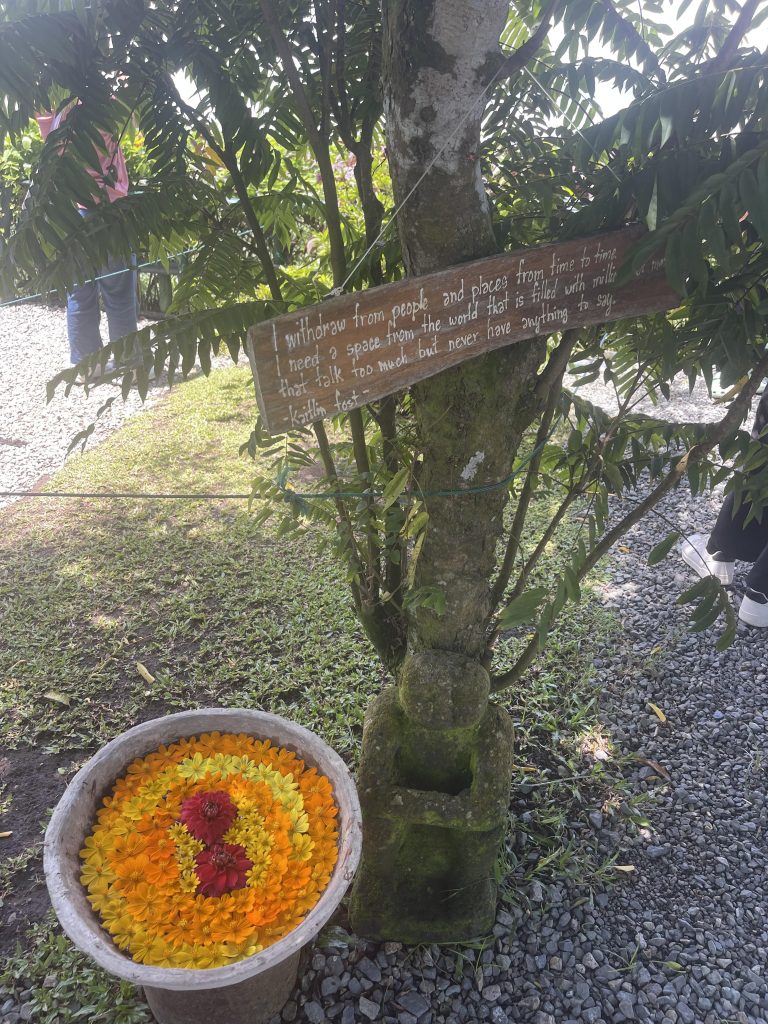
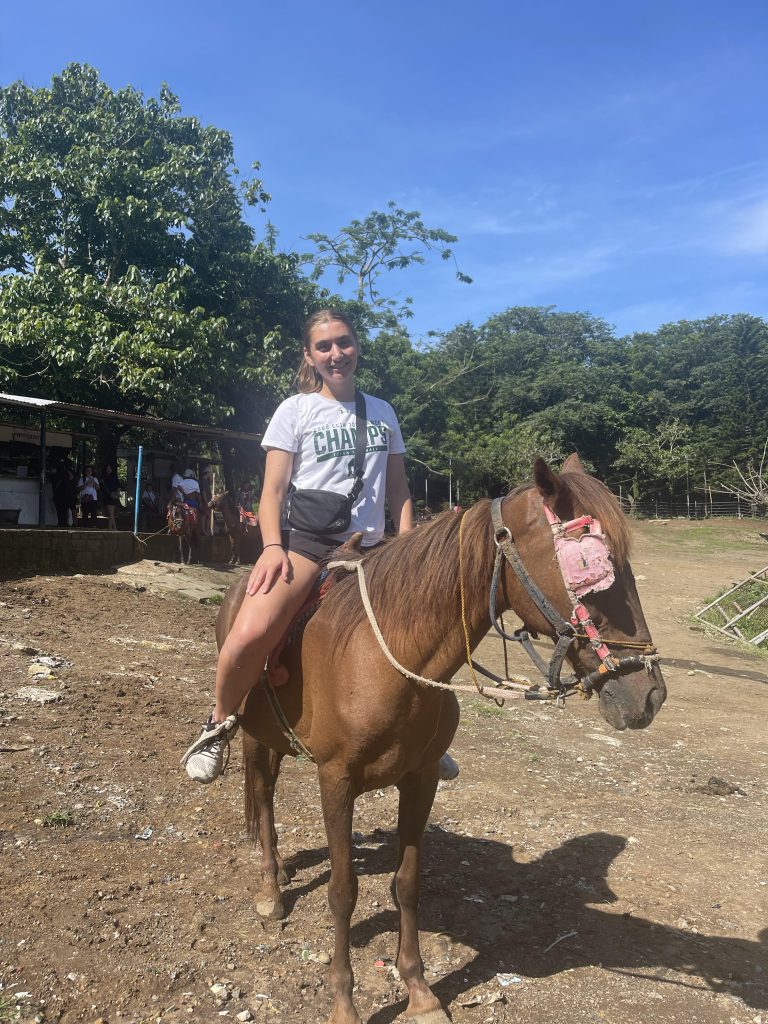
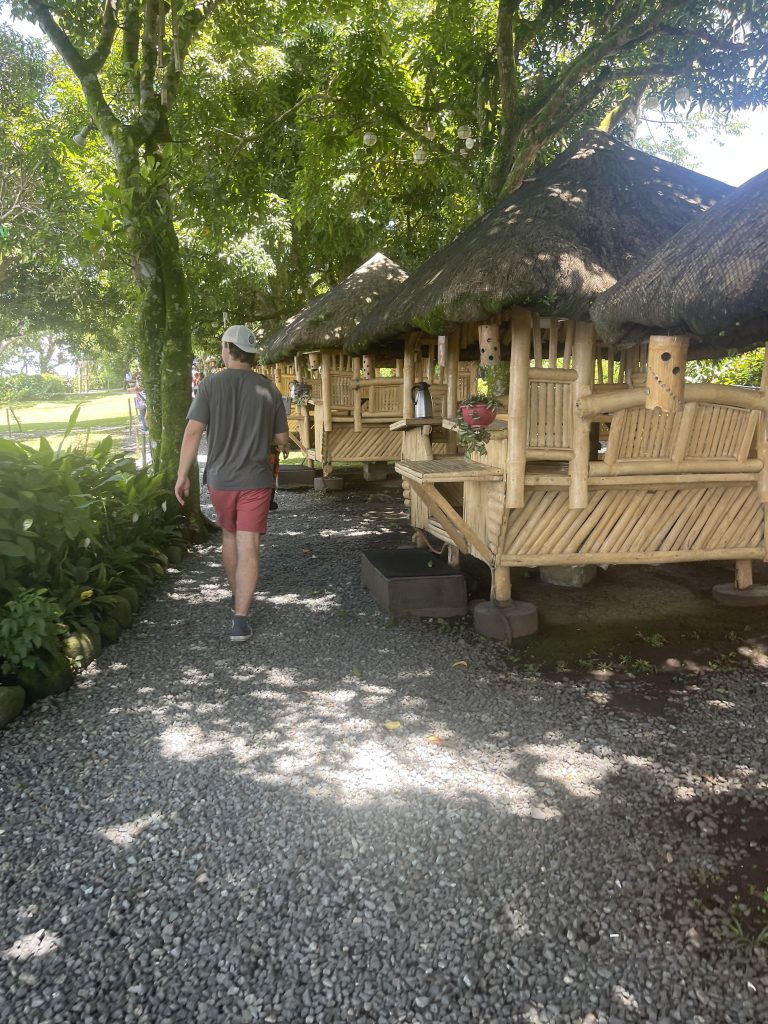
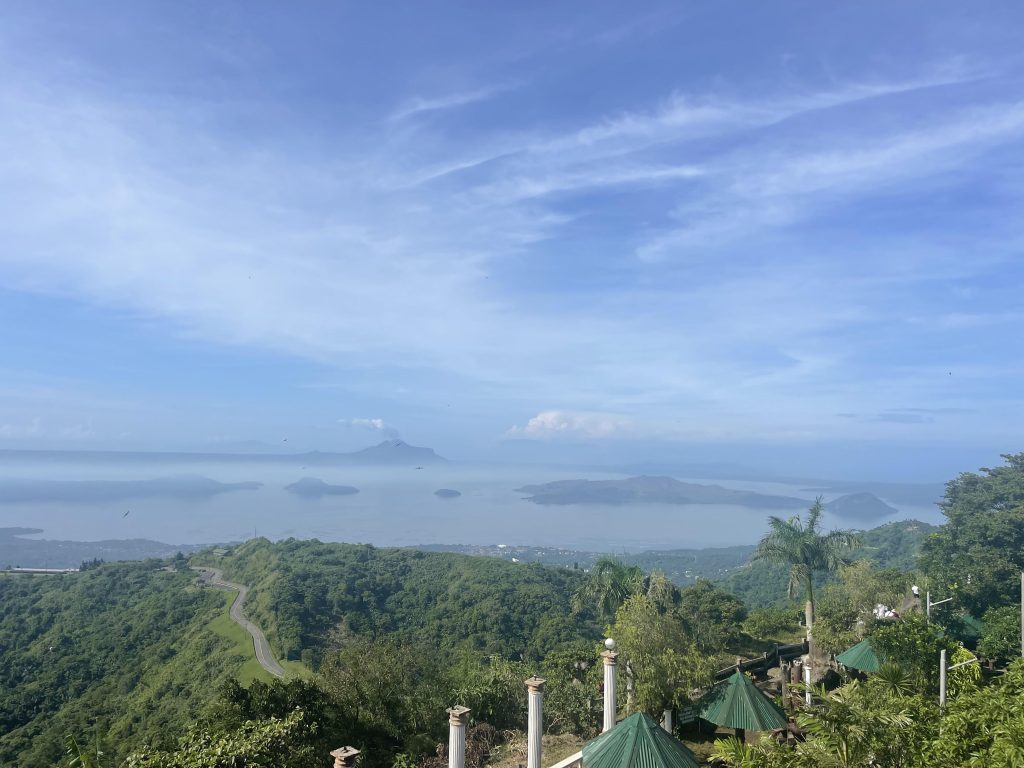
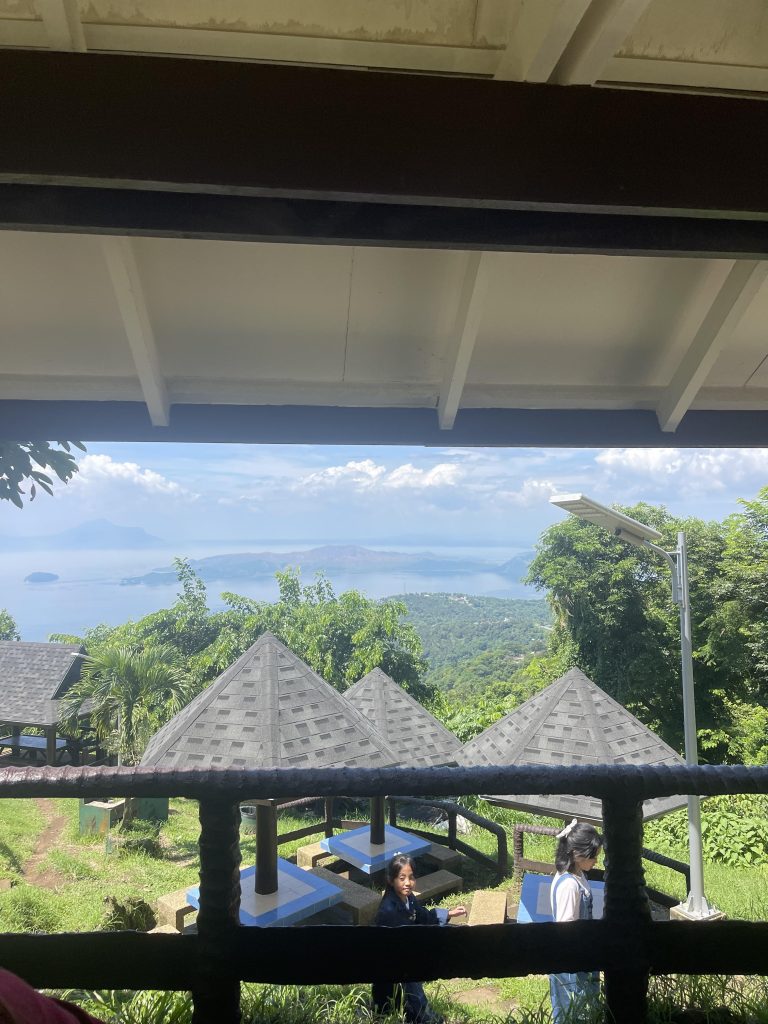
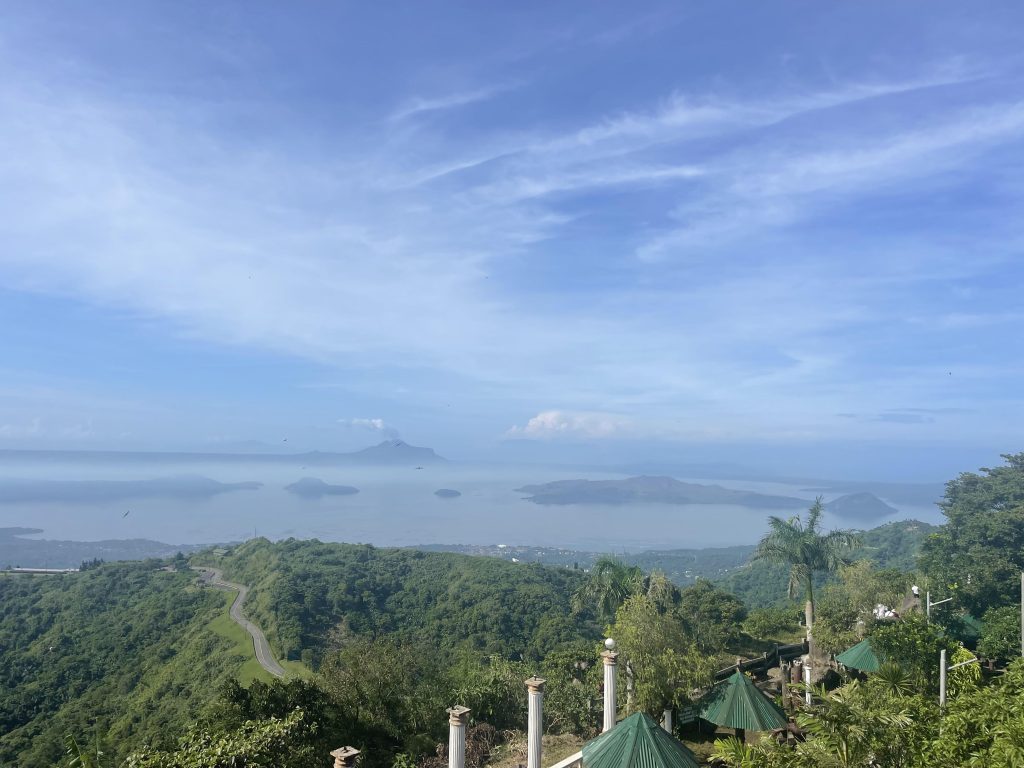
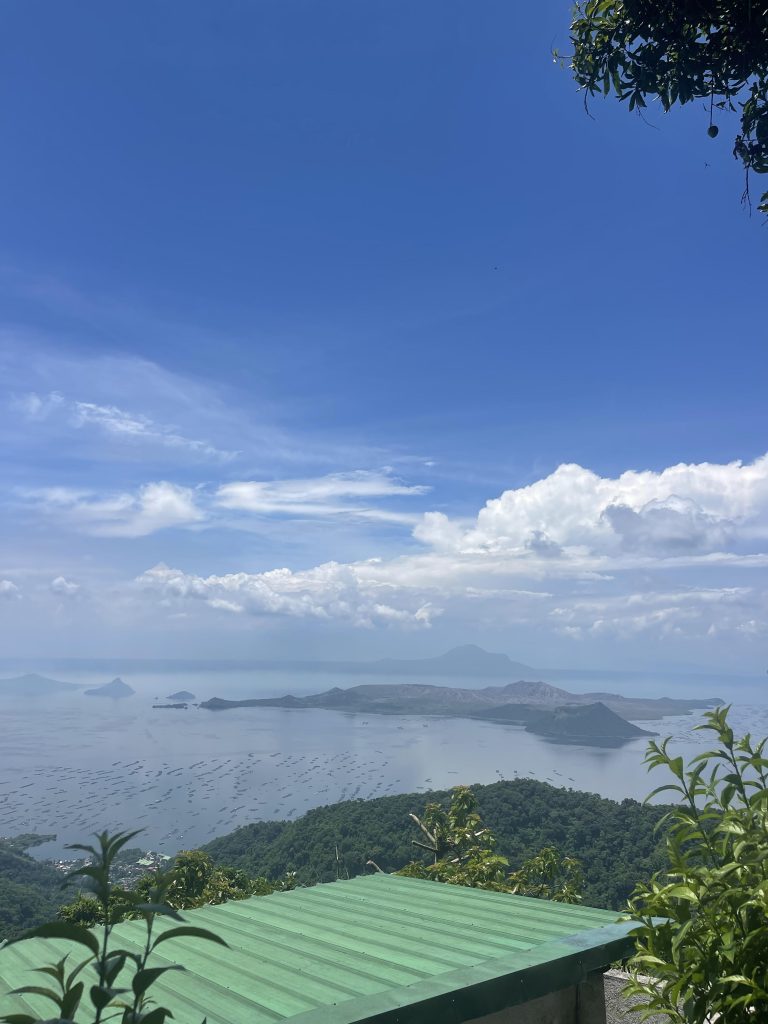
Some pictures from our trip to Tagaytay!

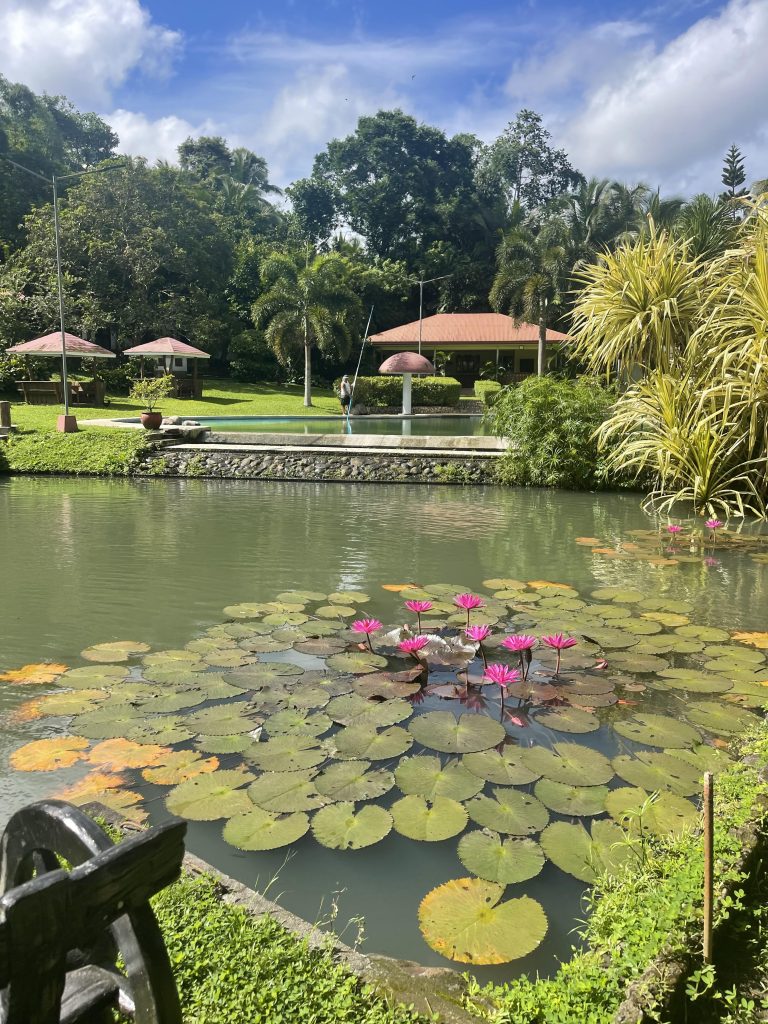
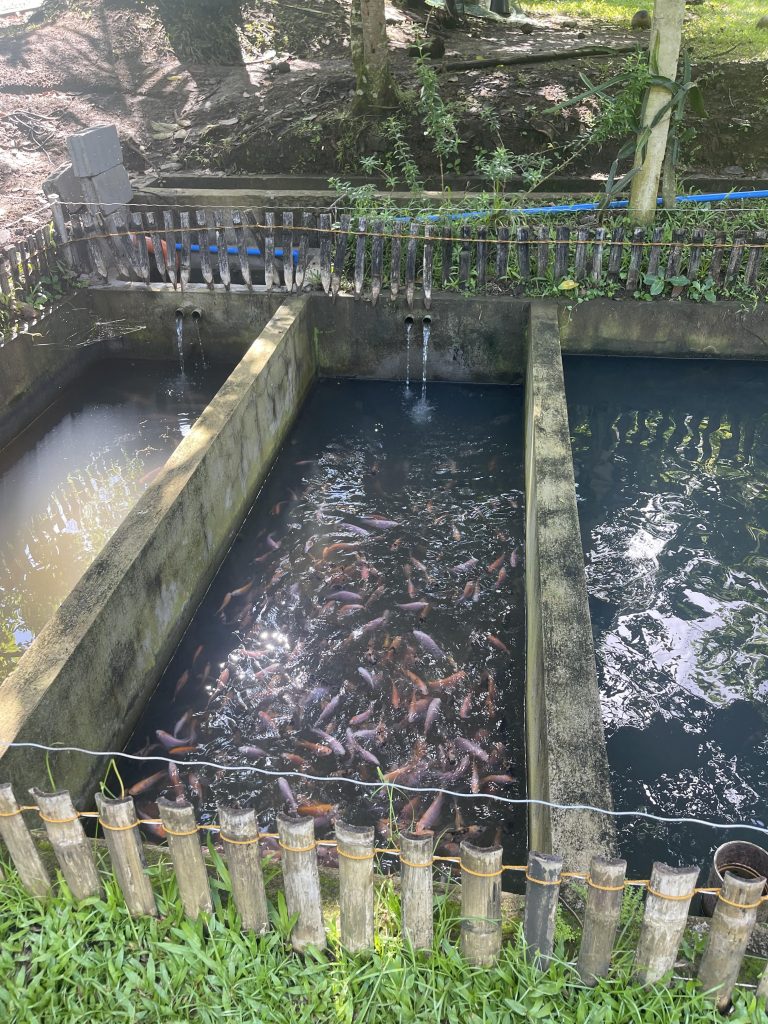
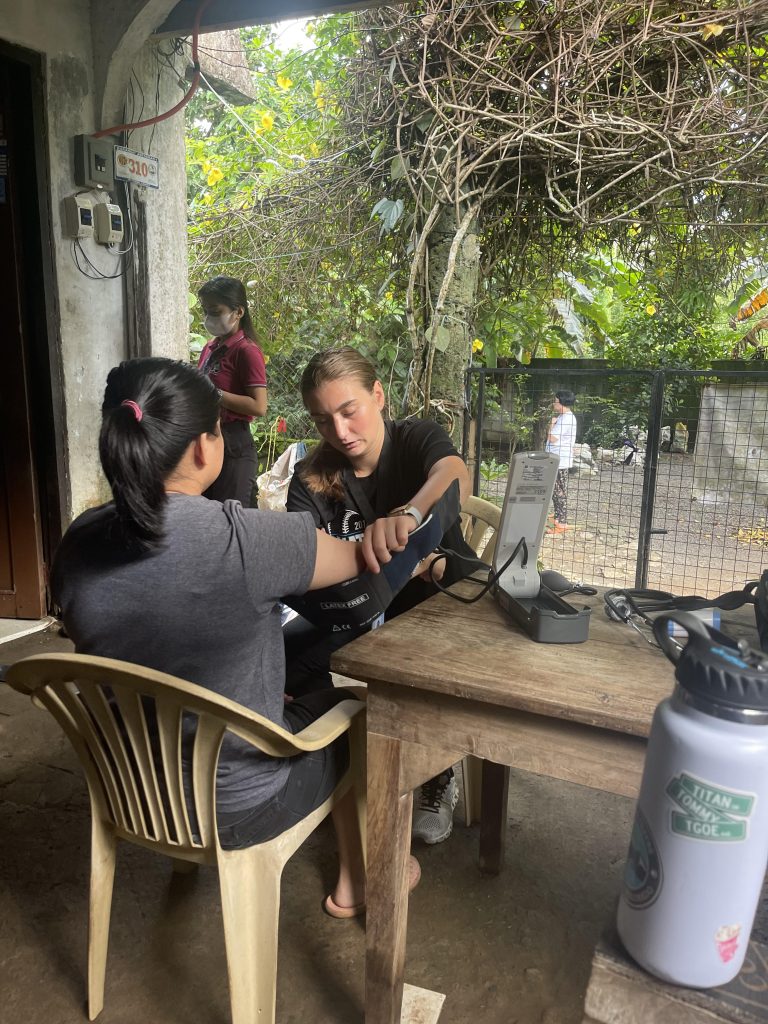
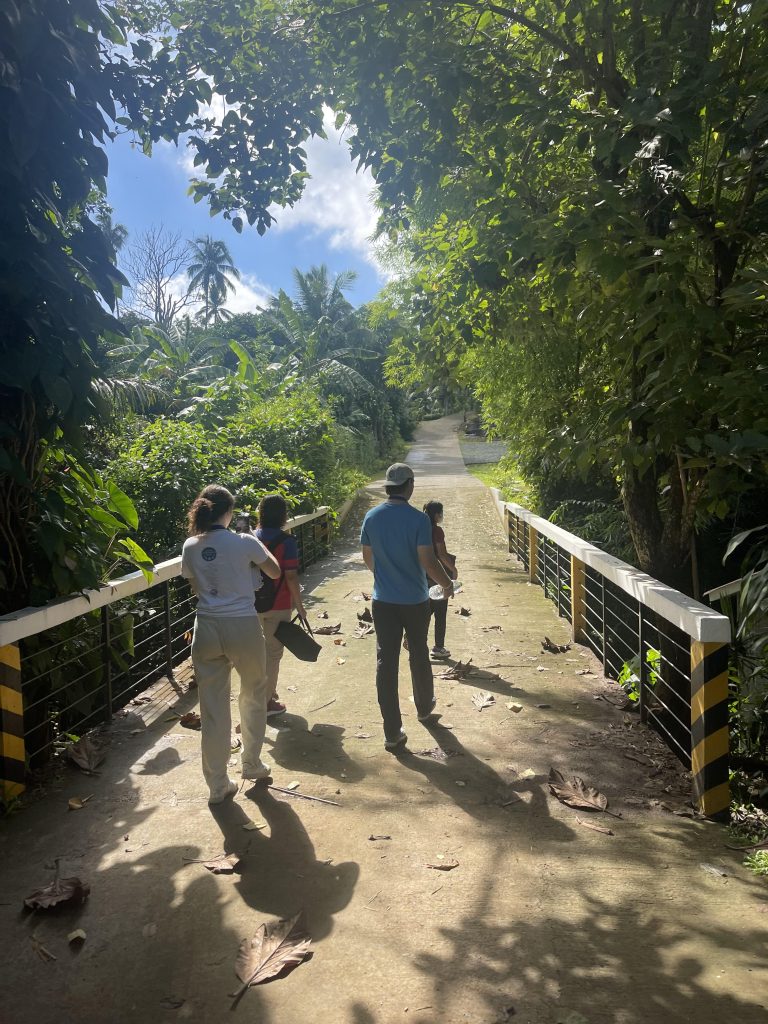
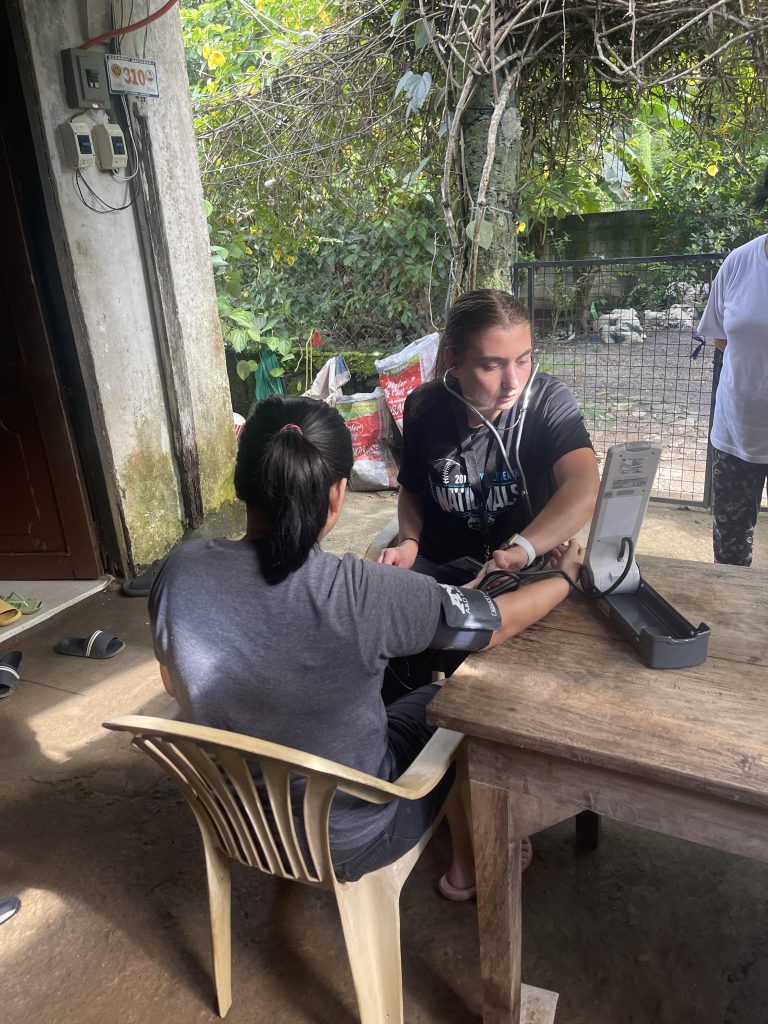
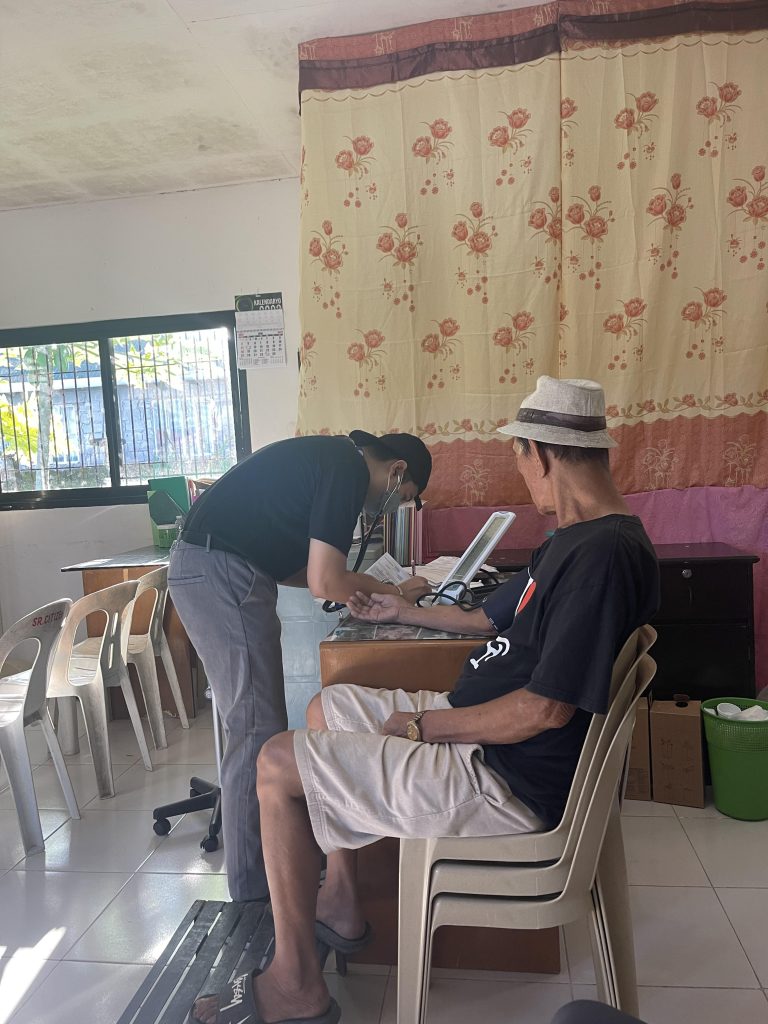
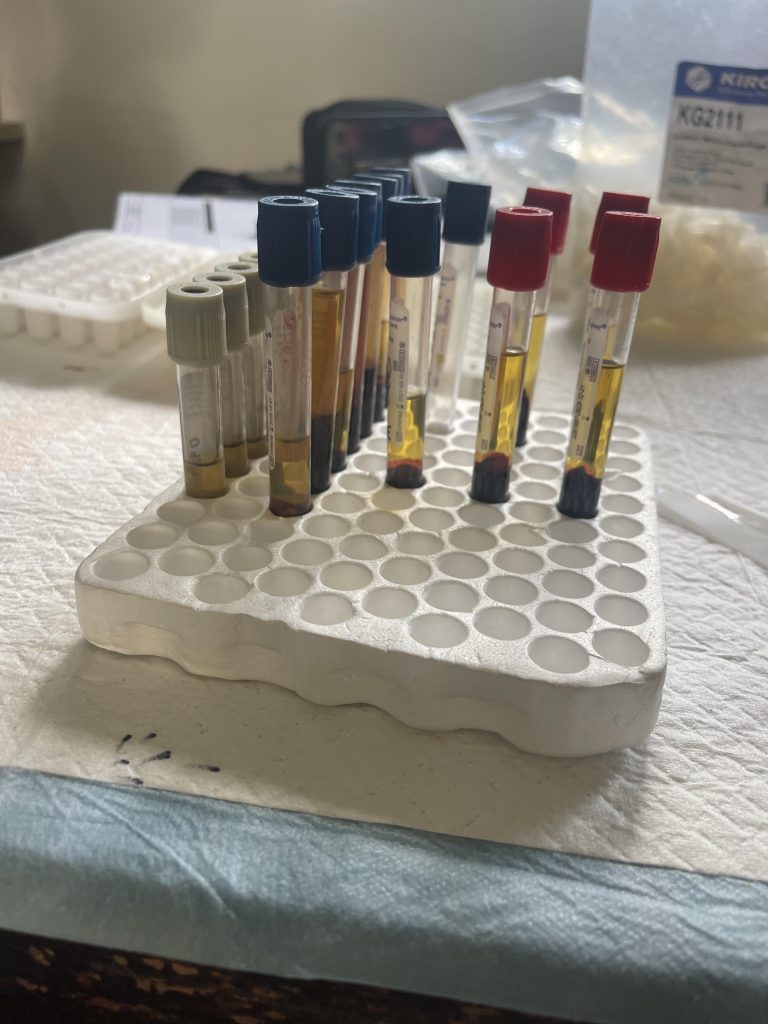
Some photos from our time in the field!
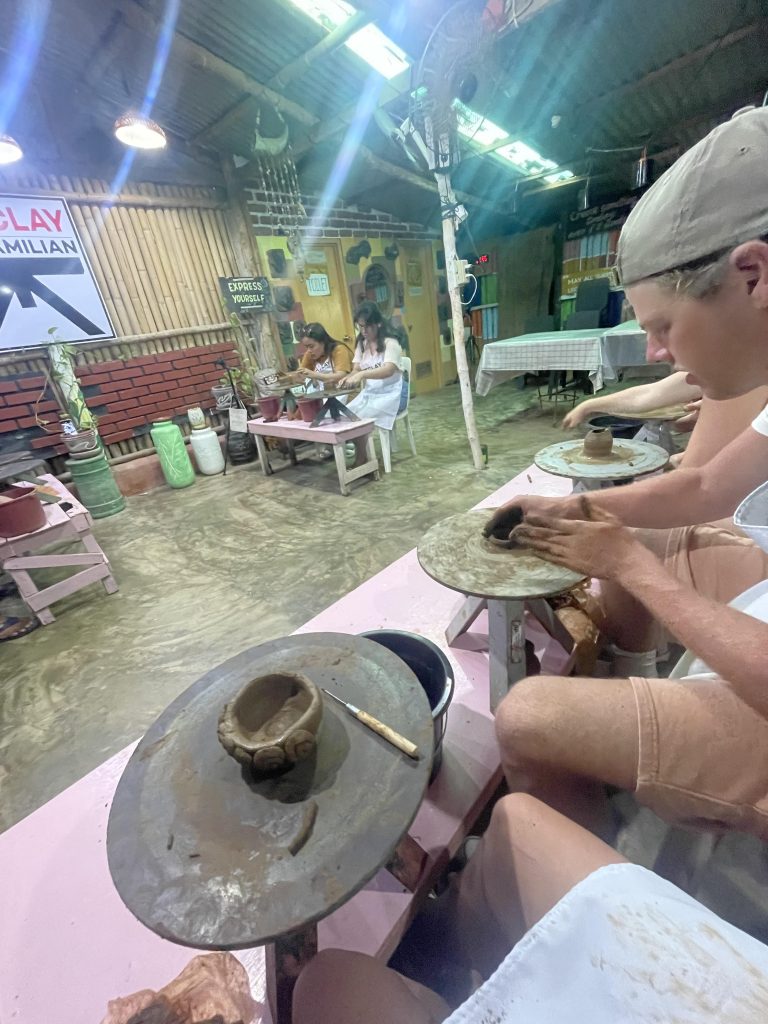
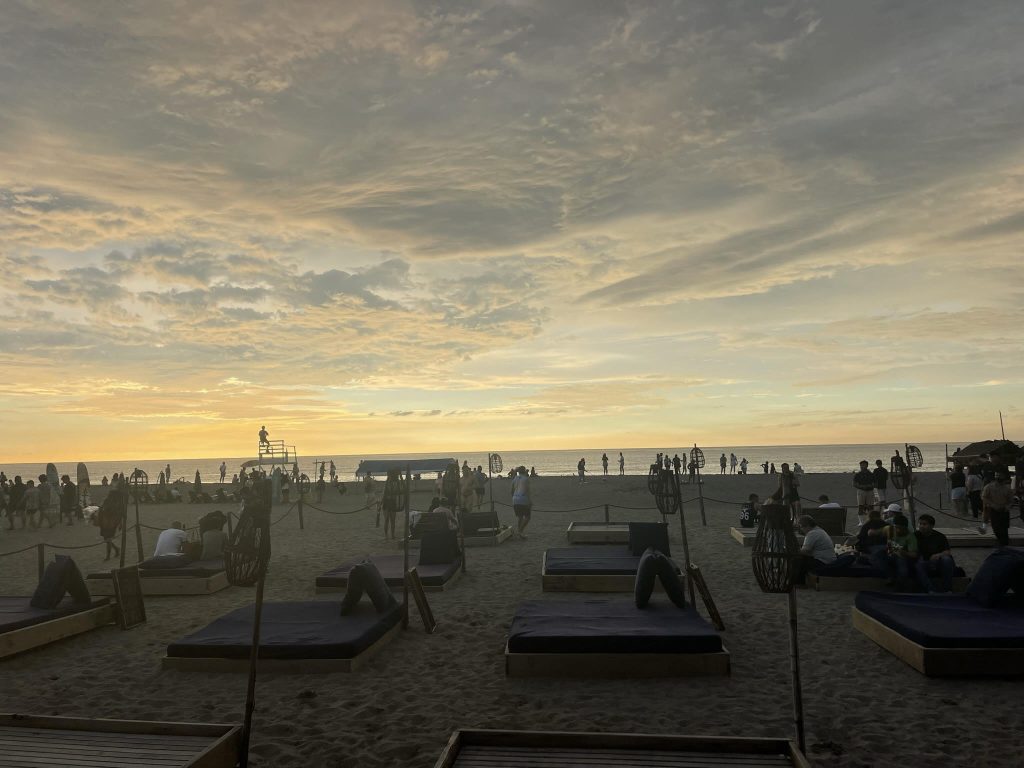
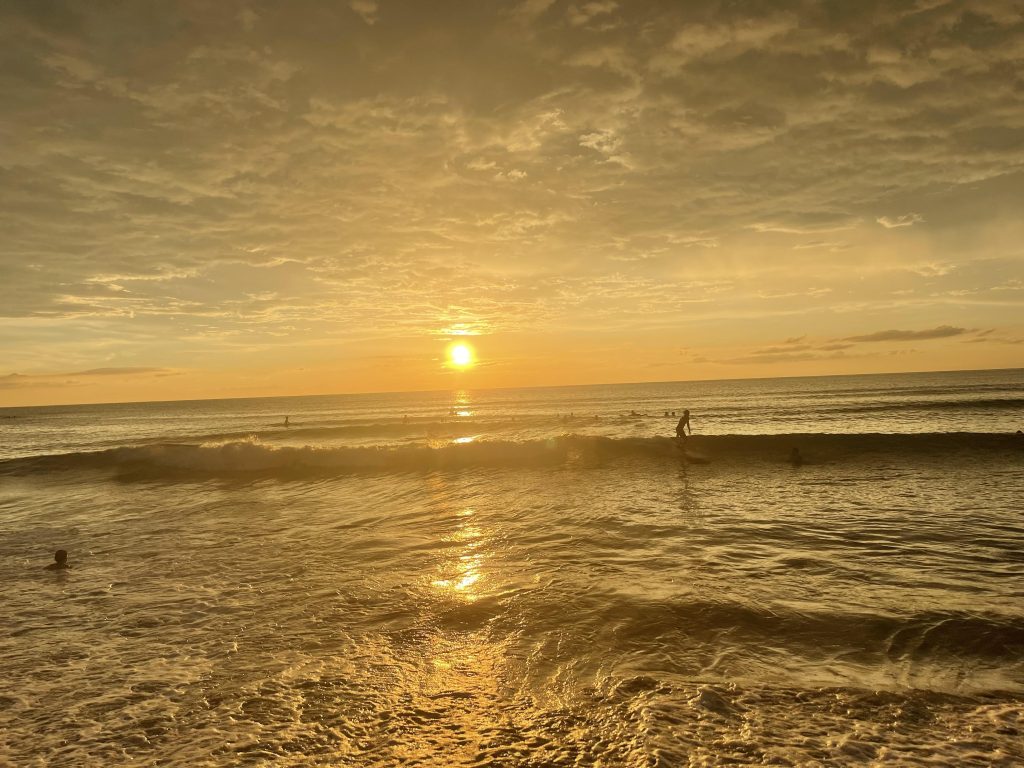
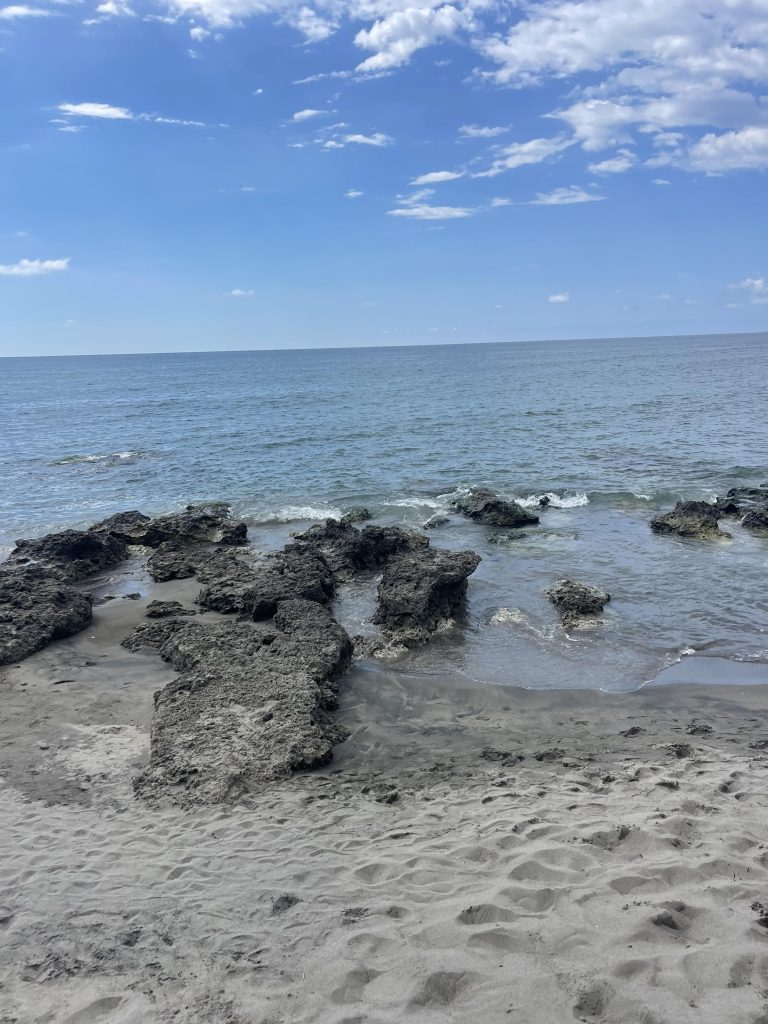
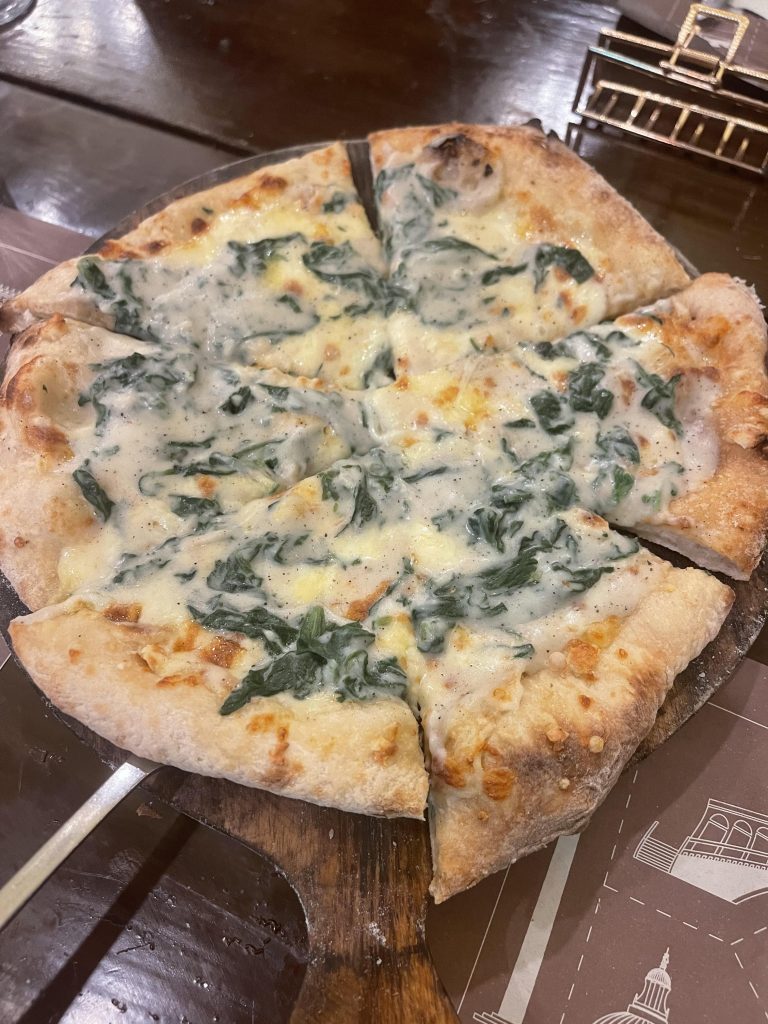
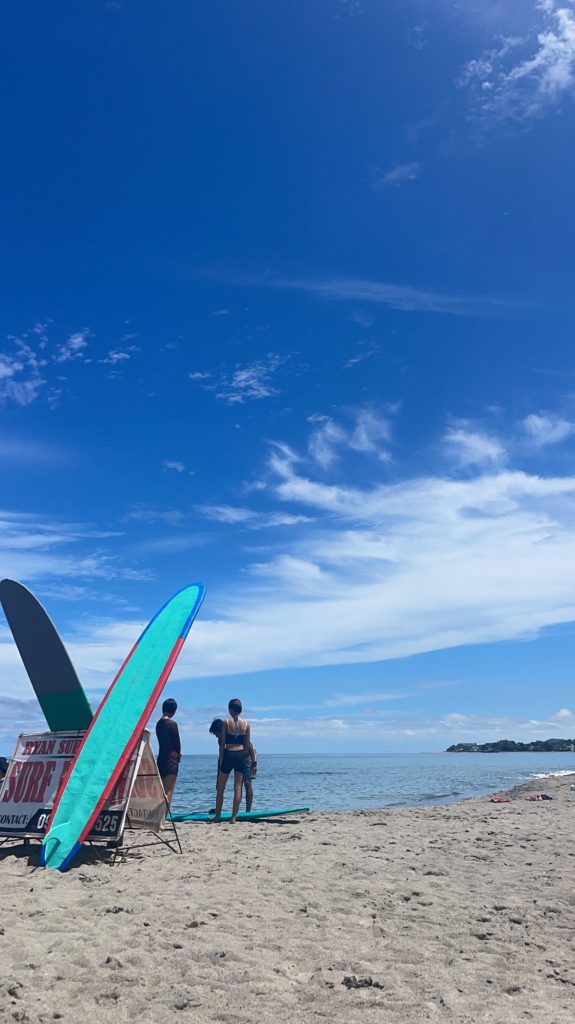
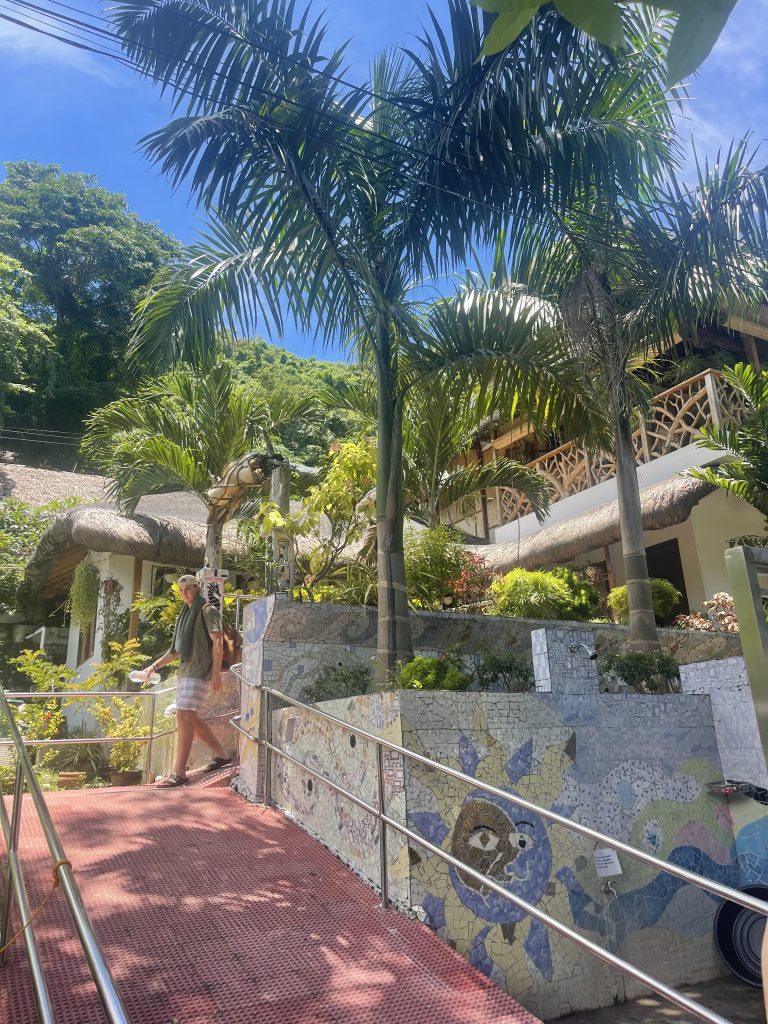
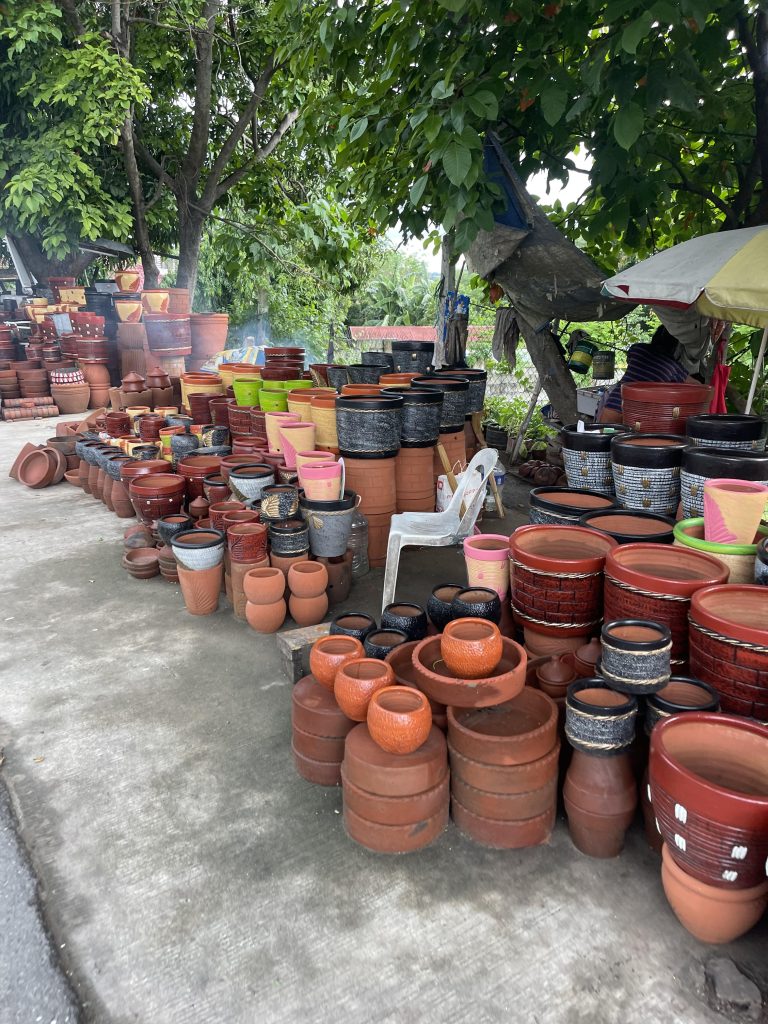
Some pictures from our trip to La Union!

